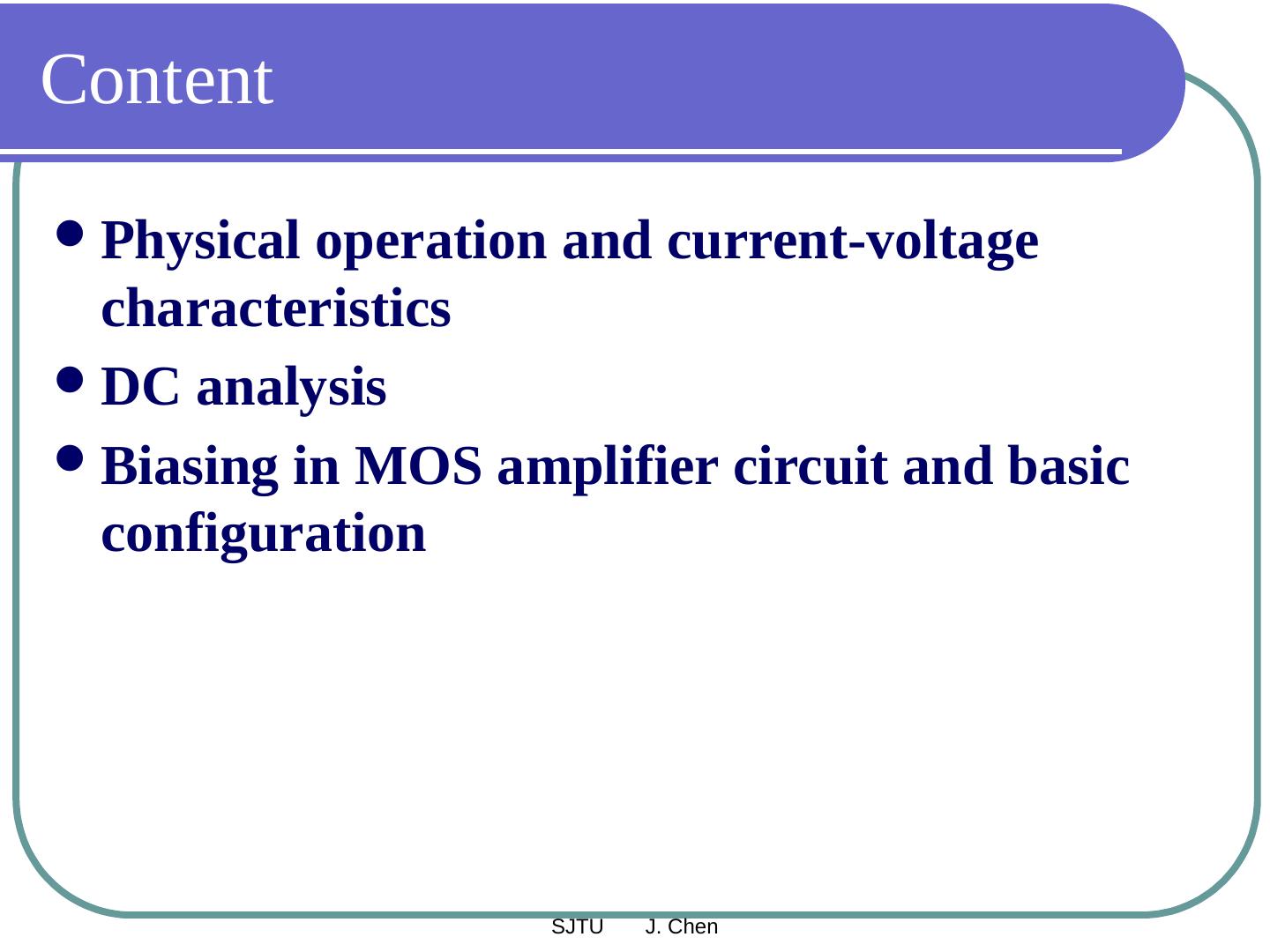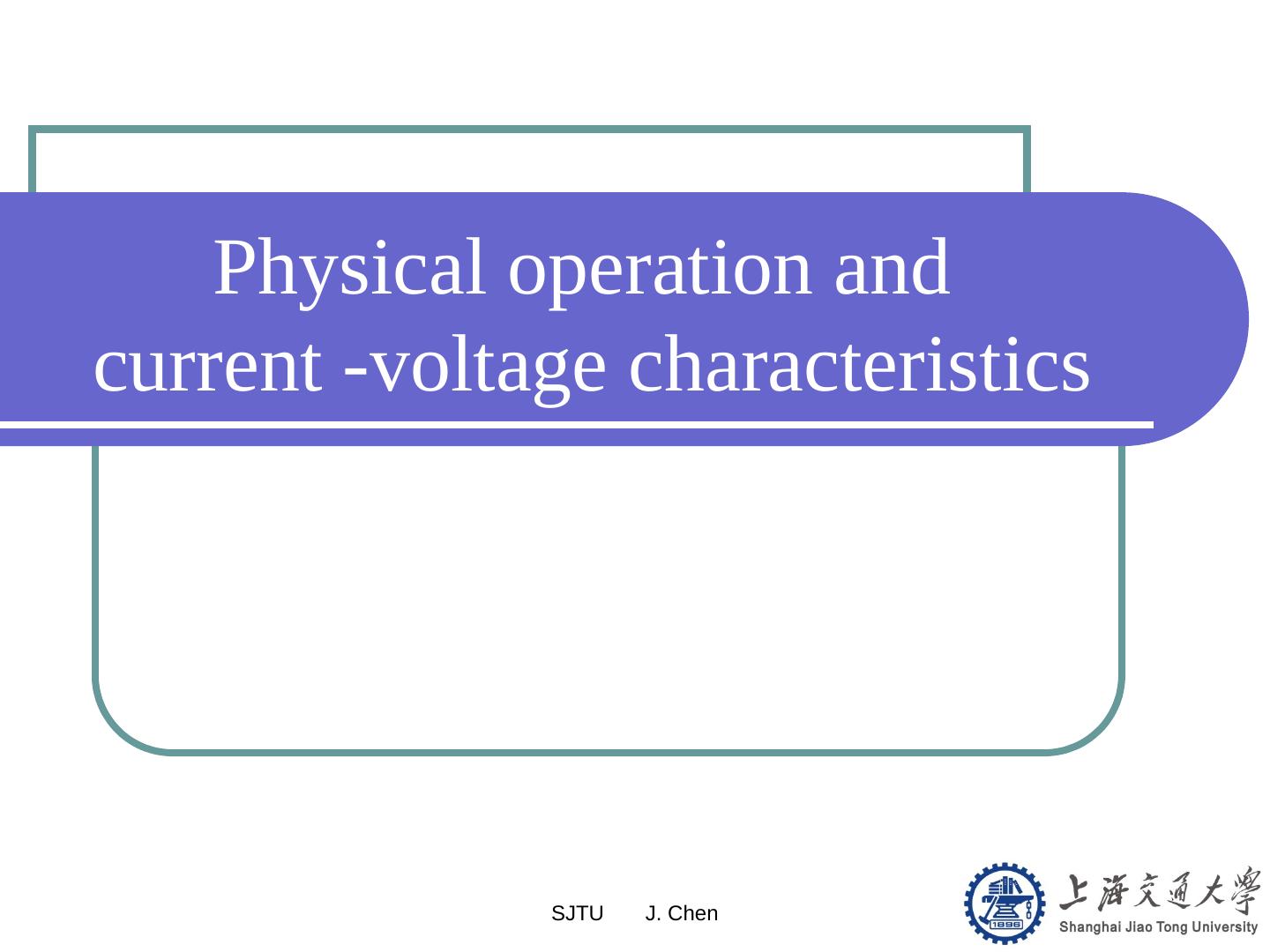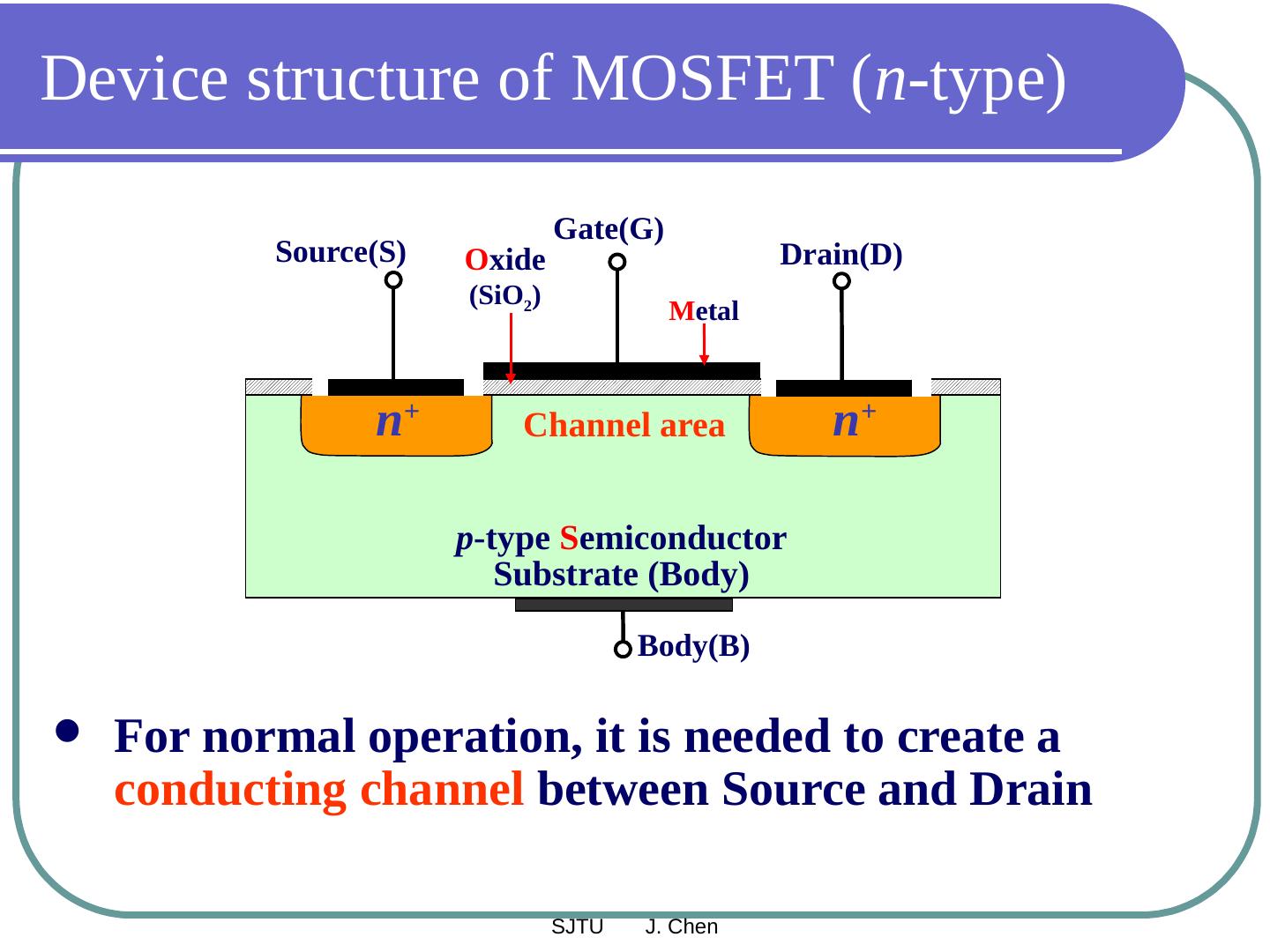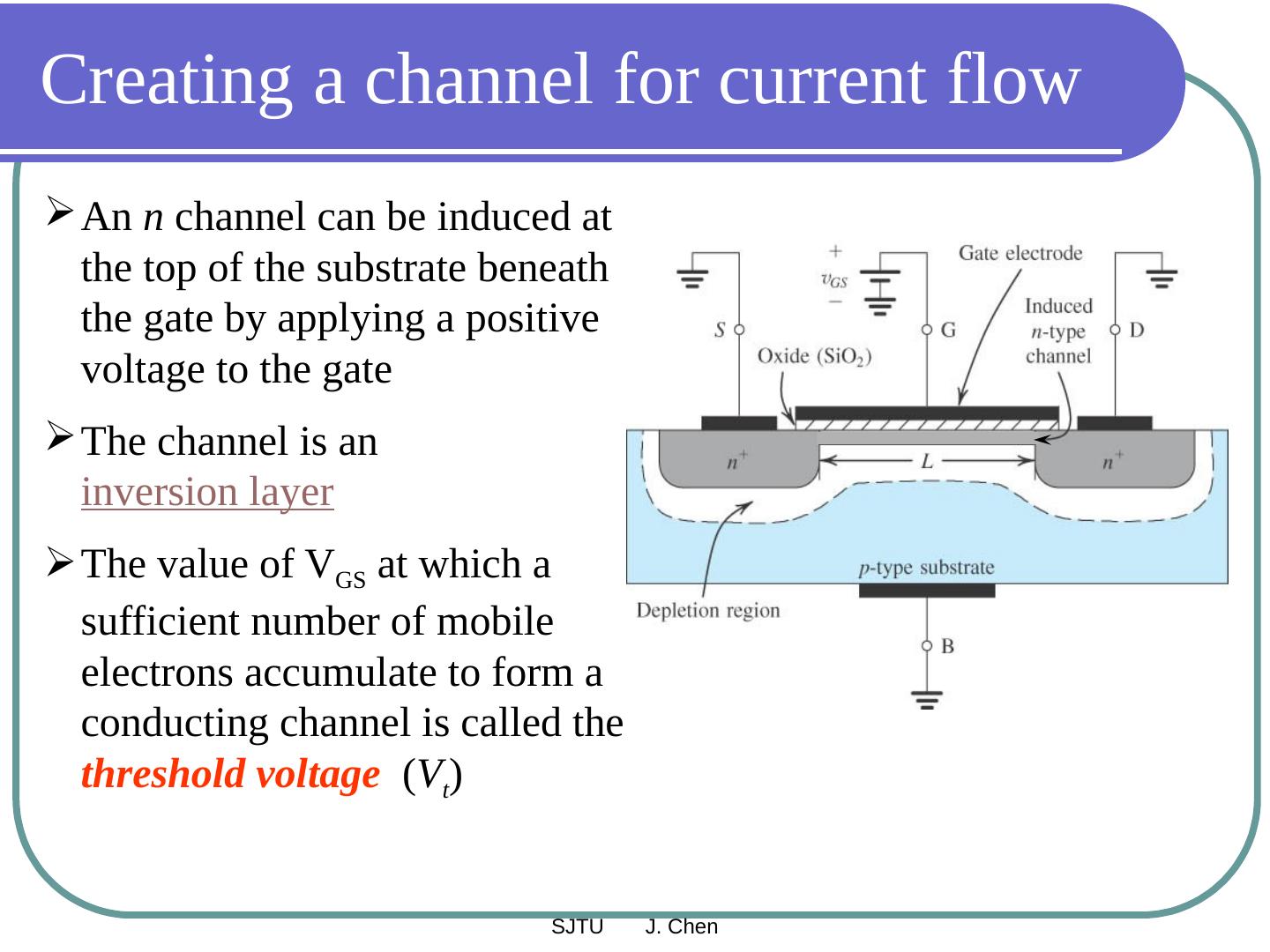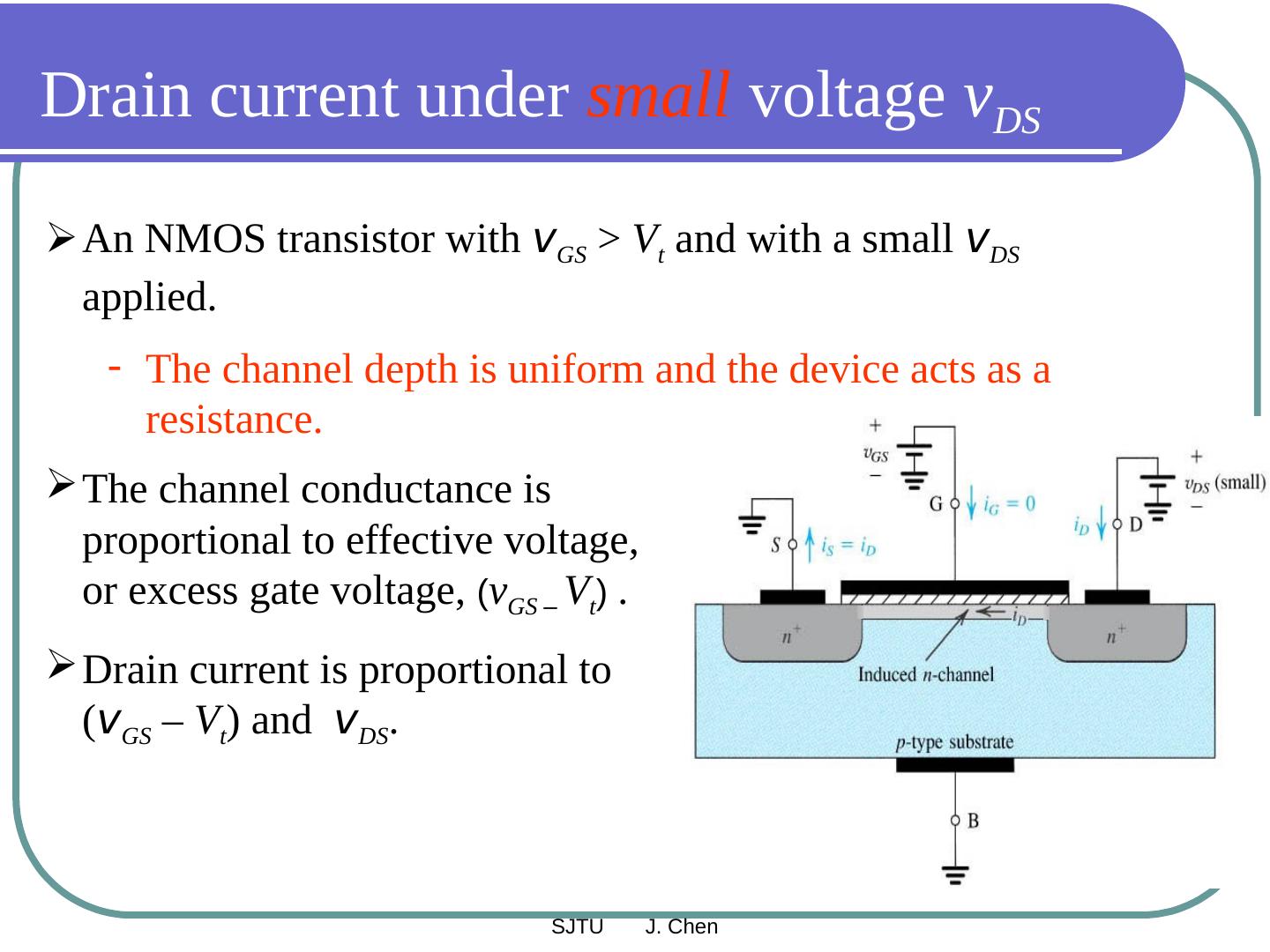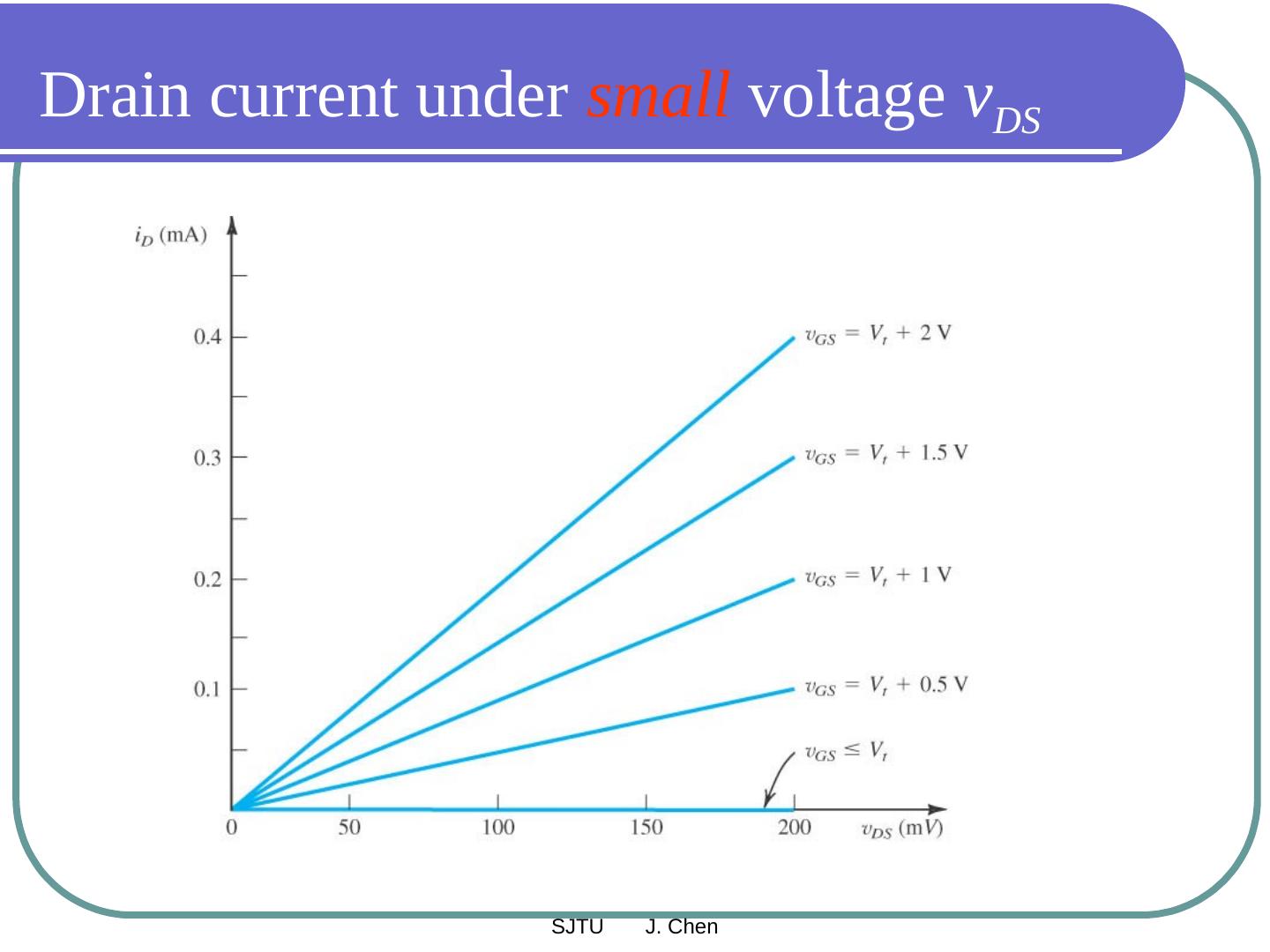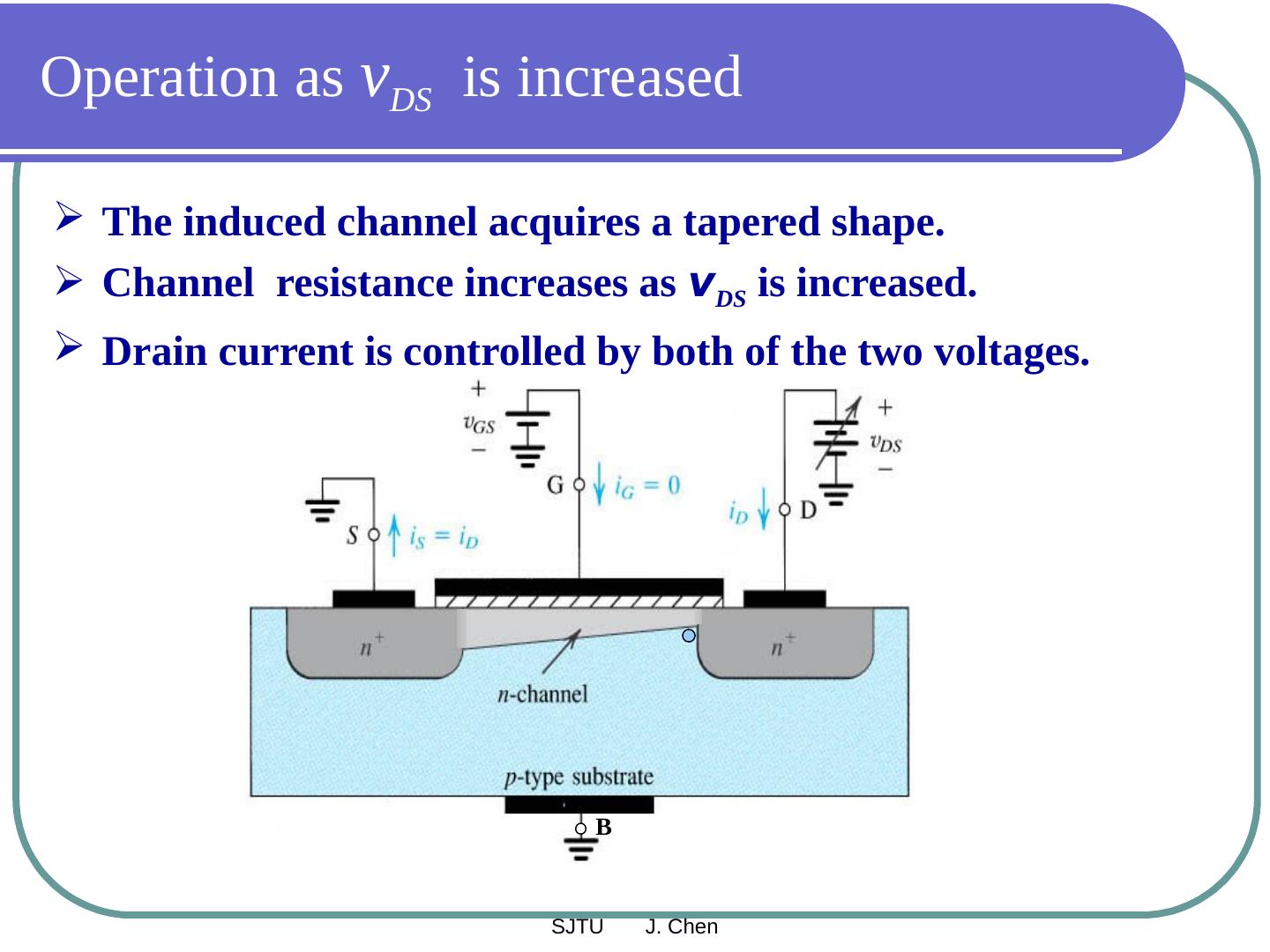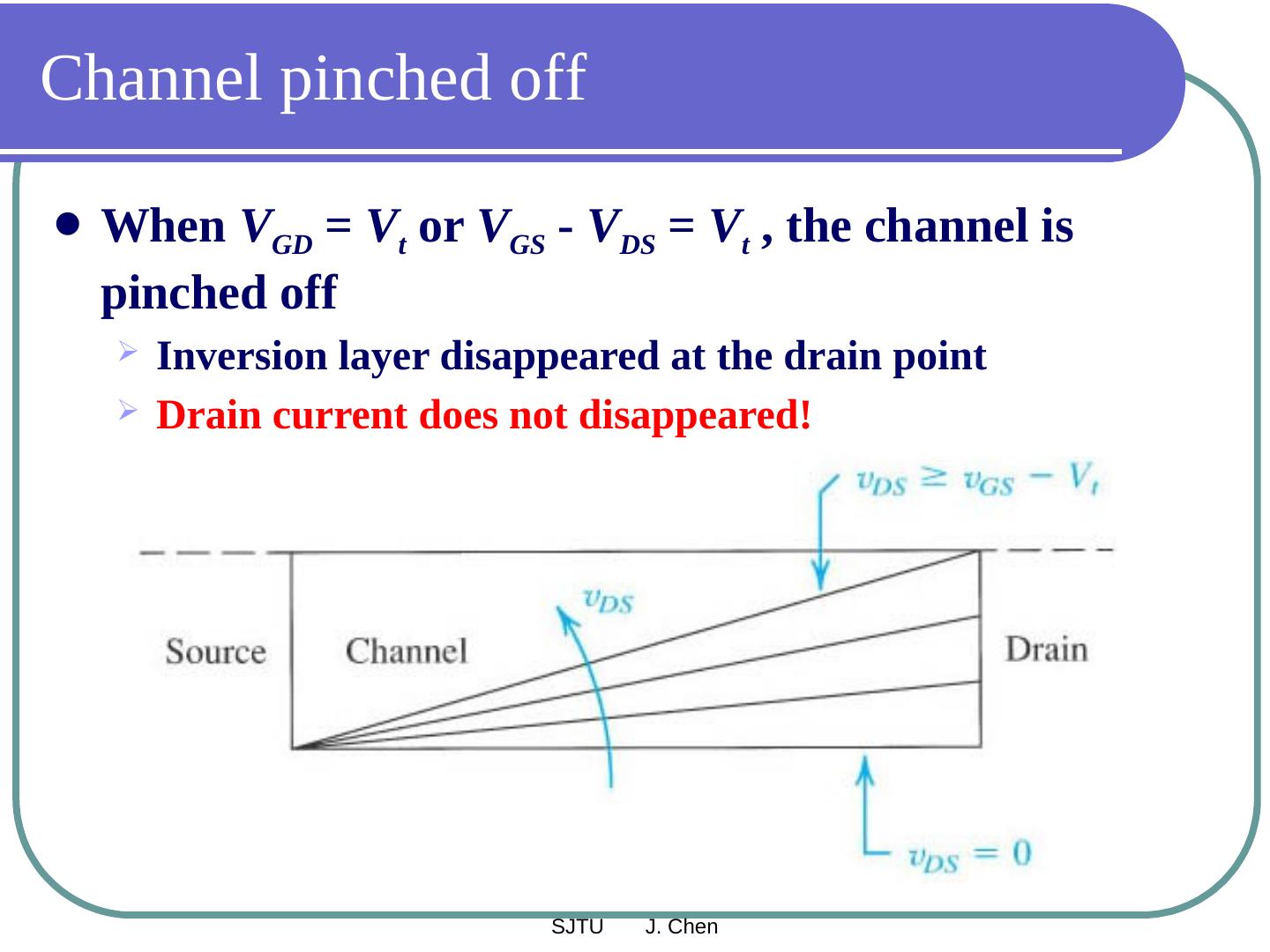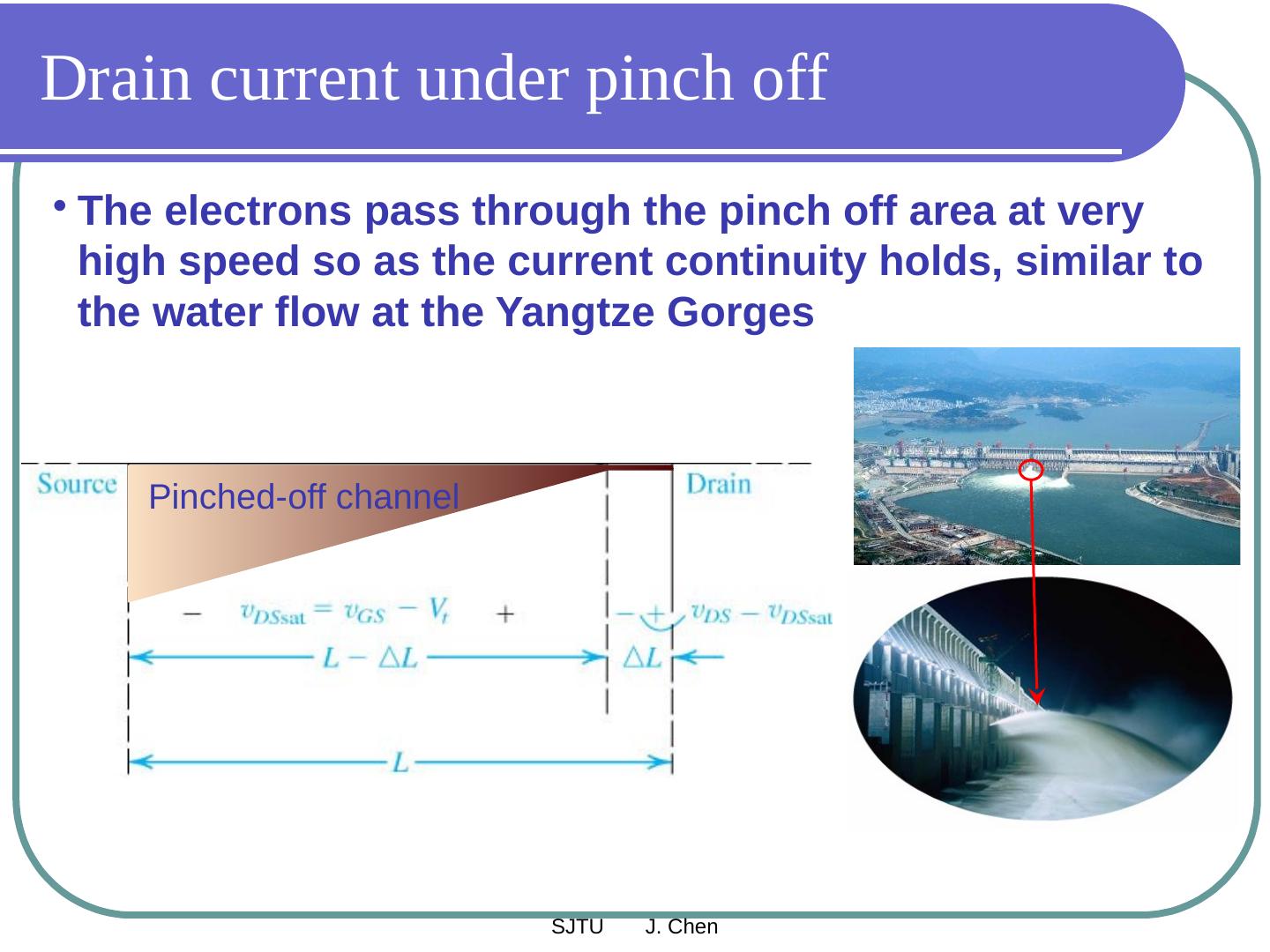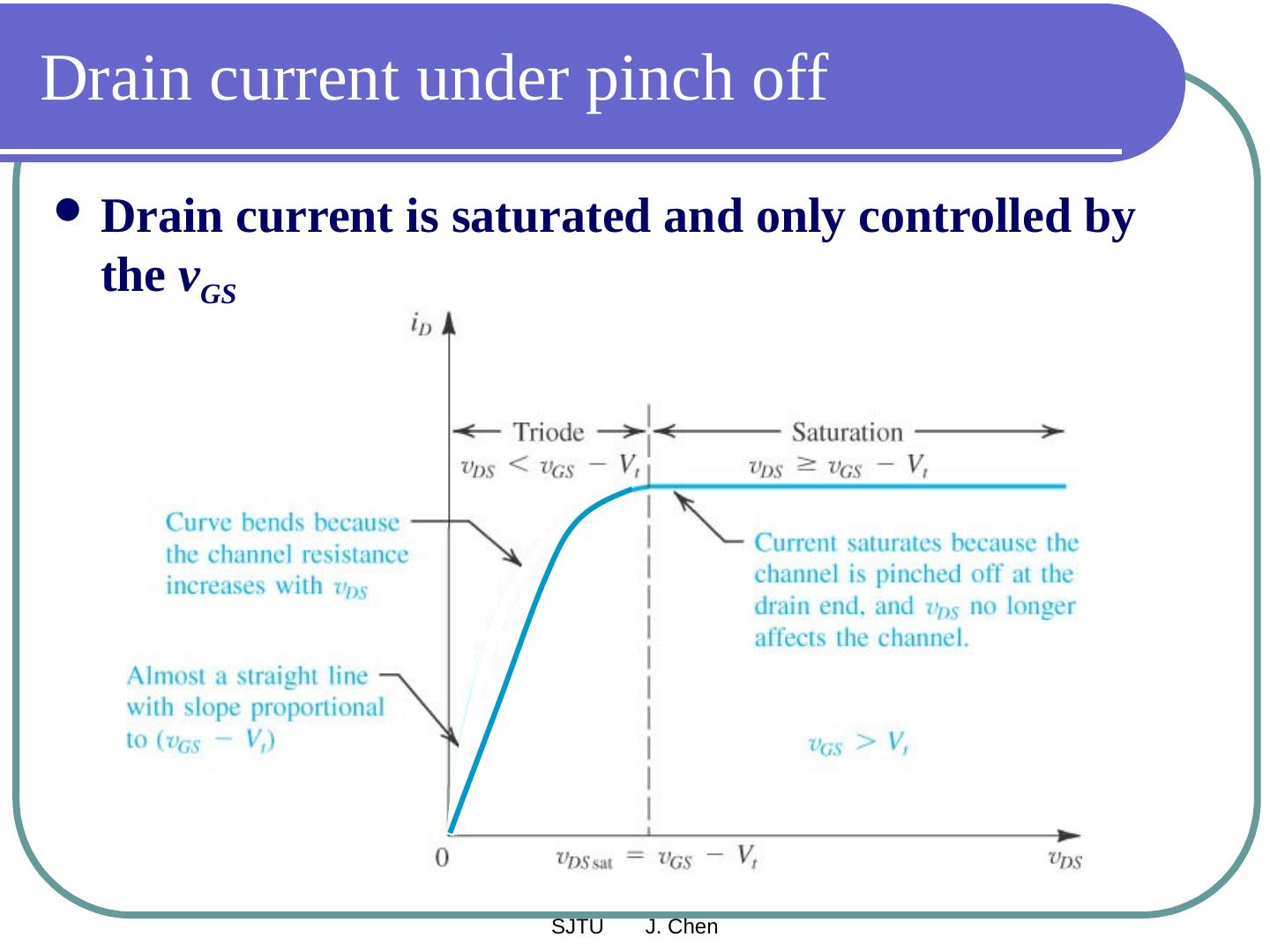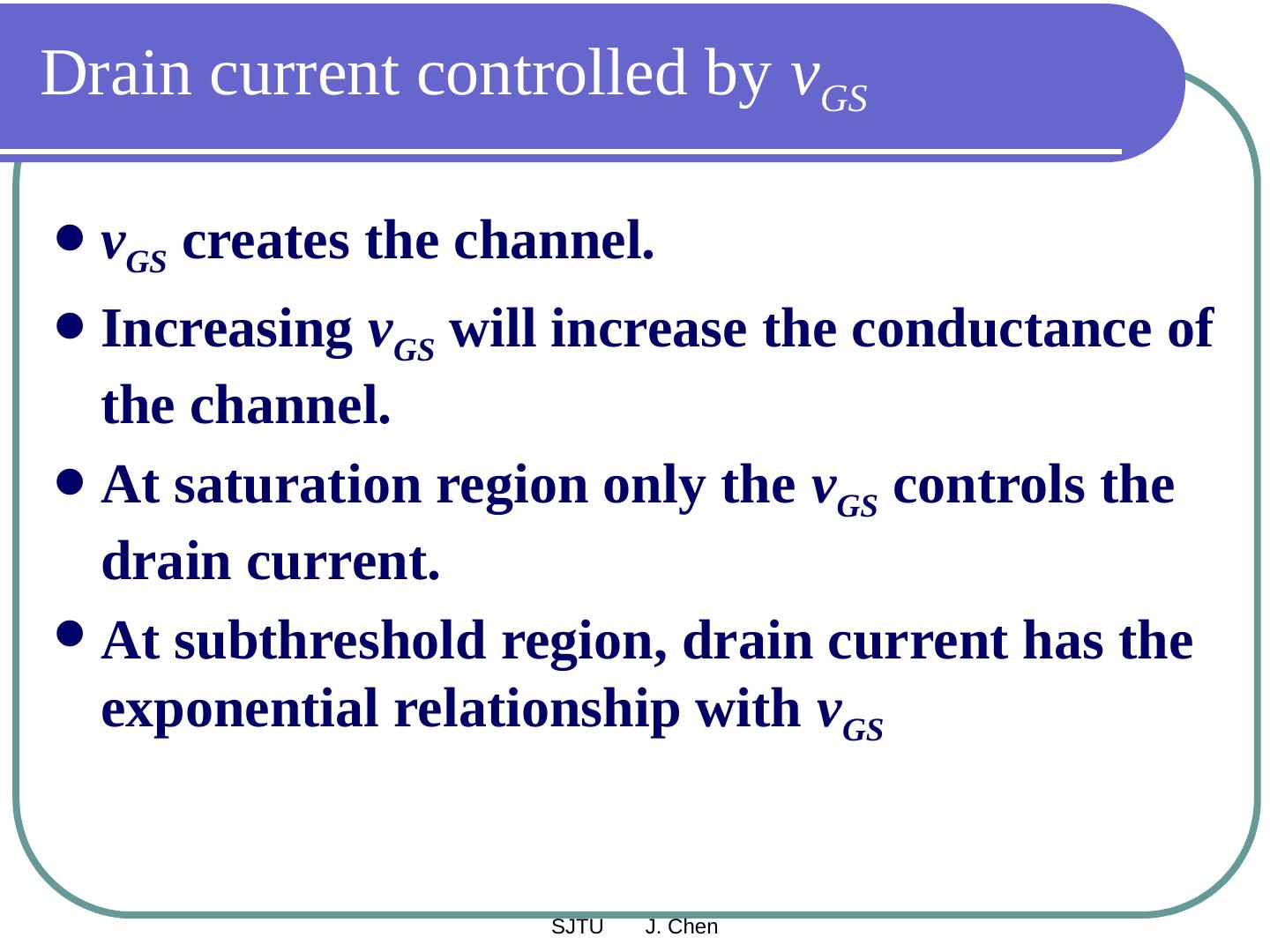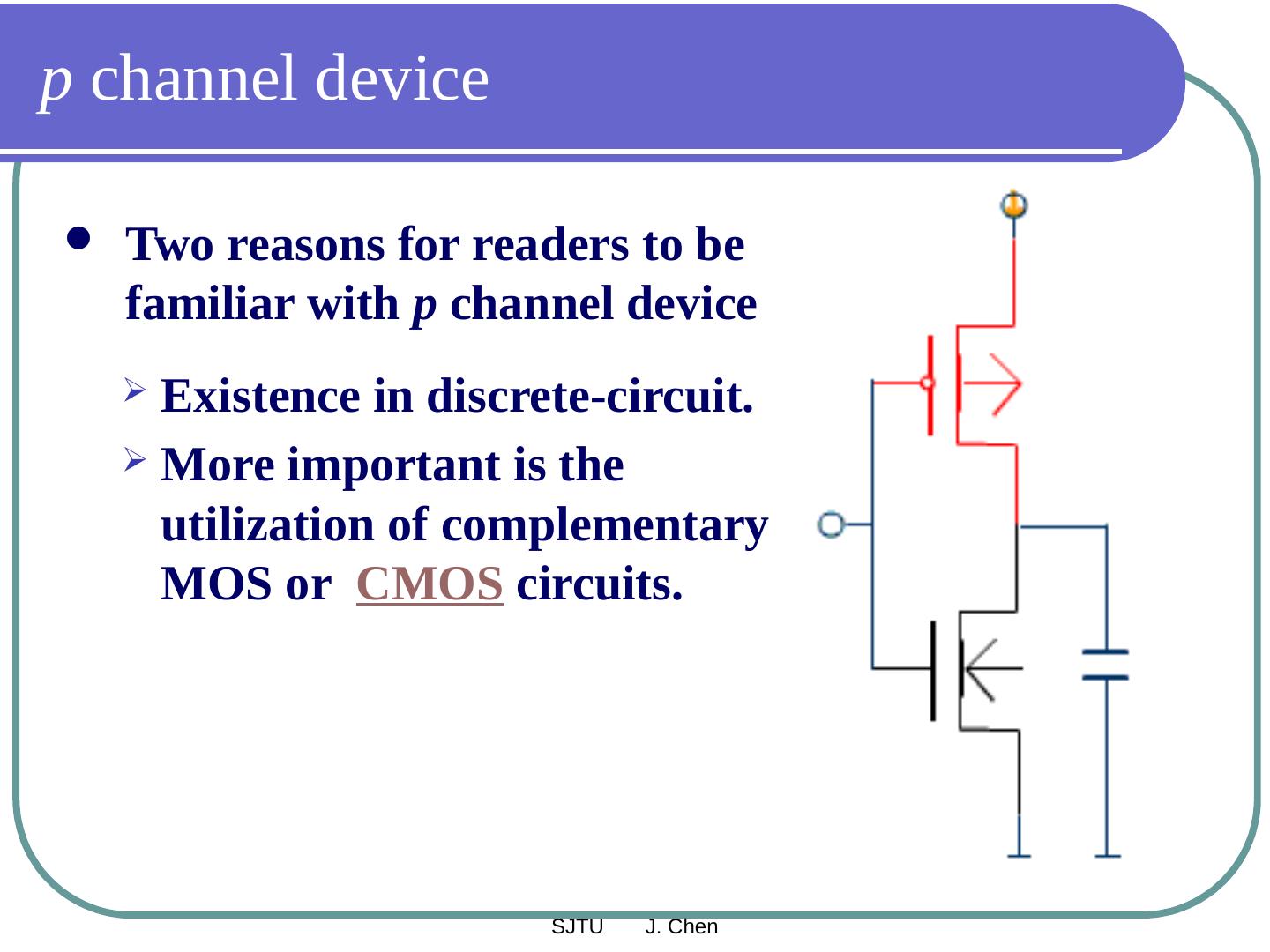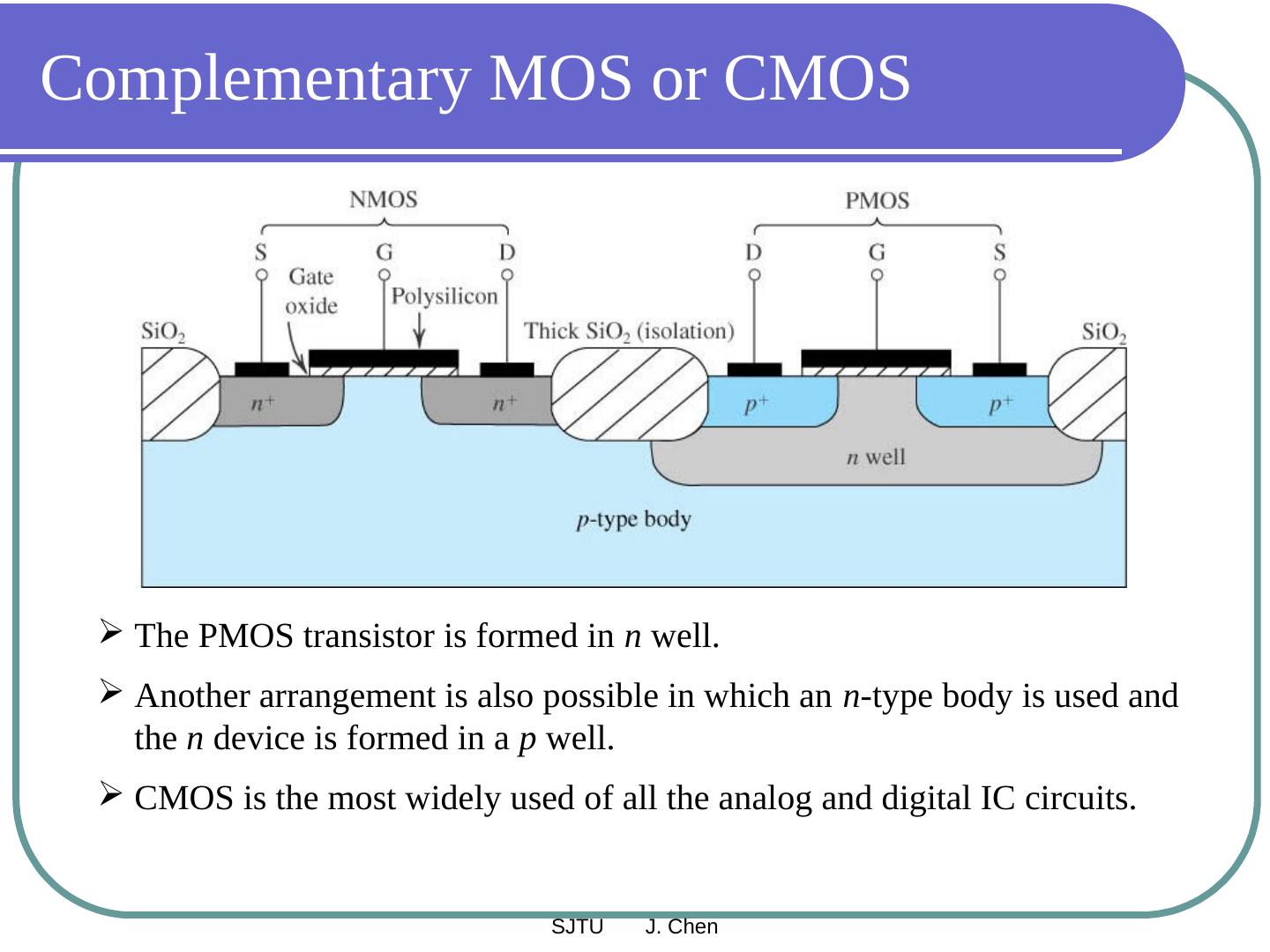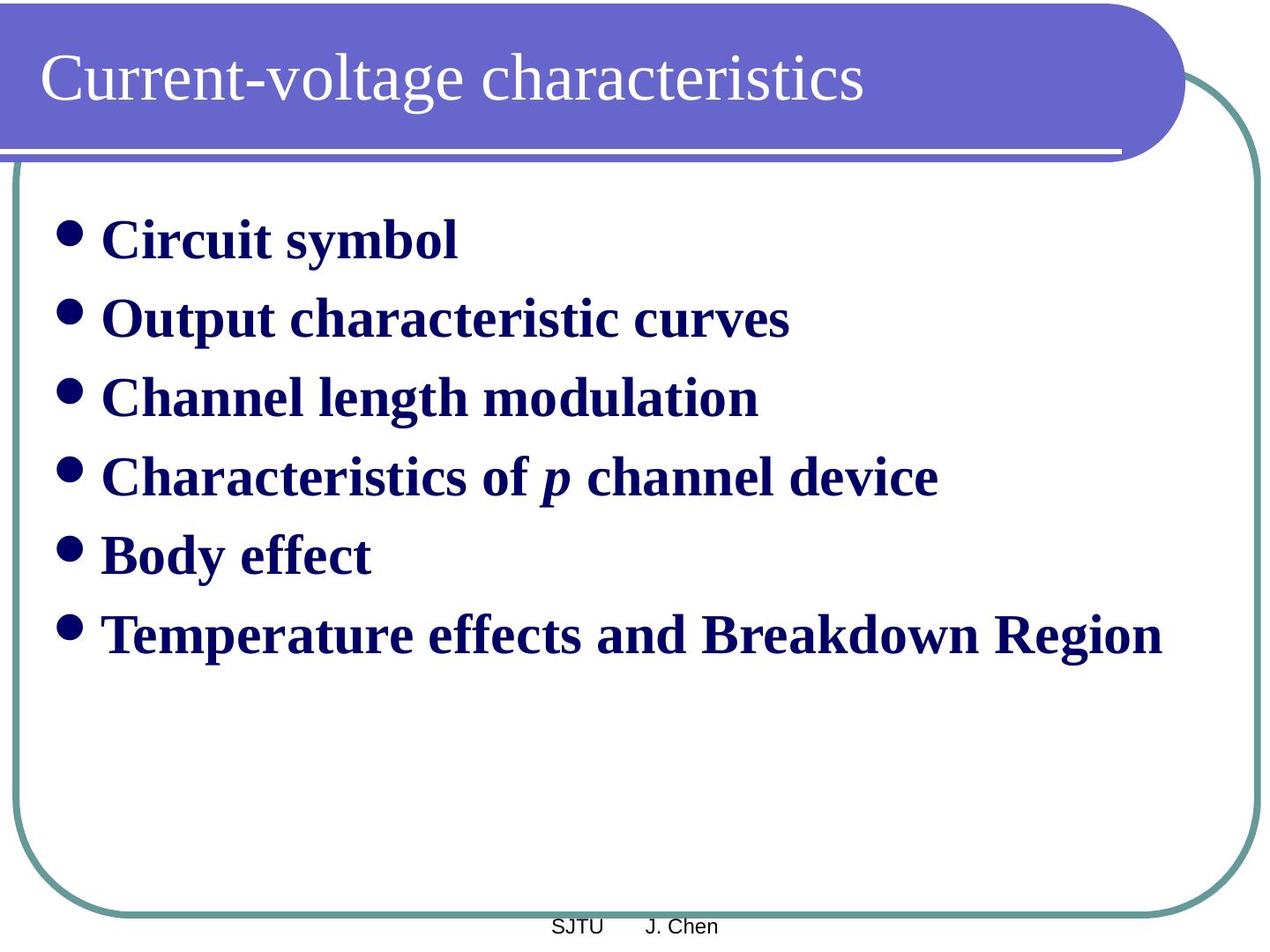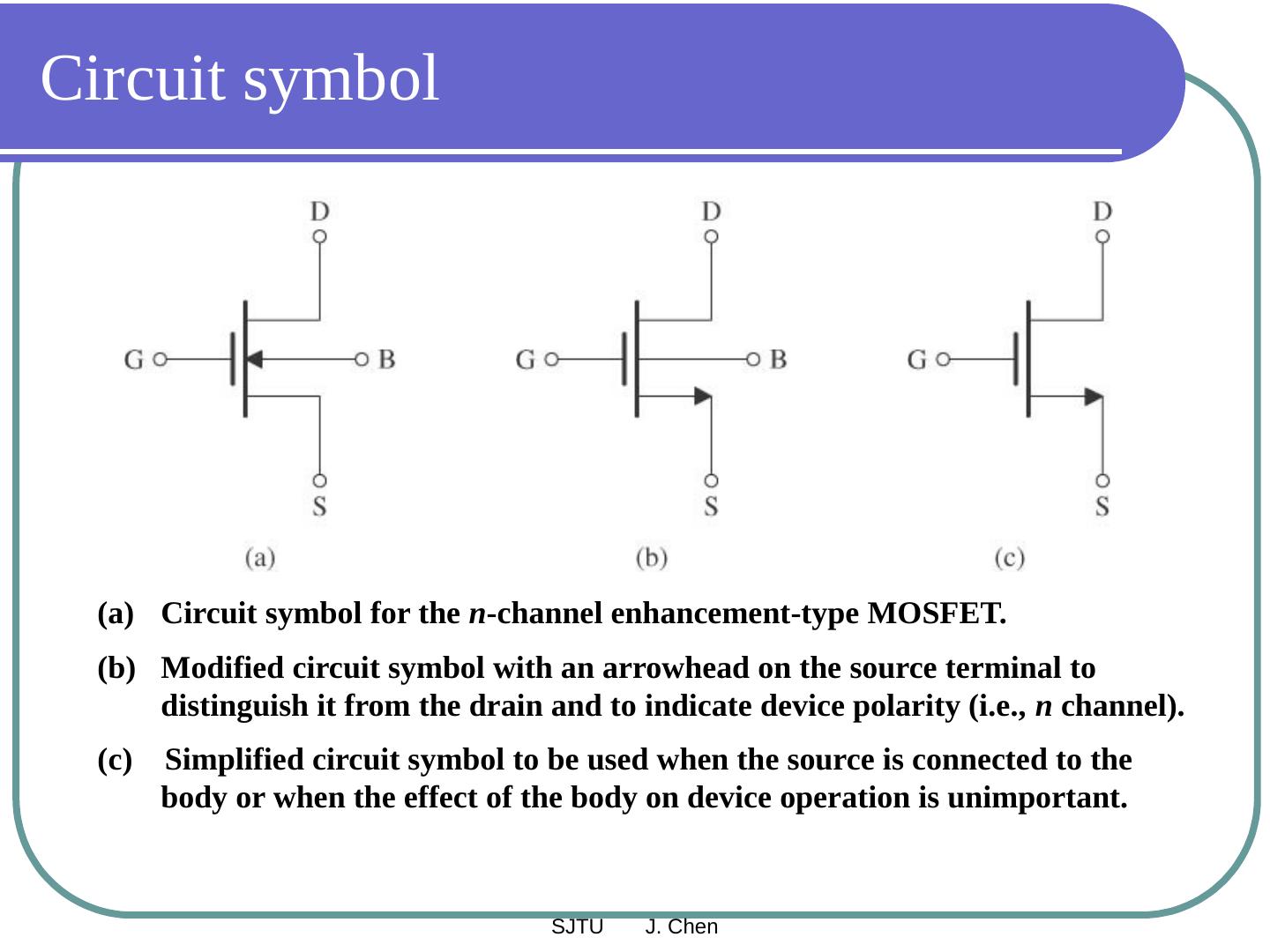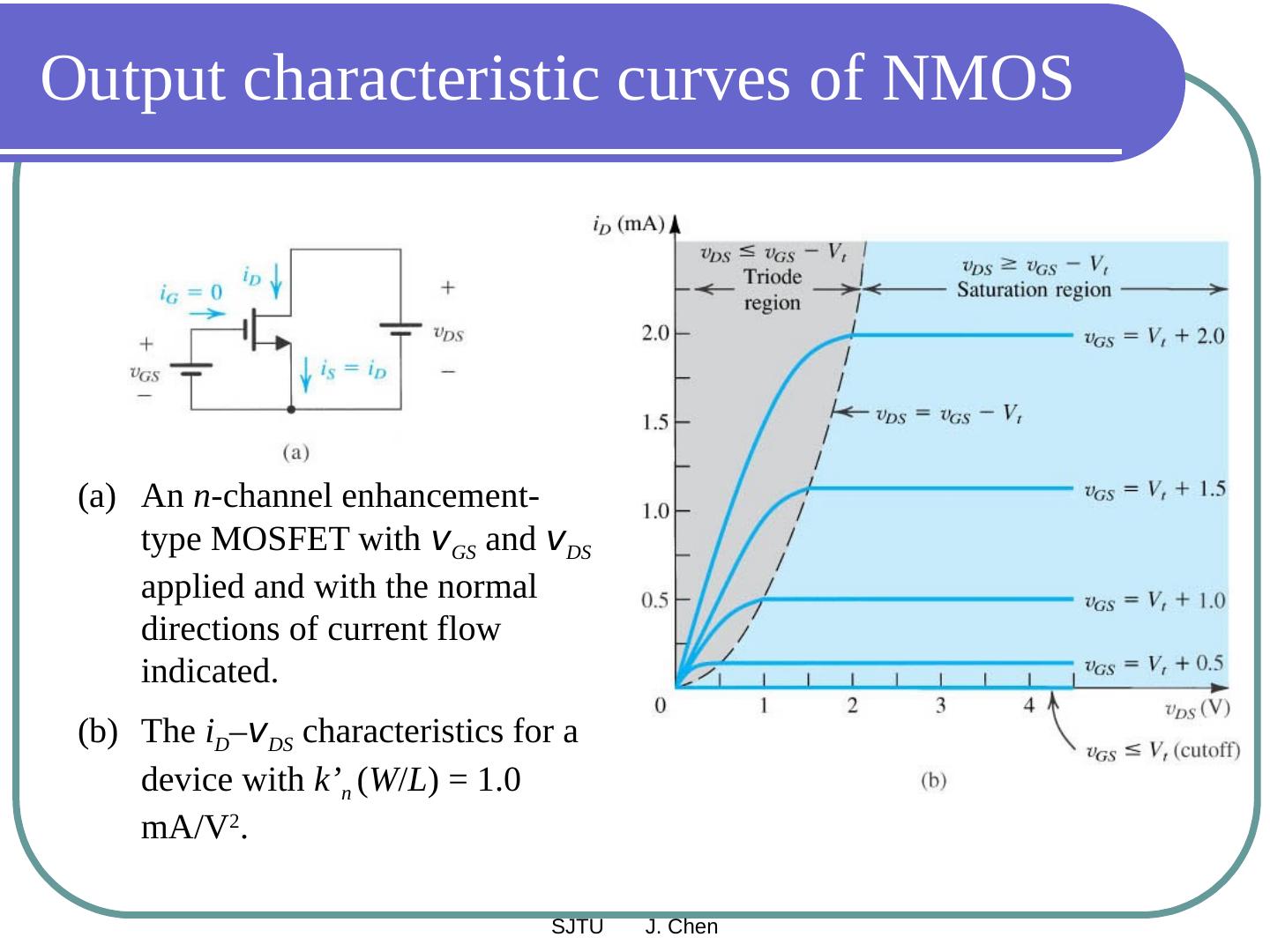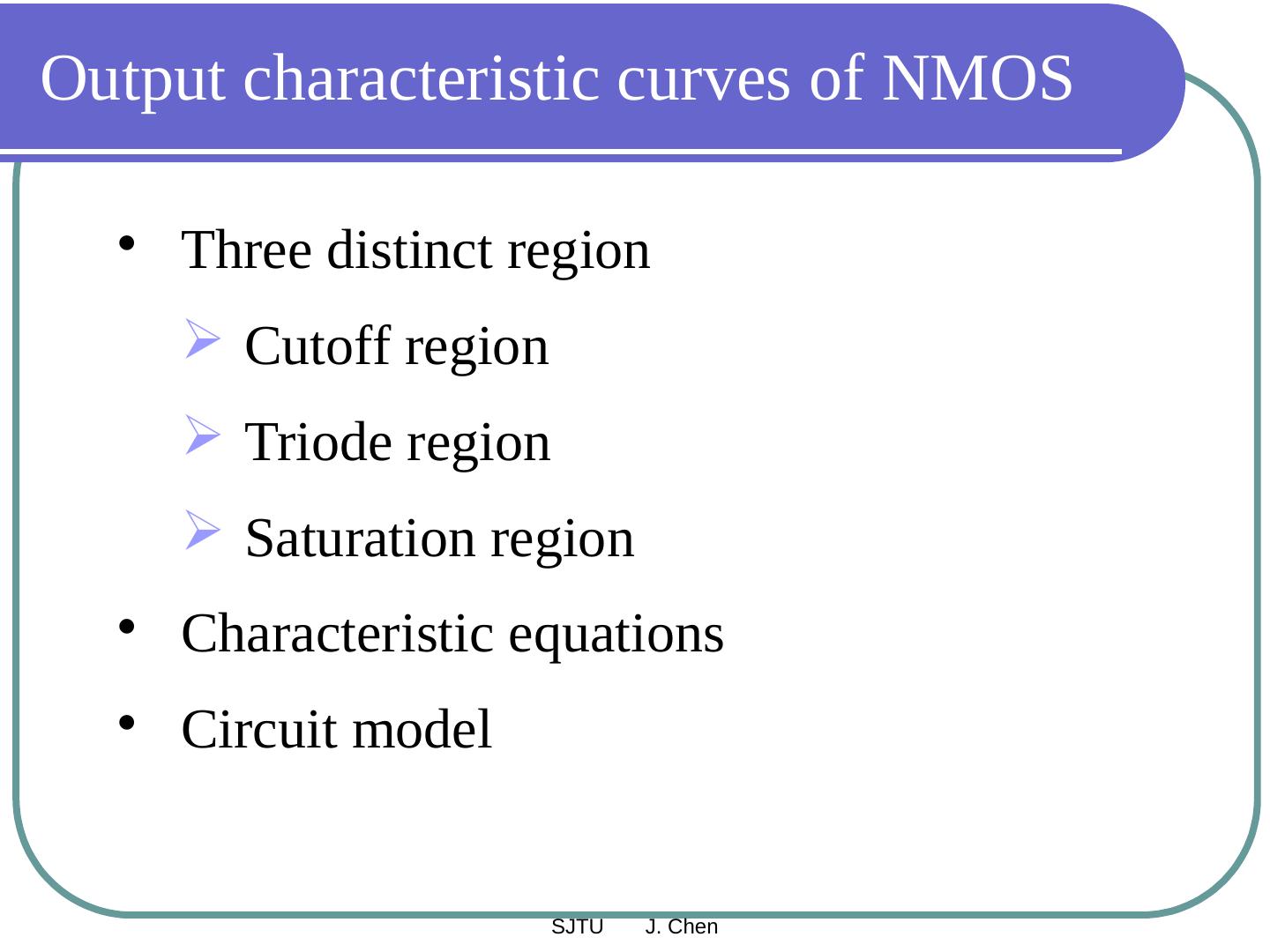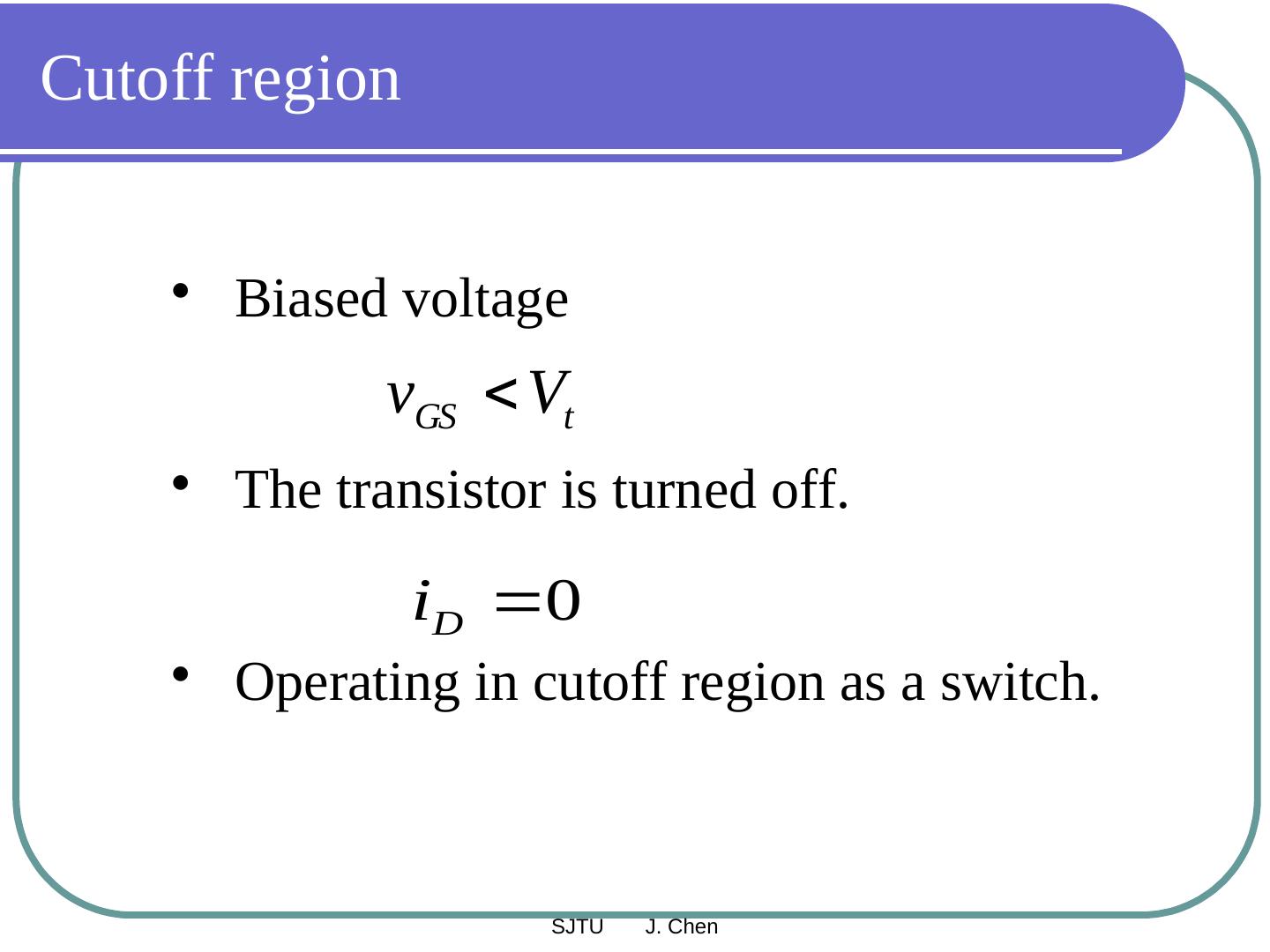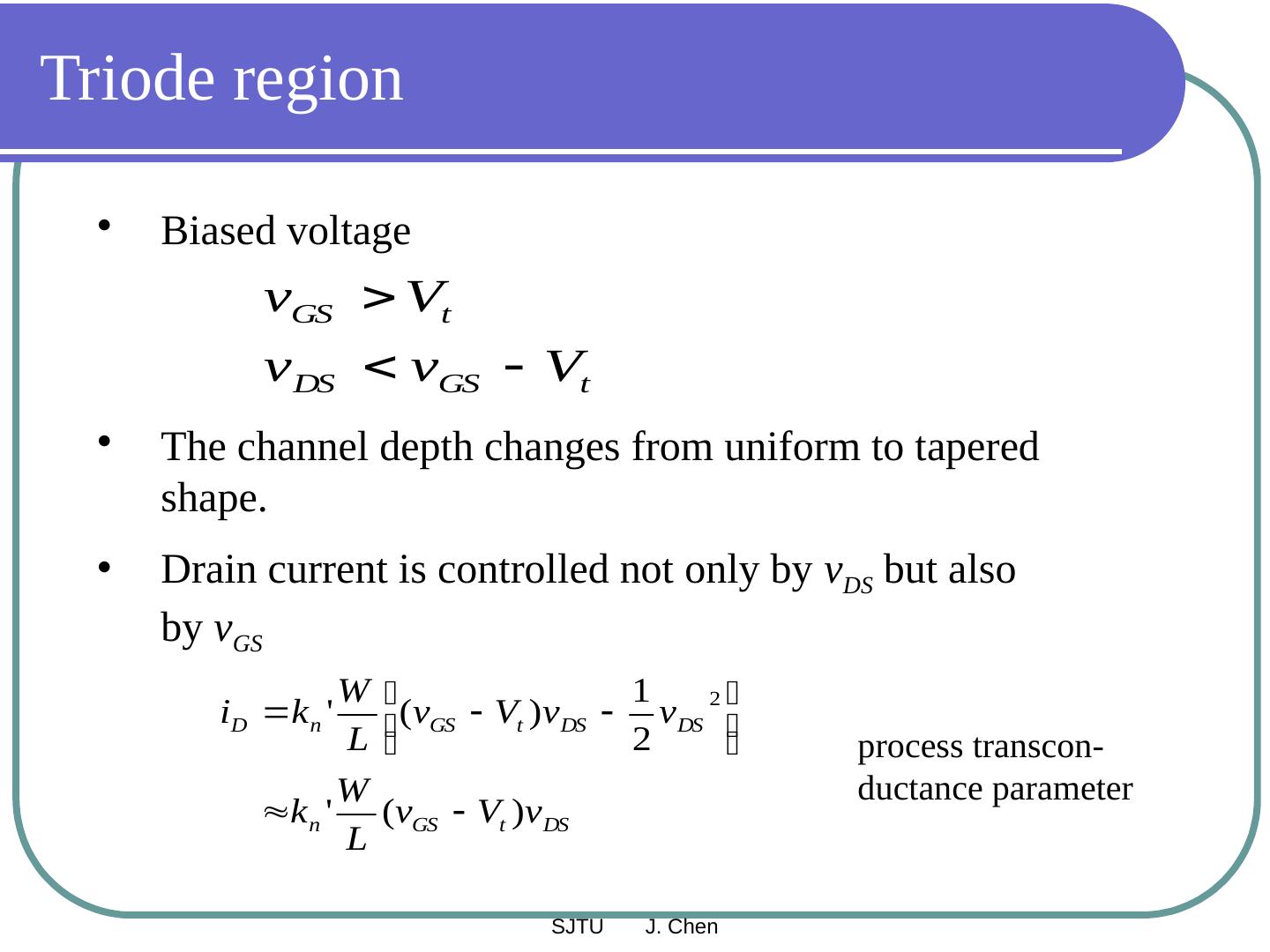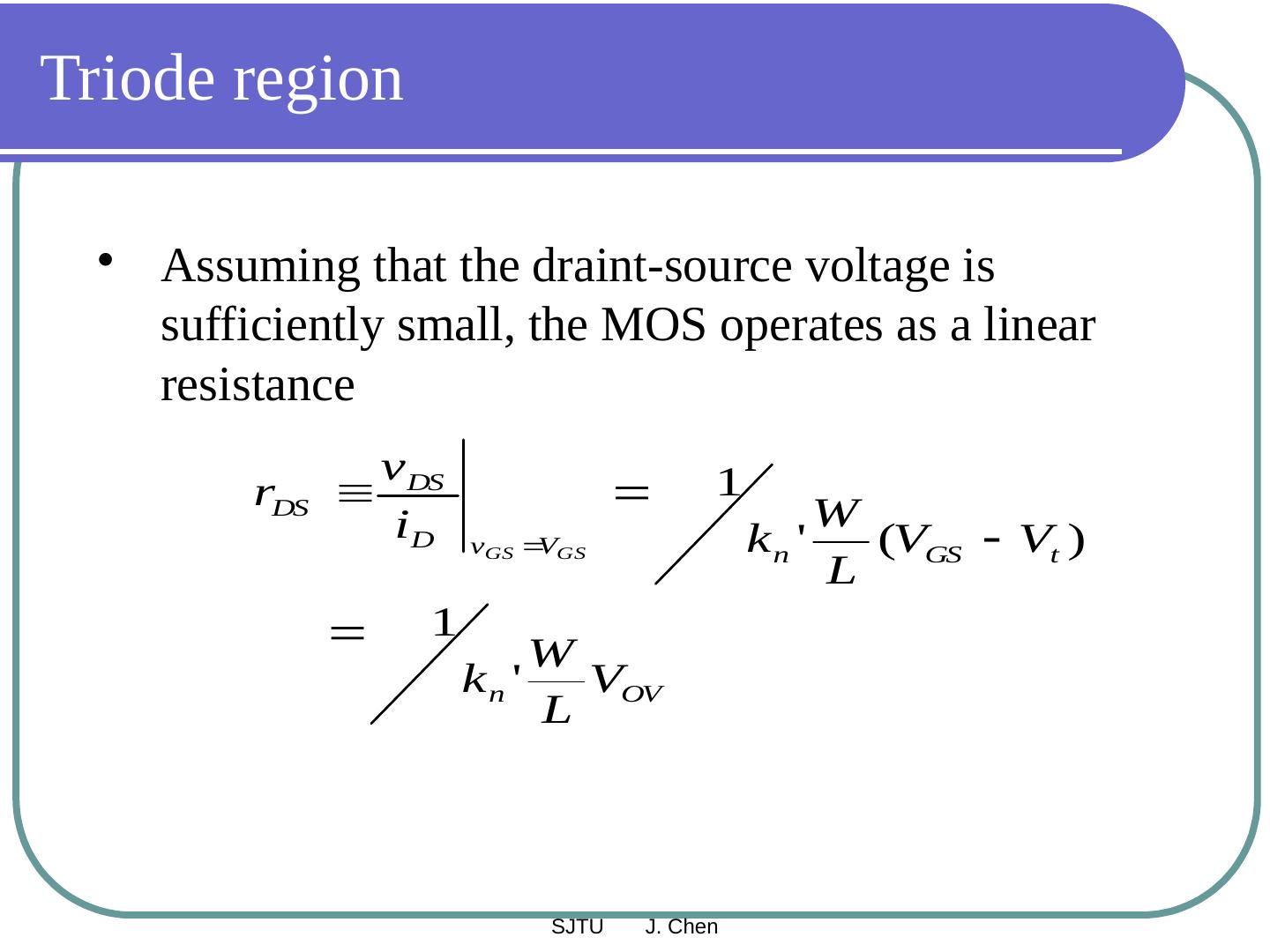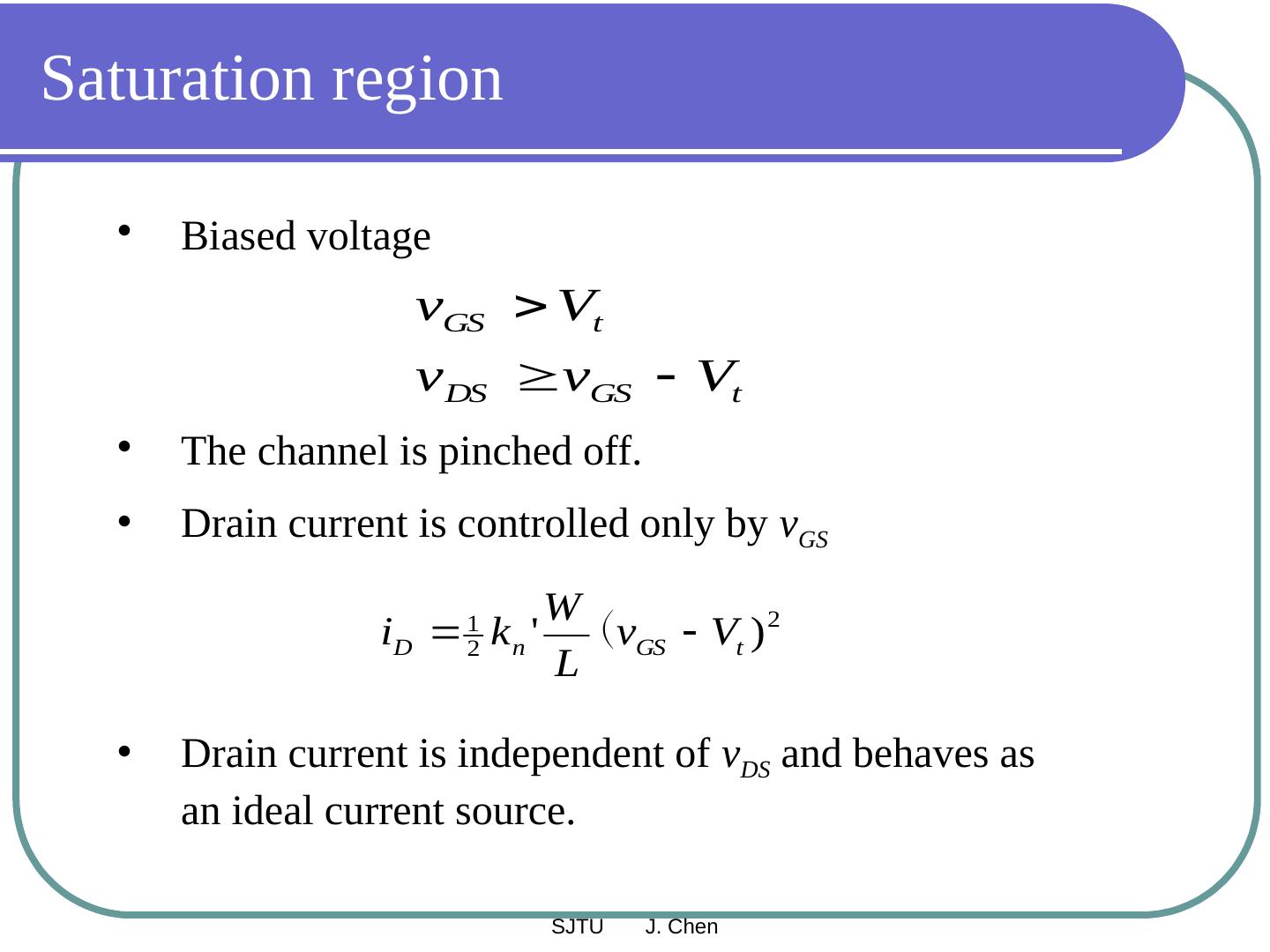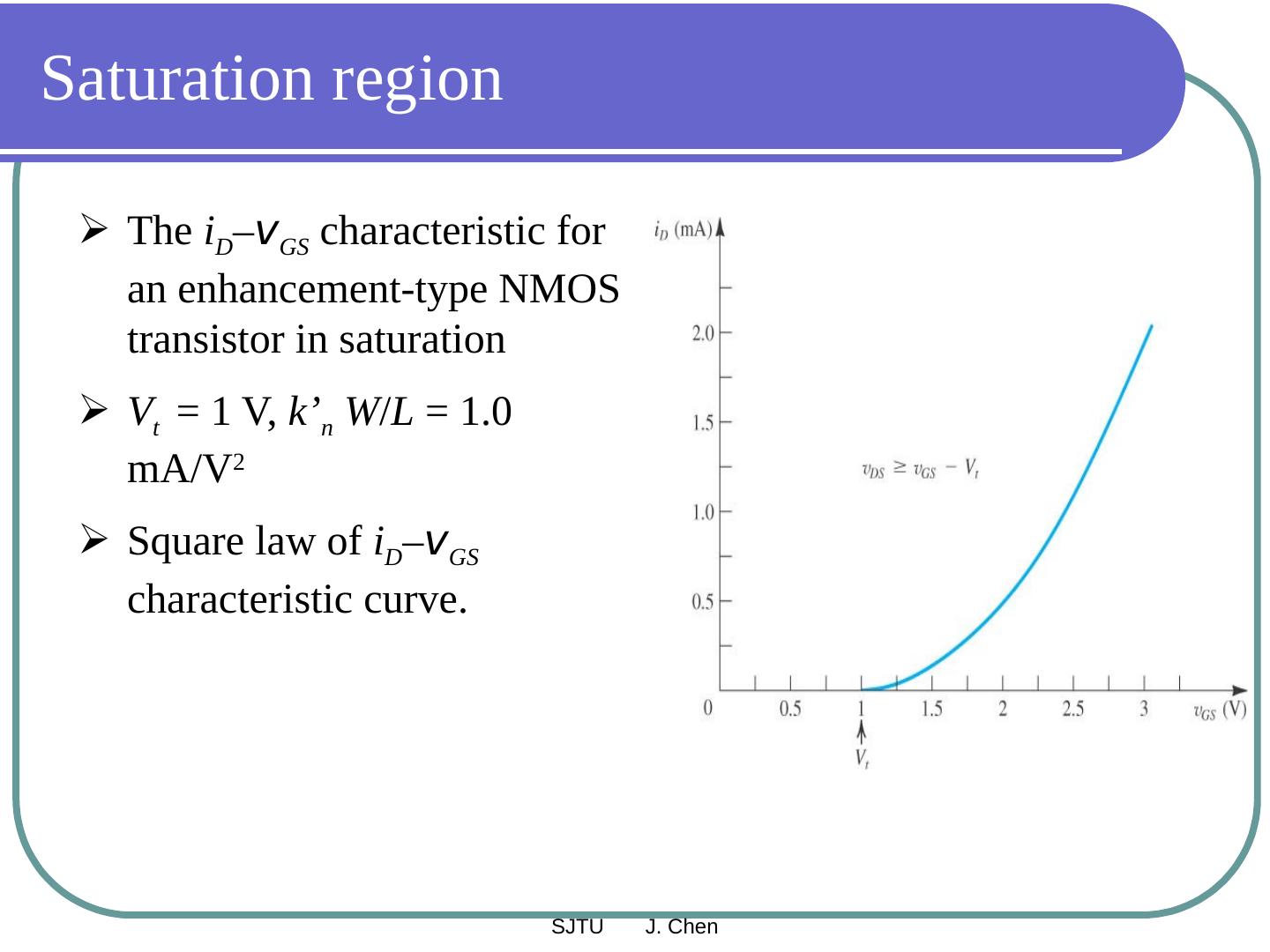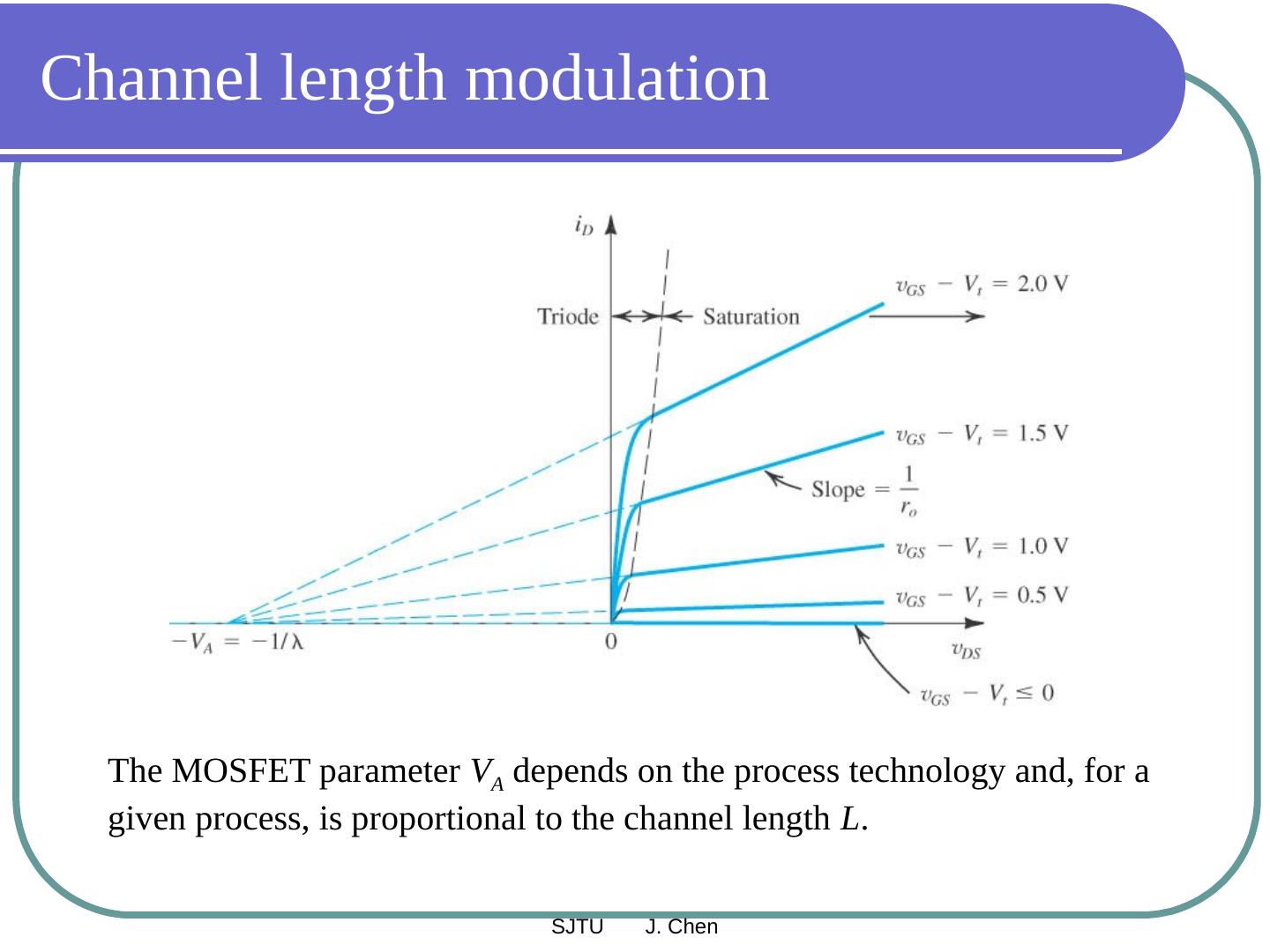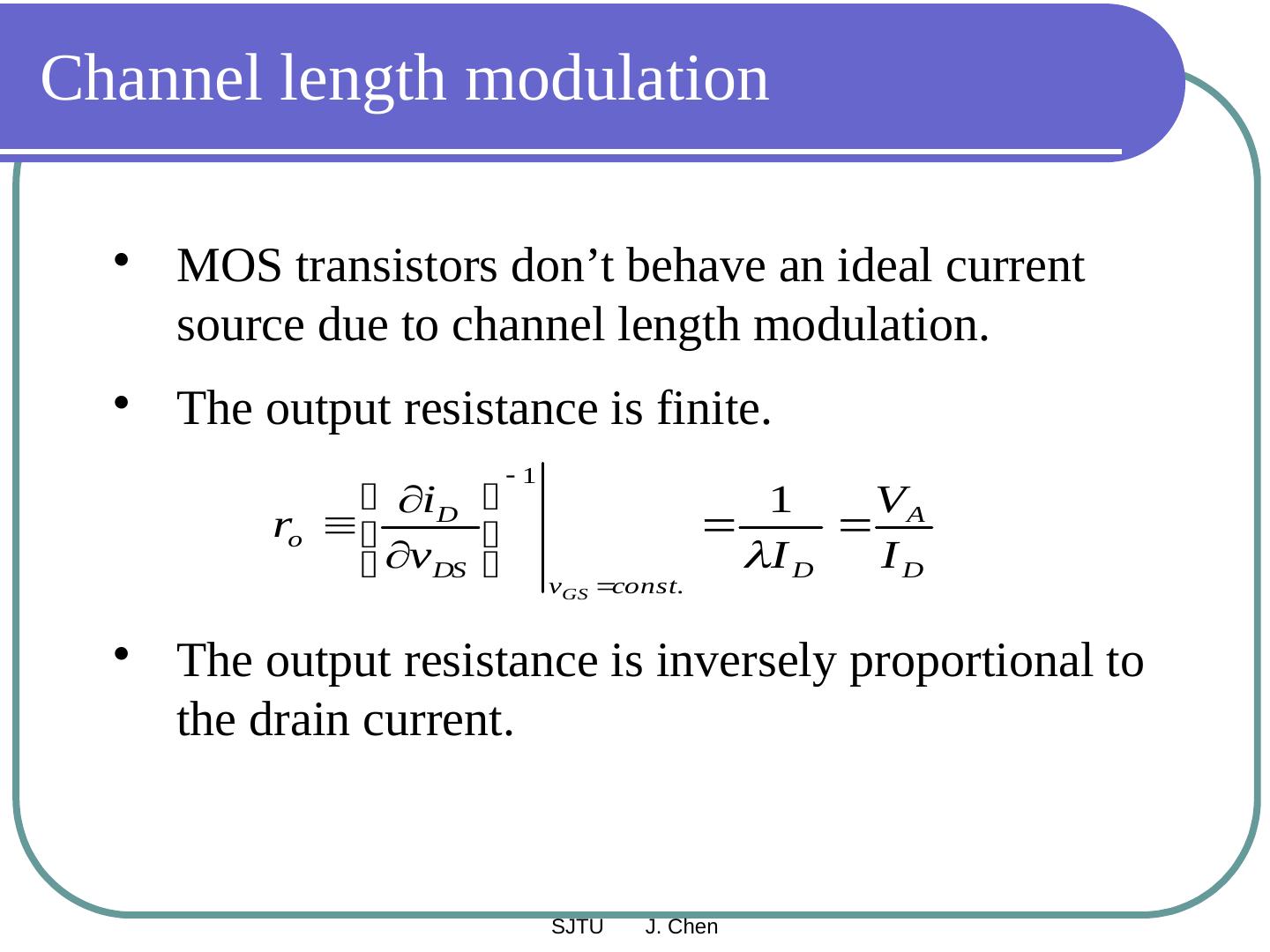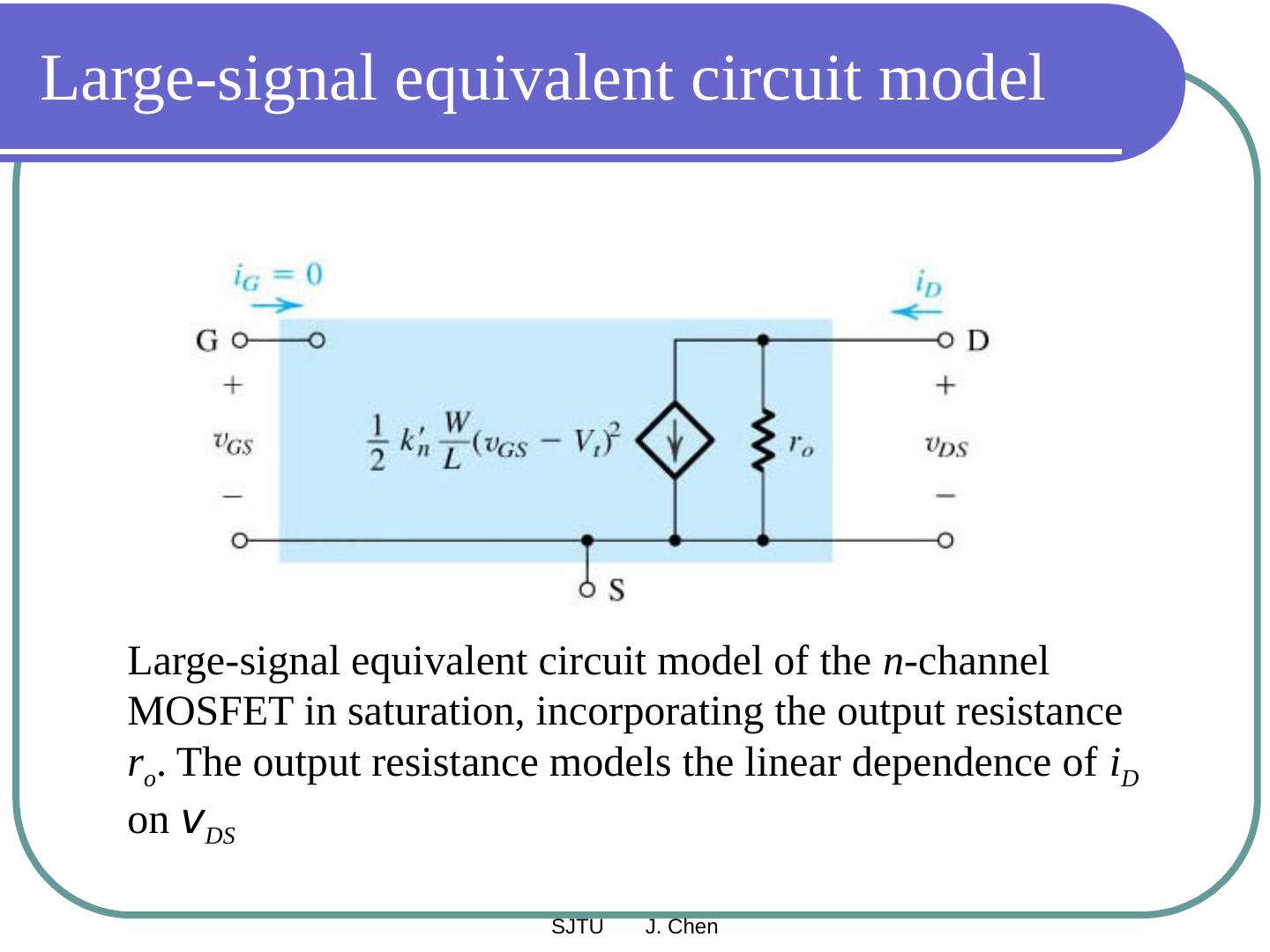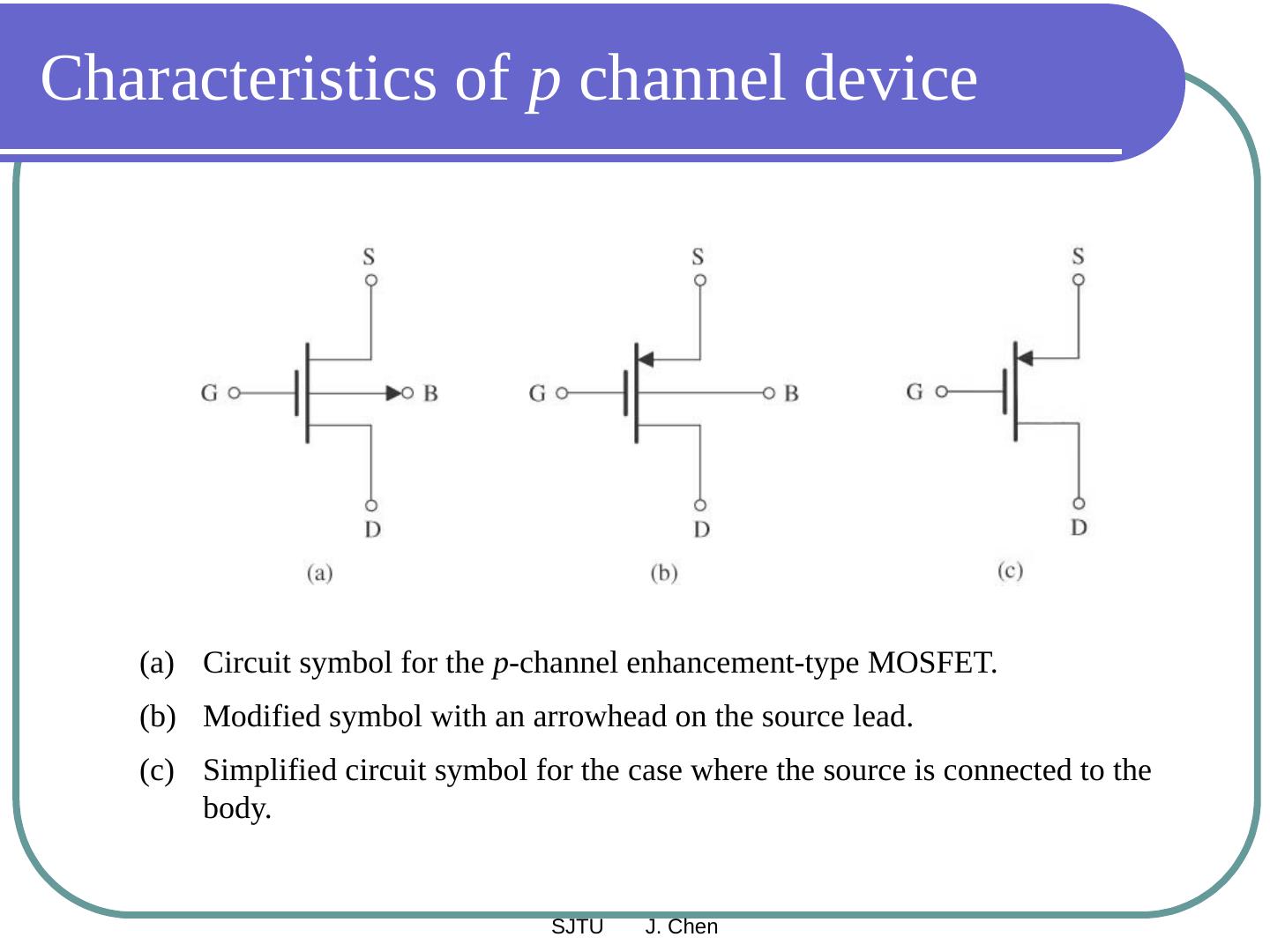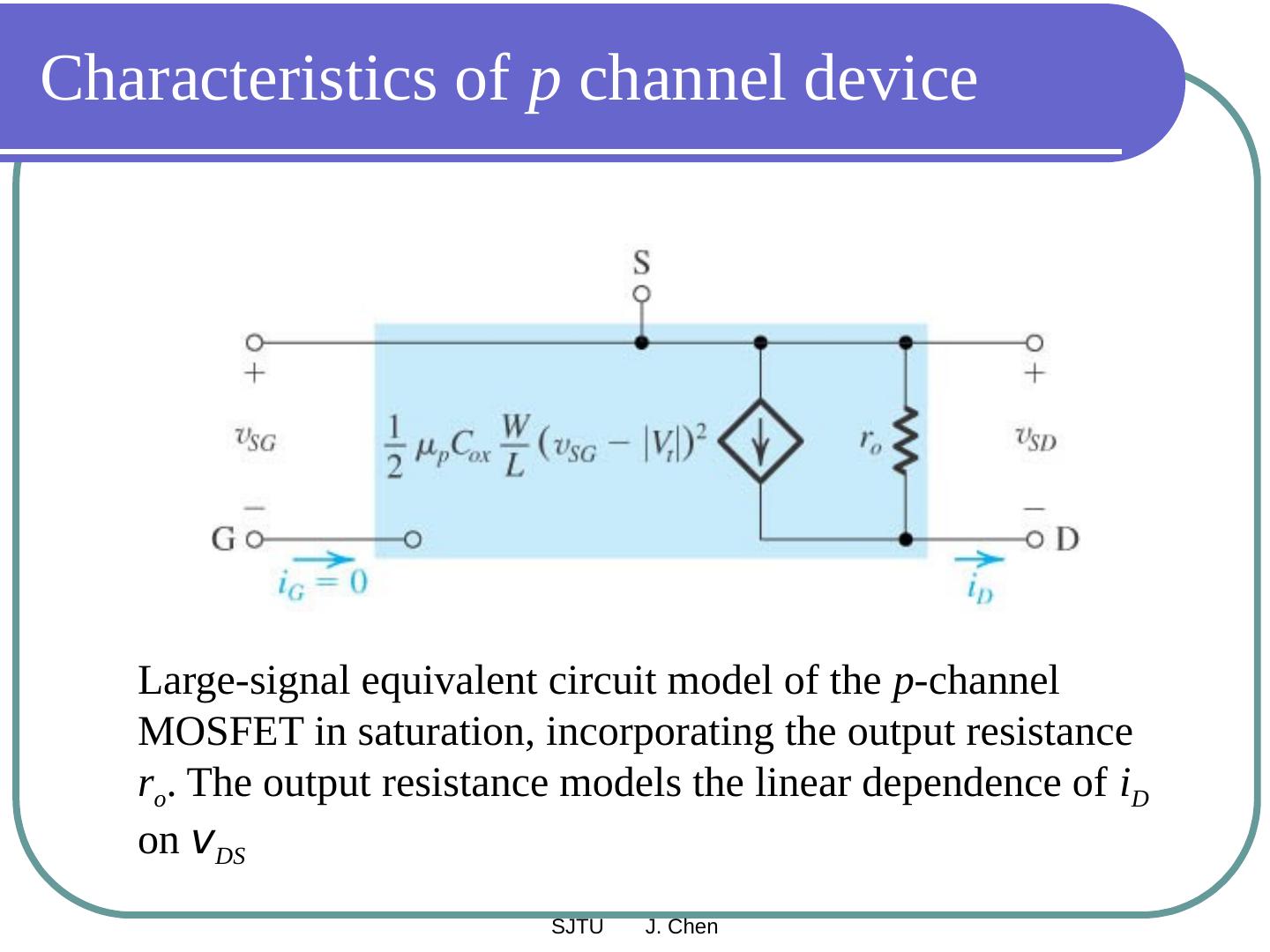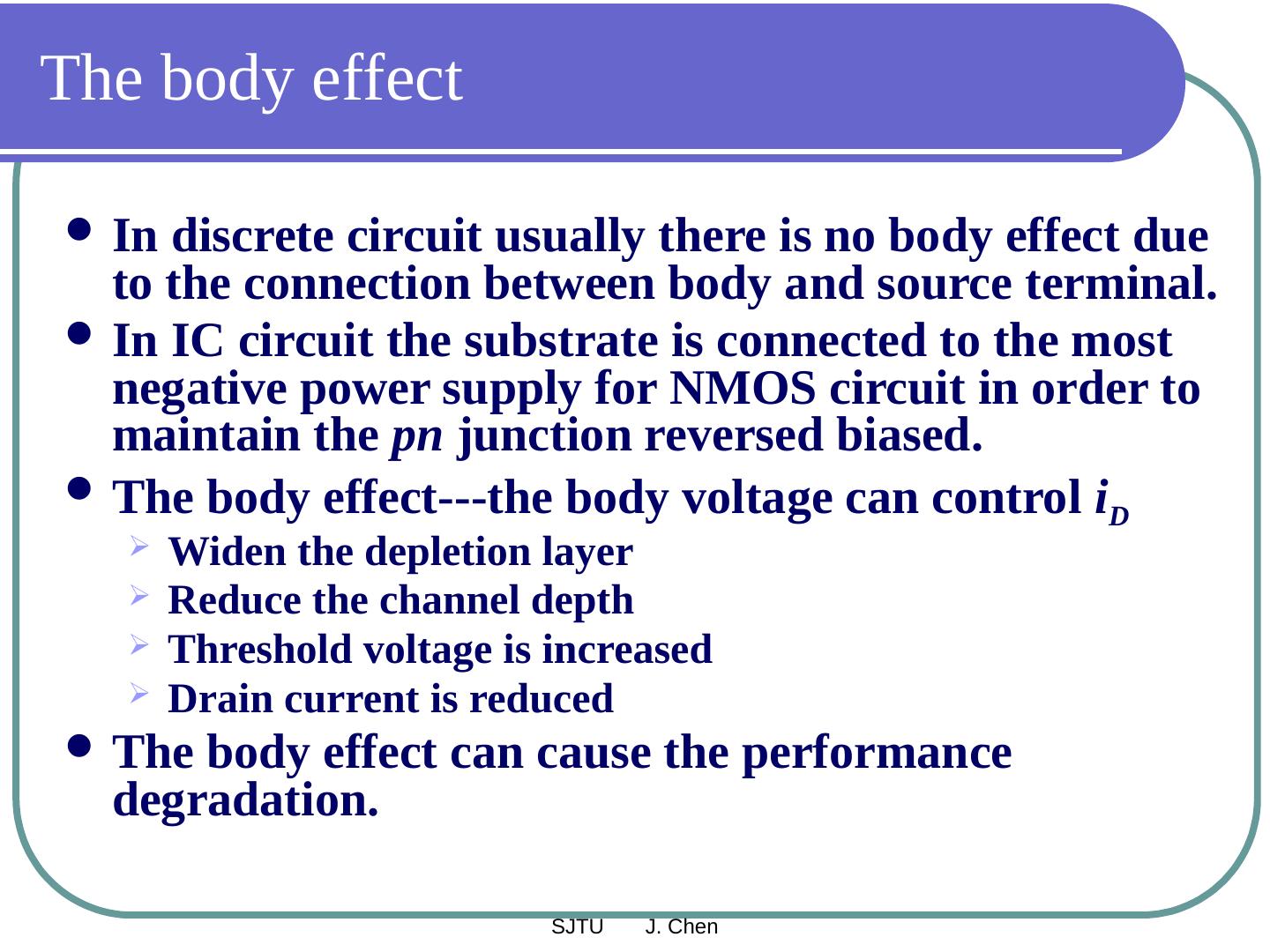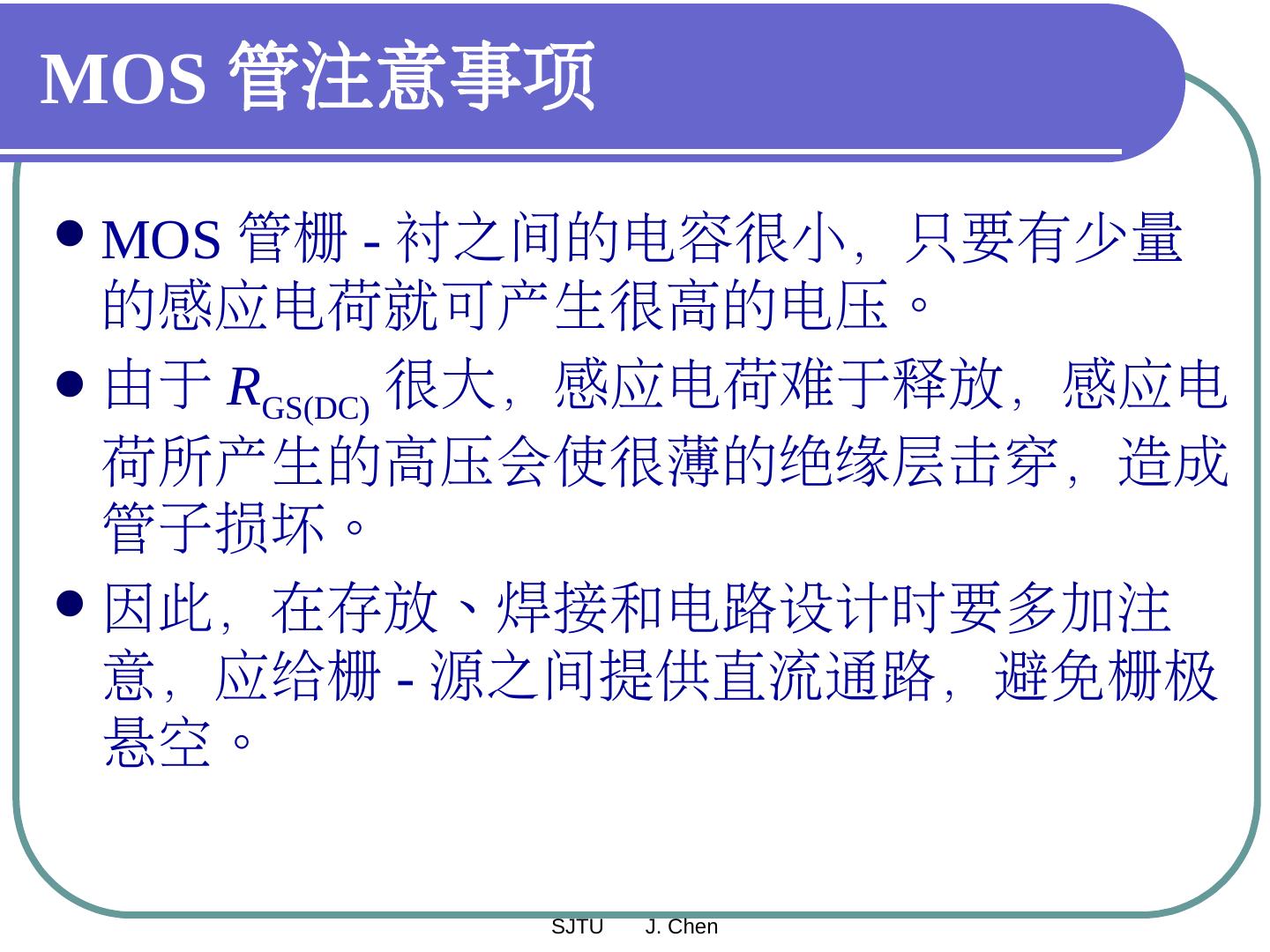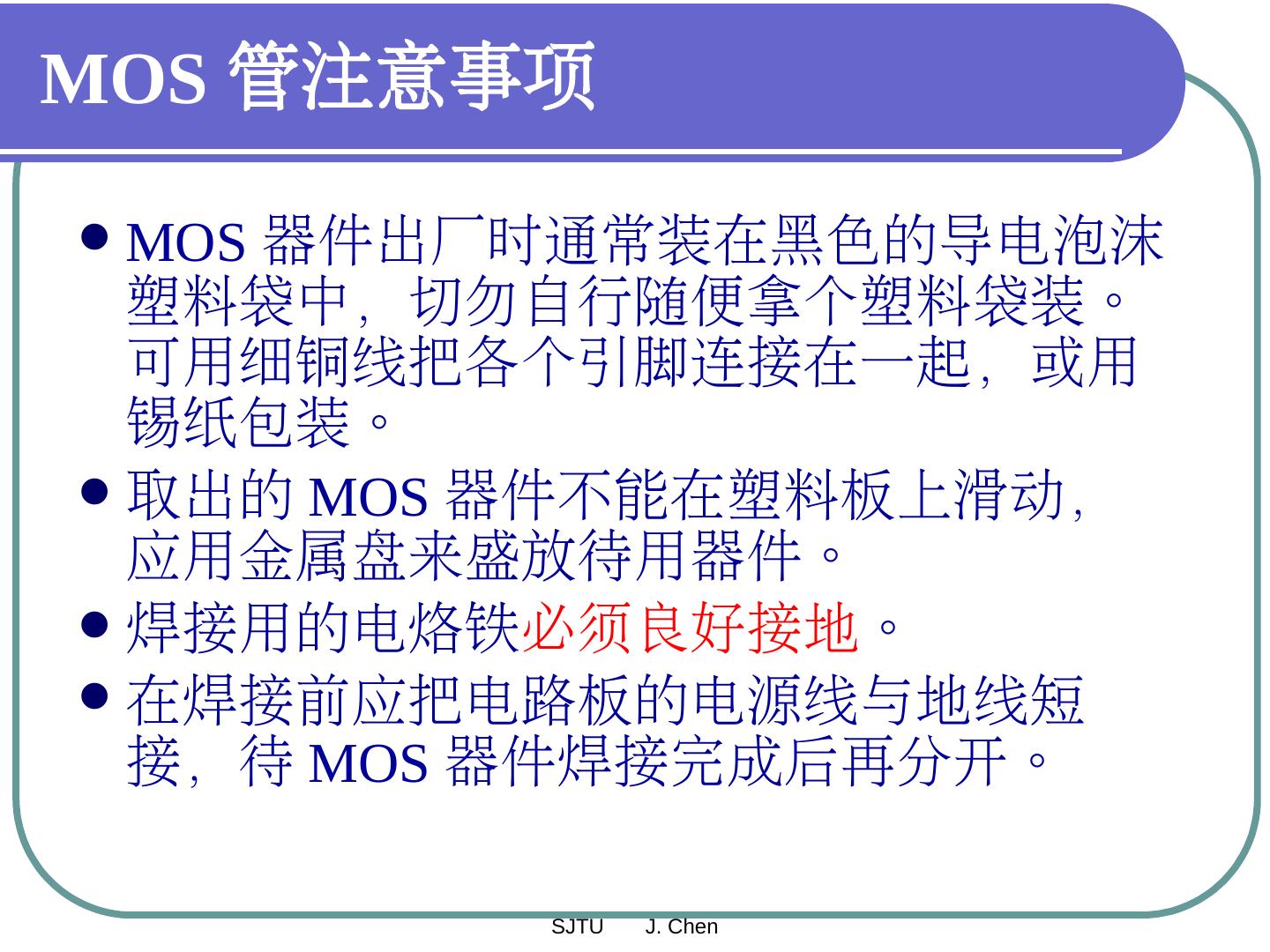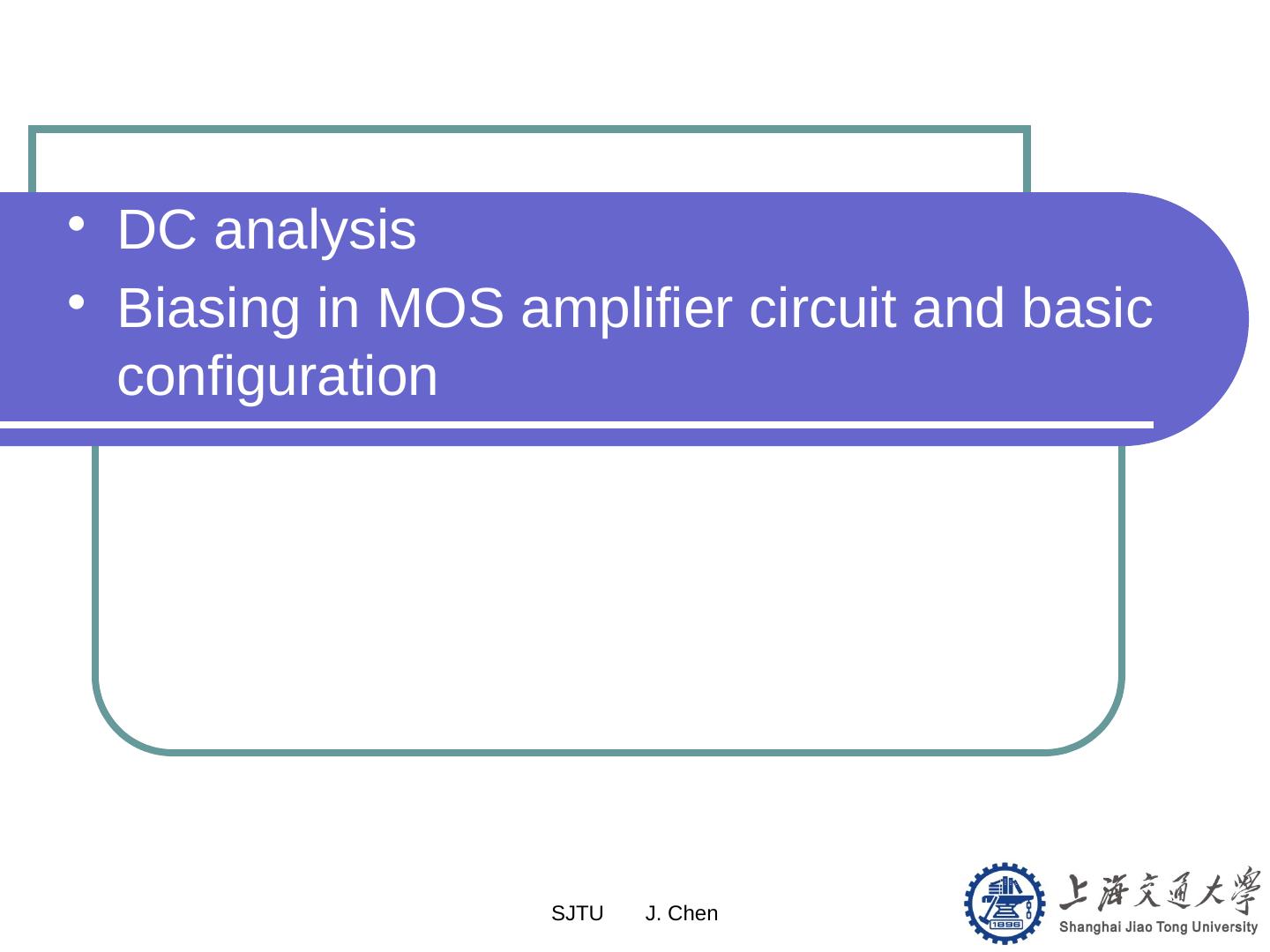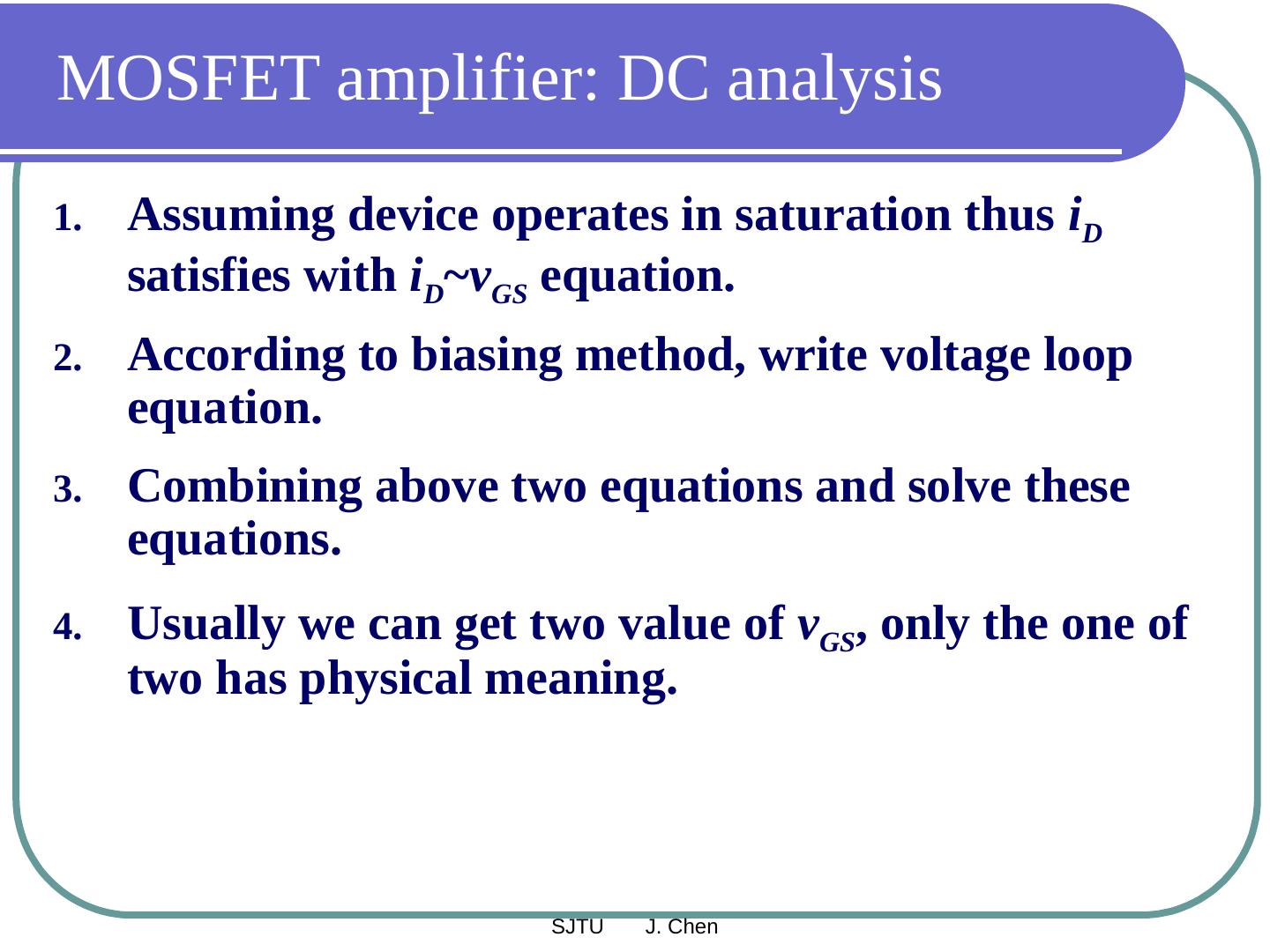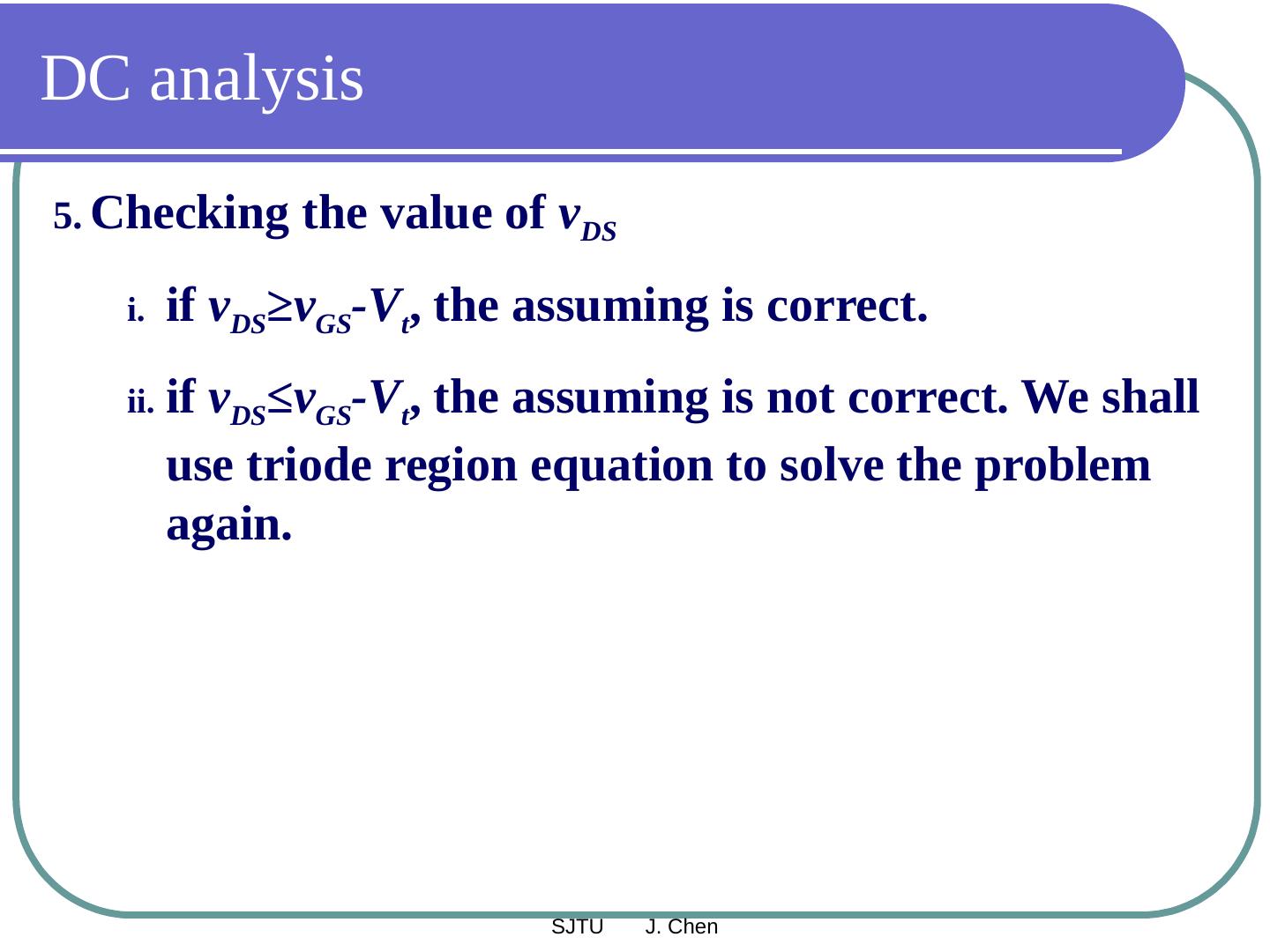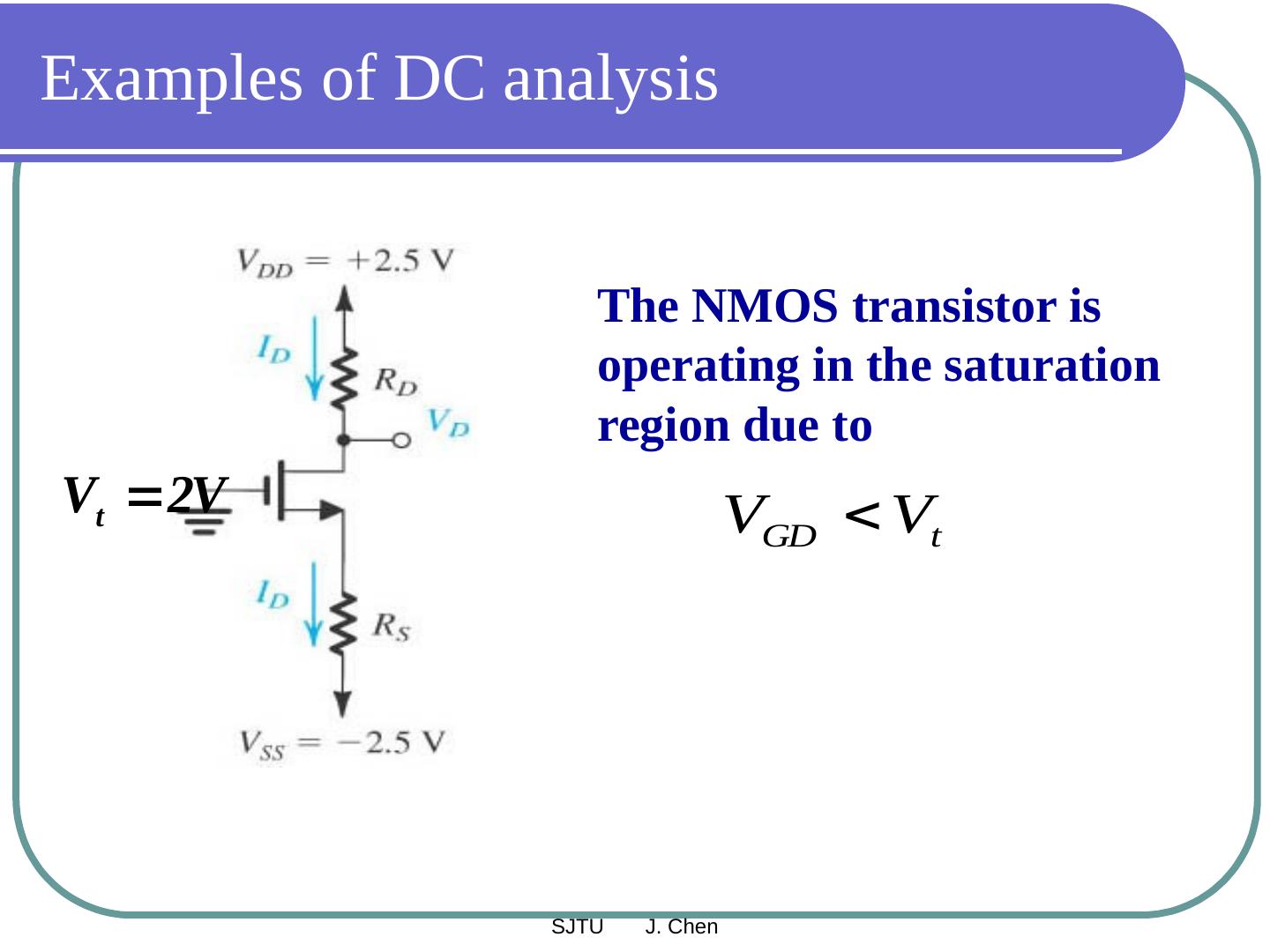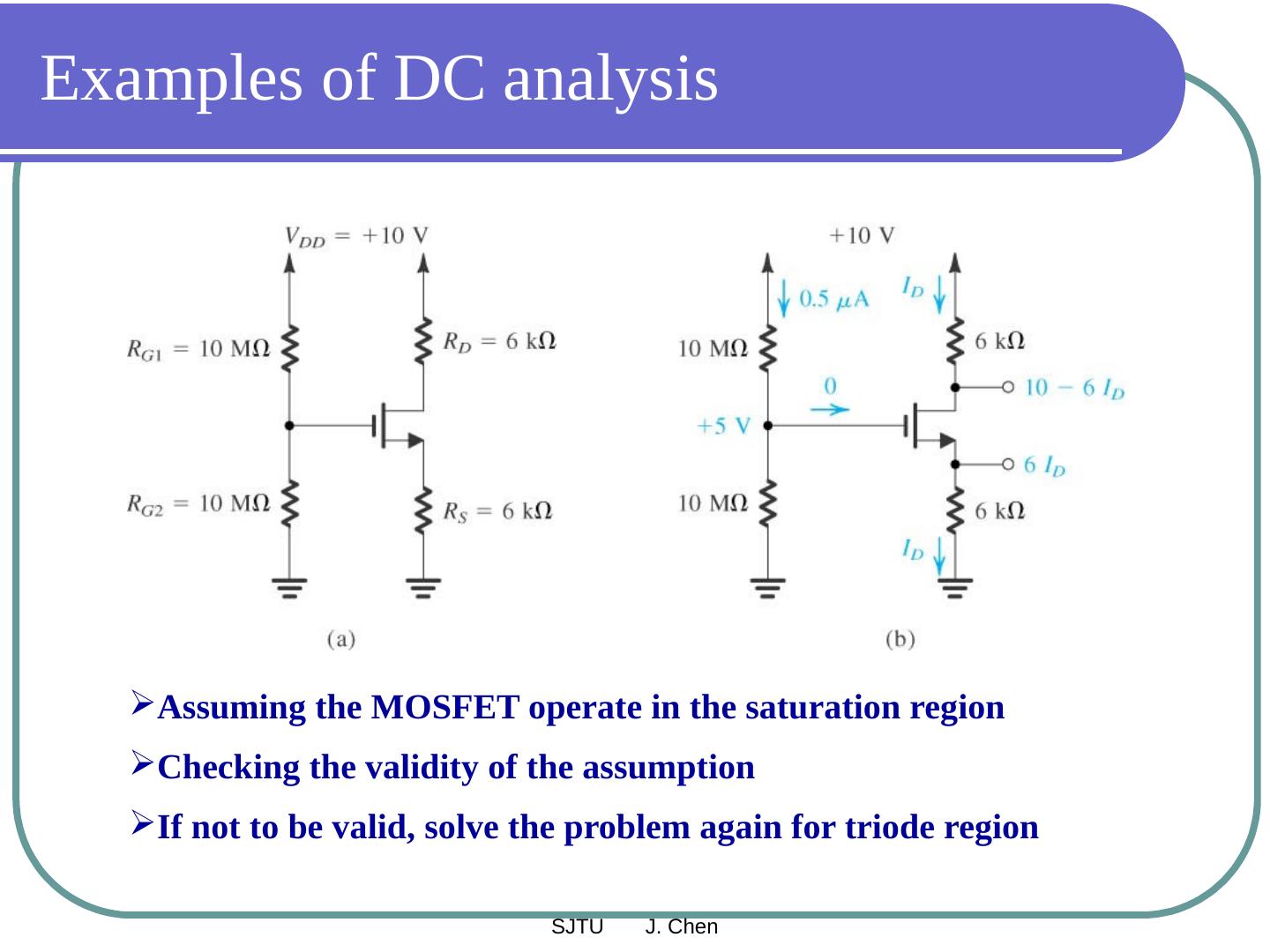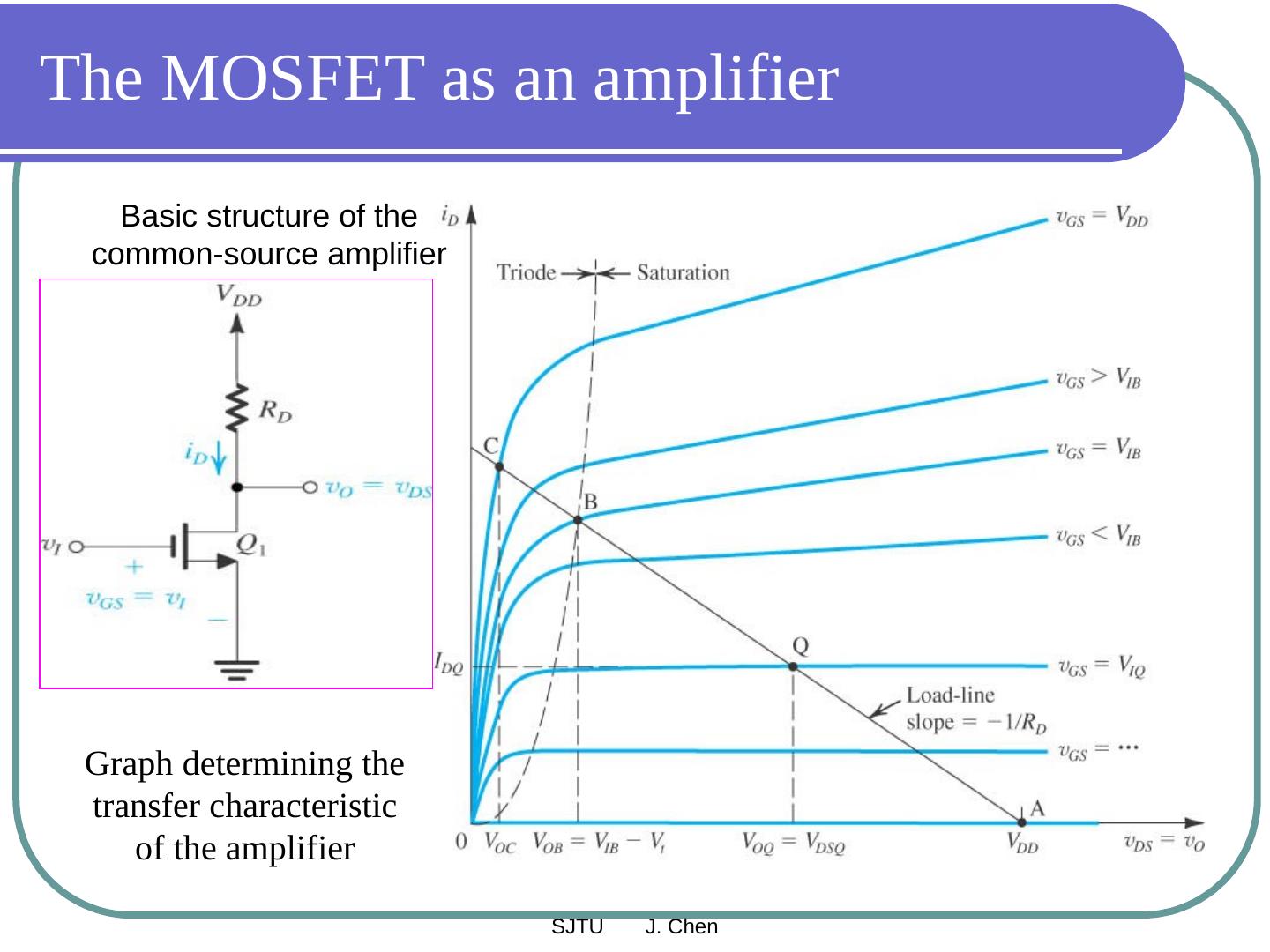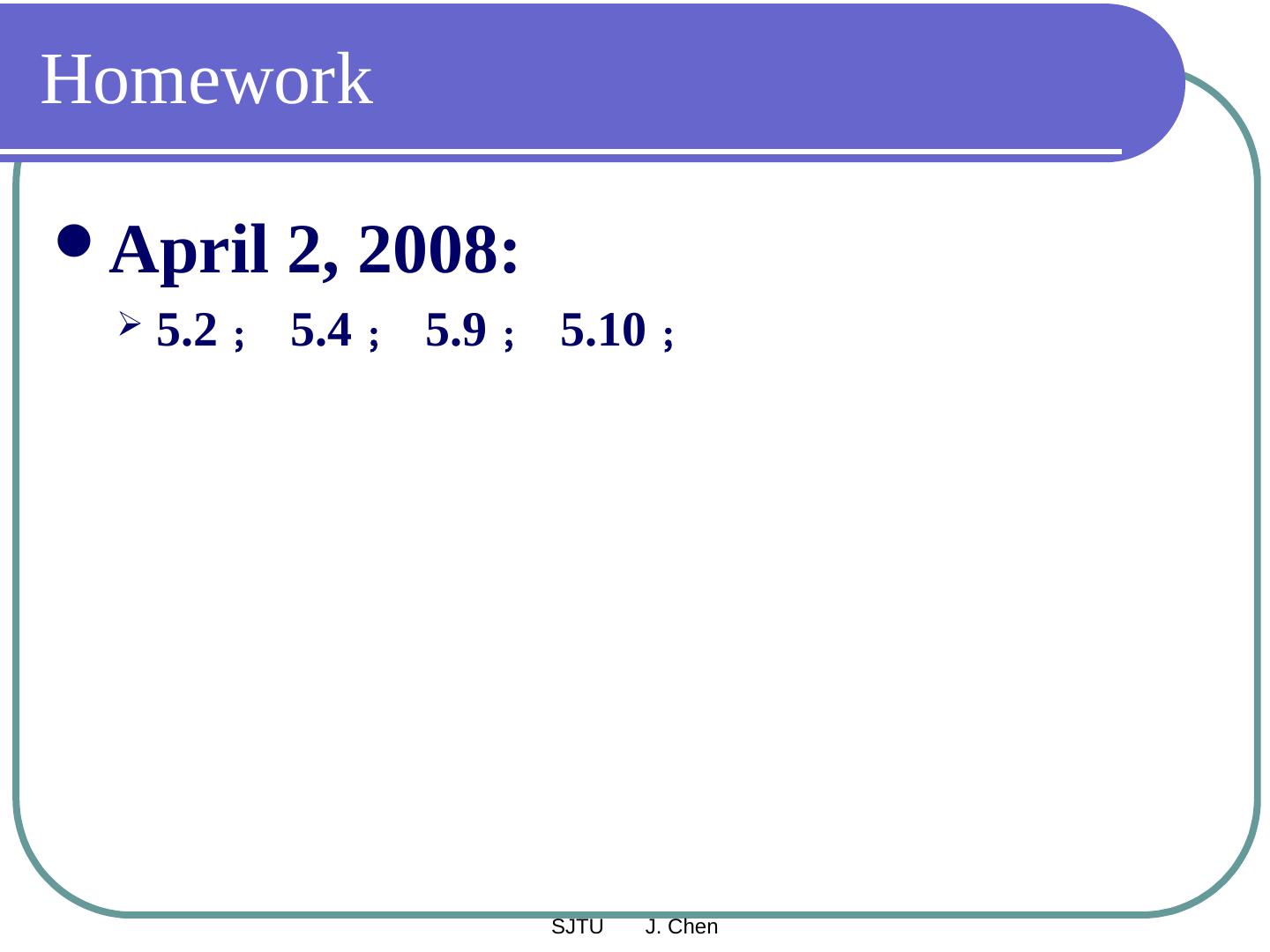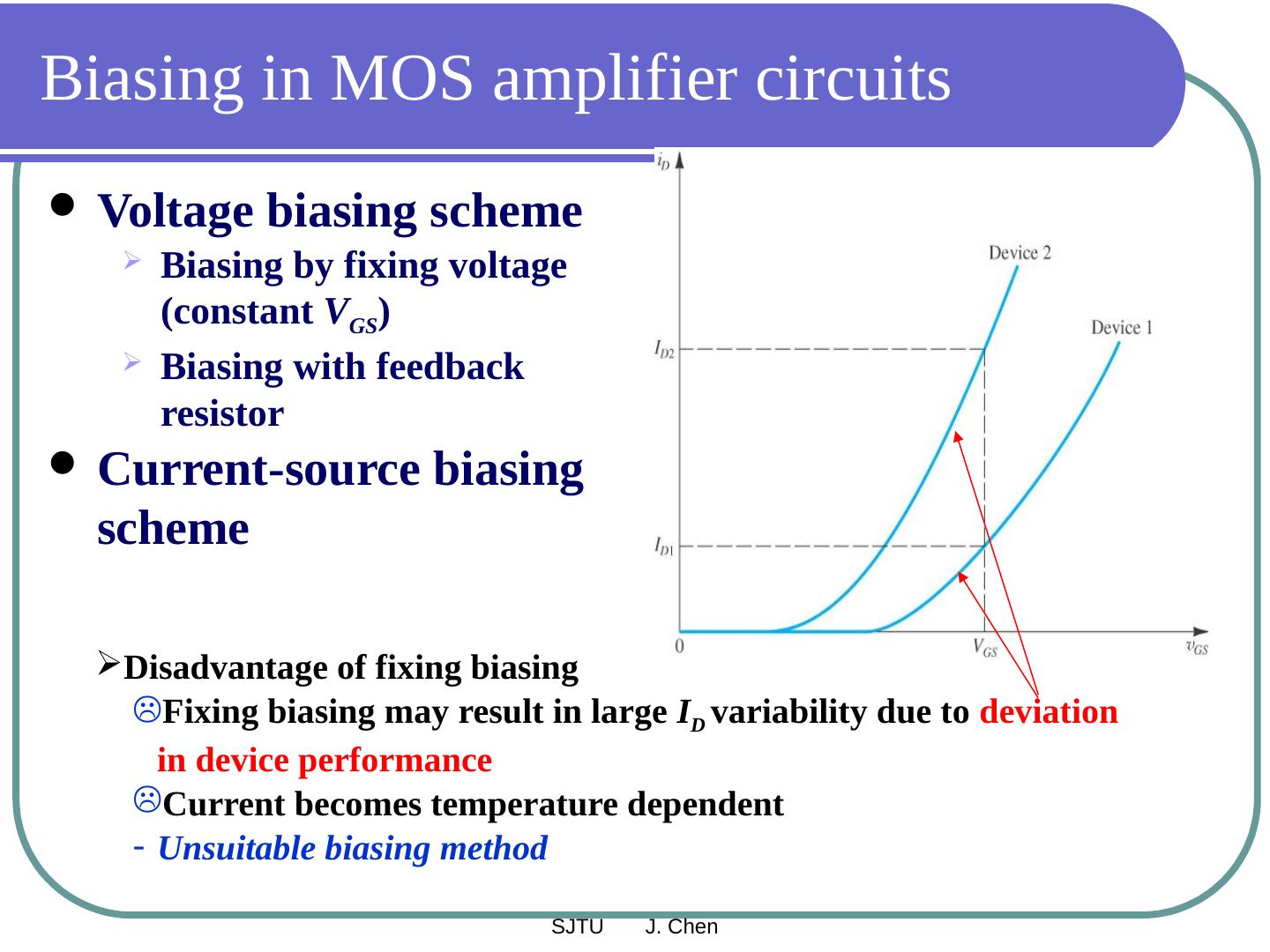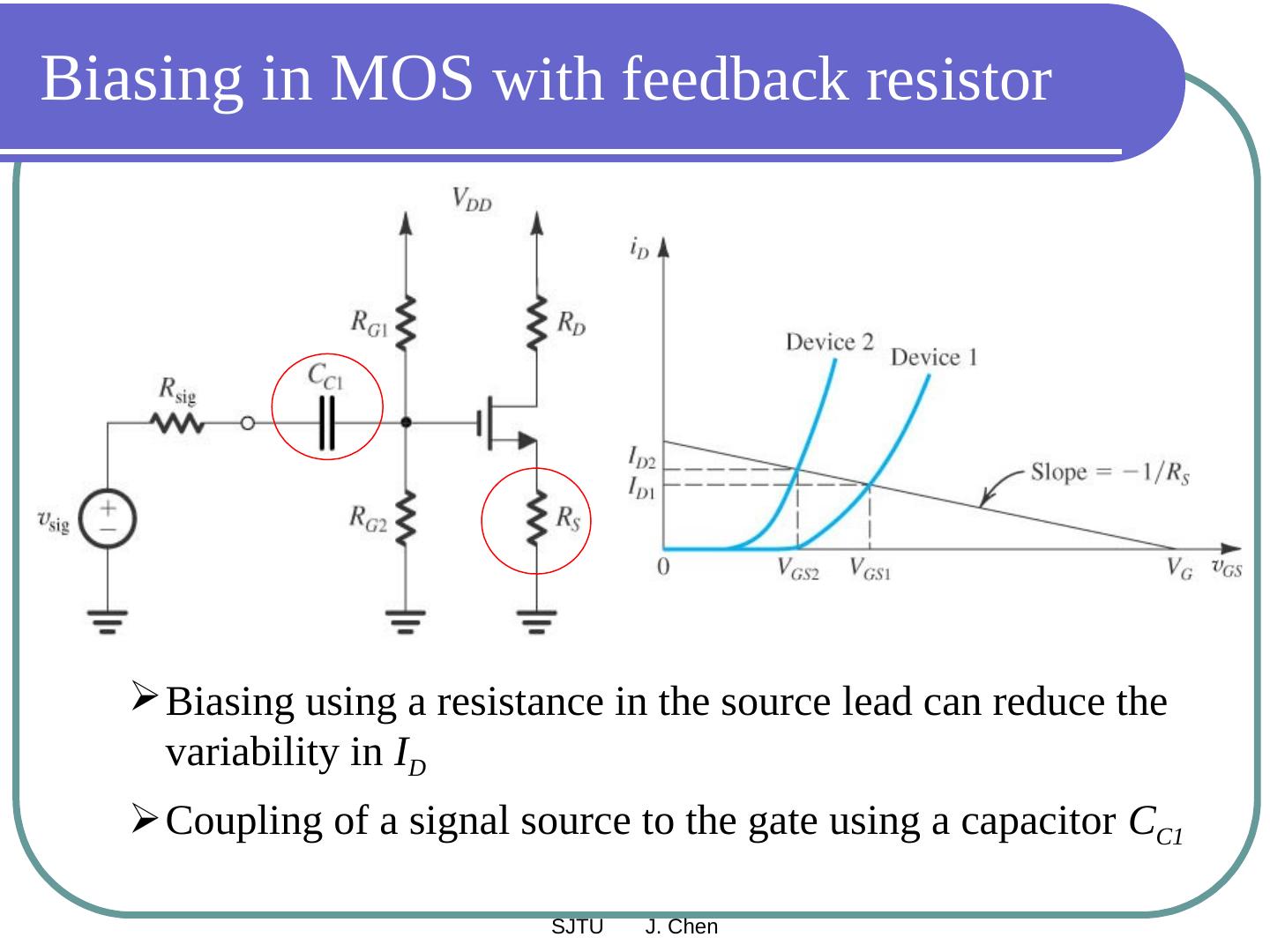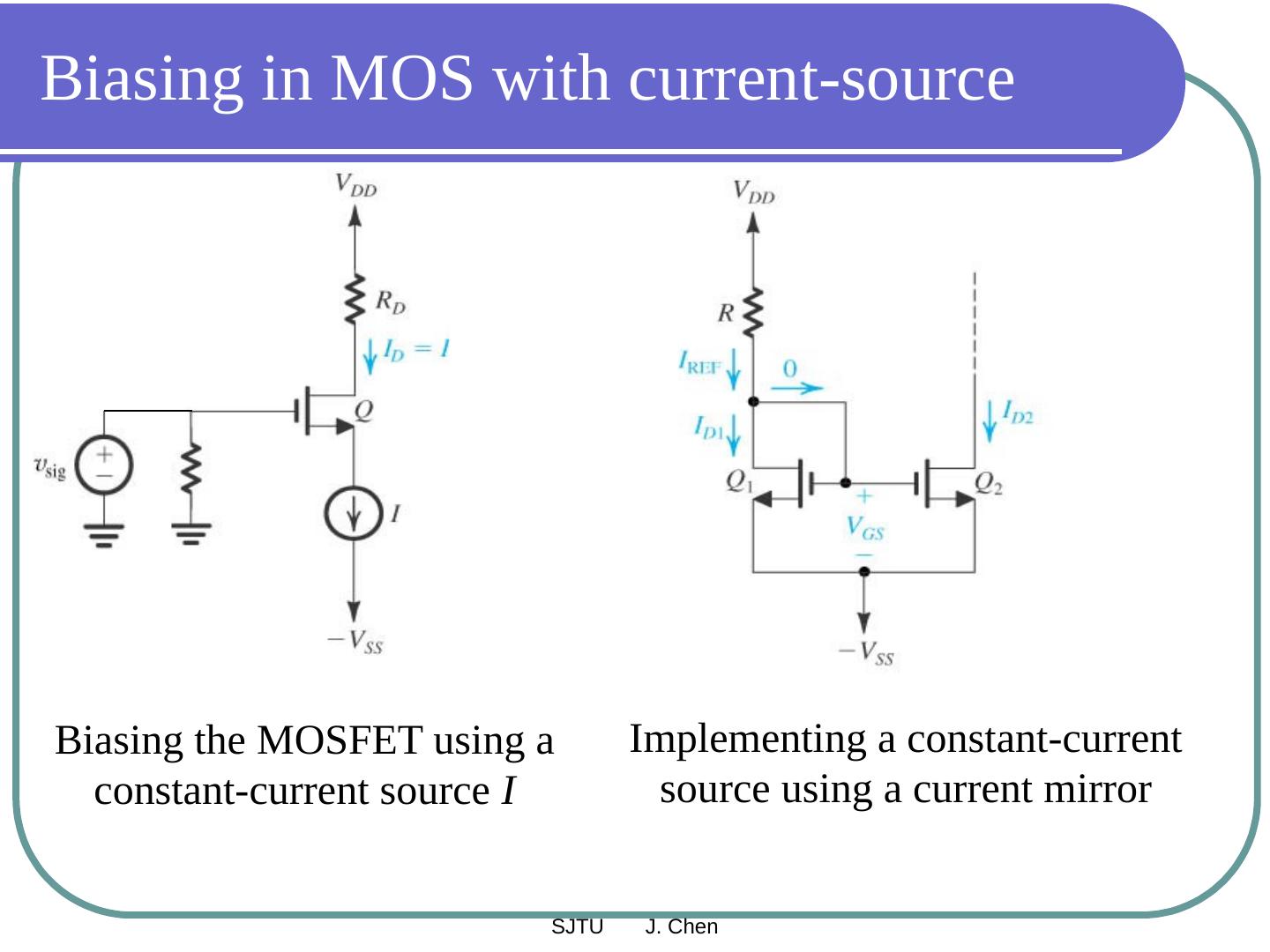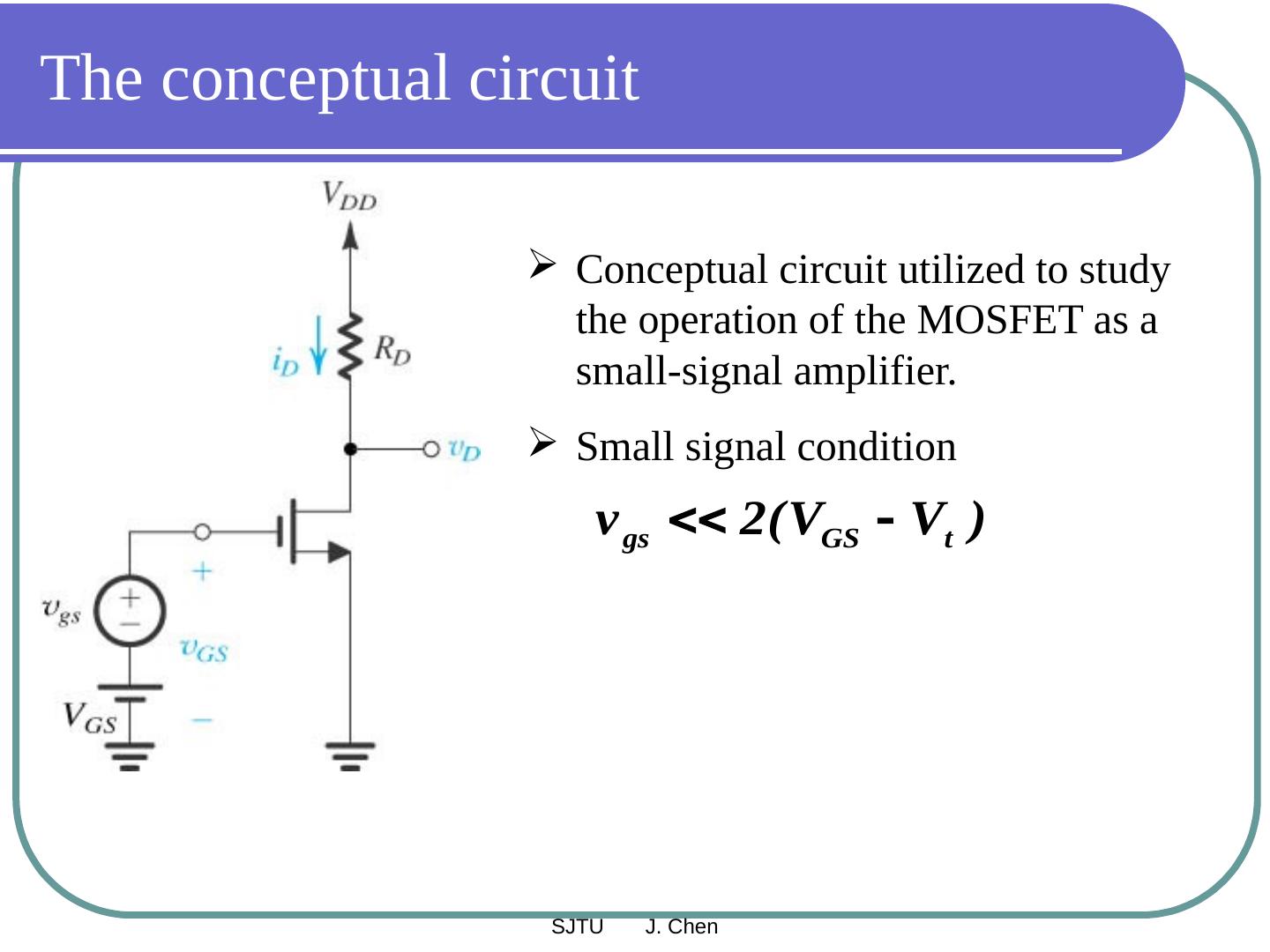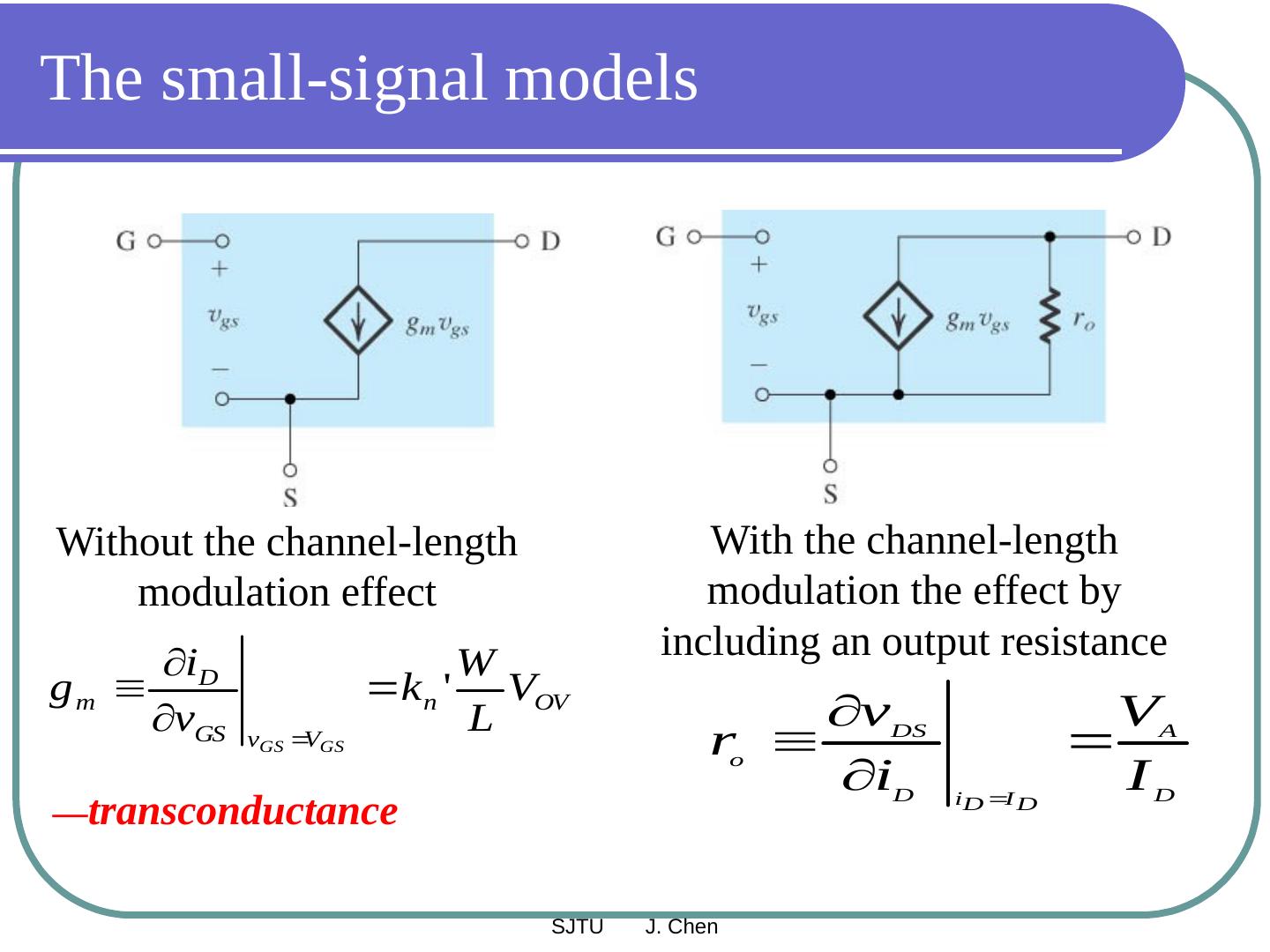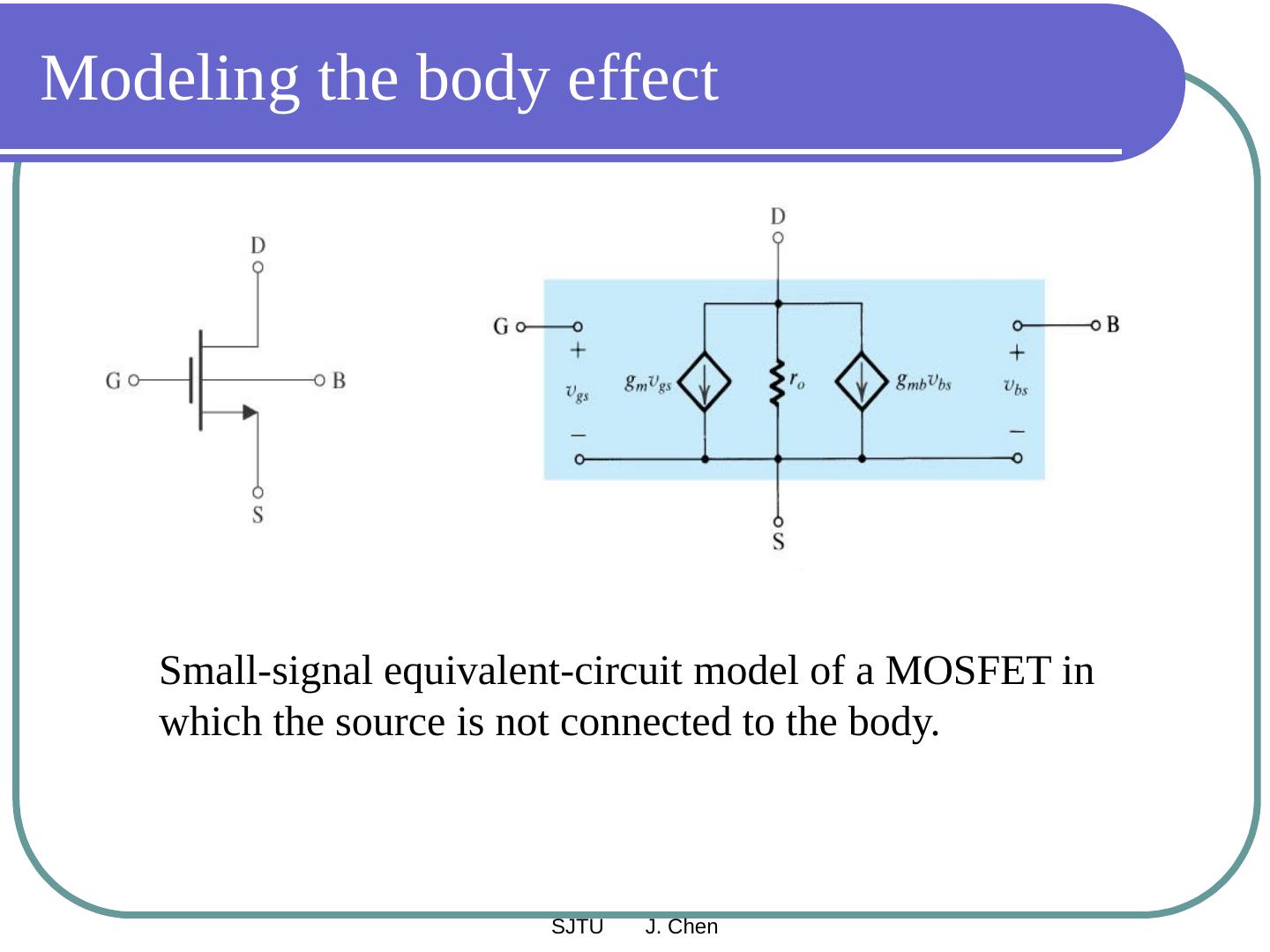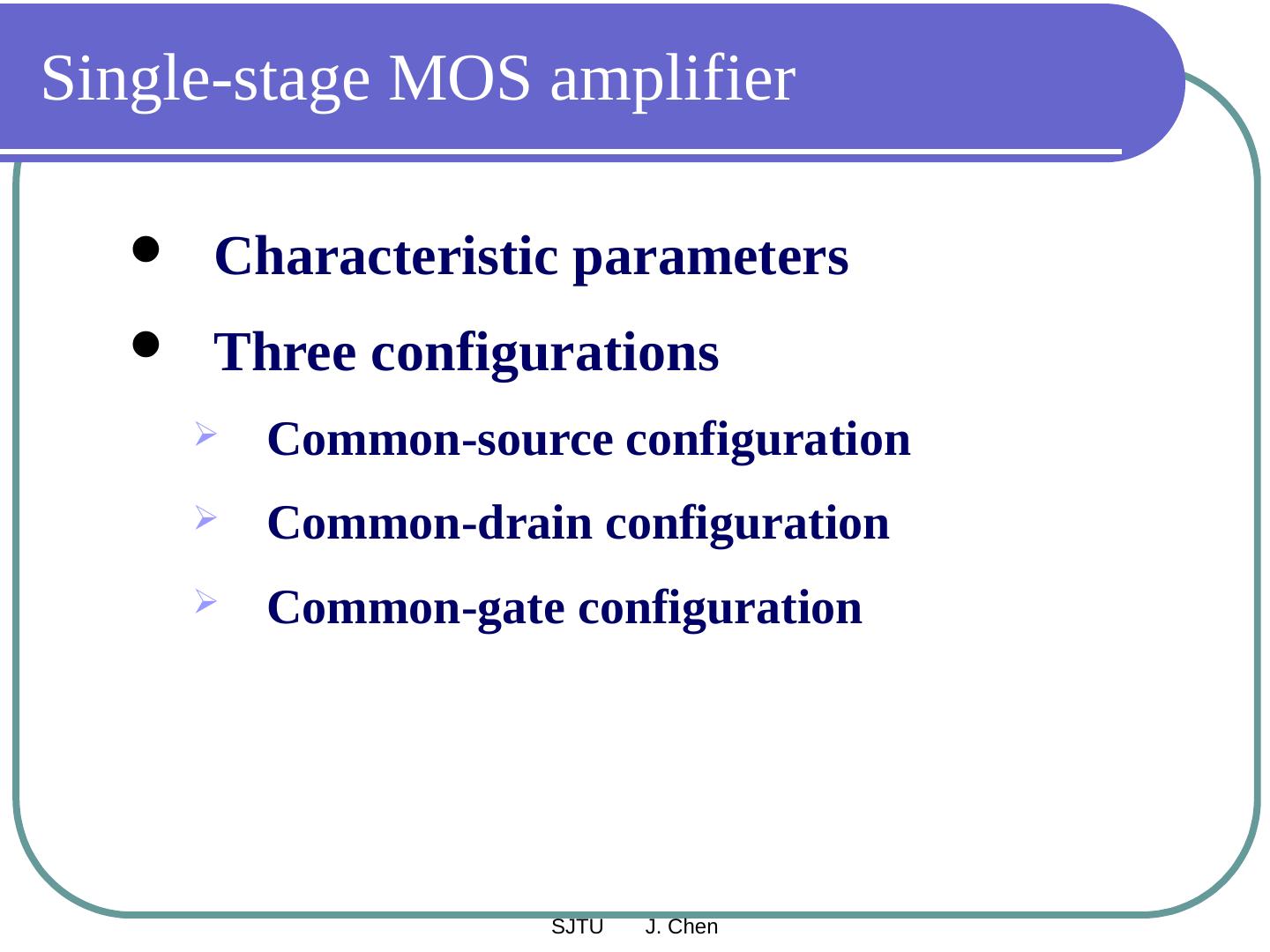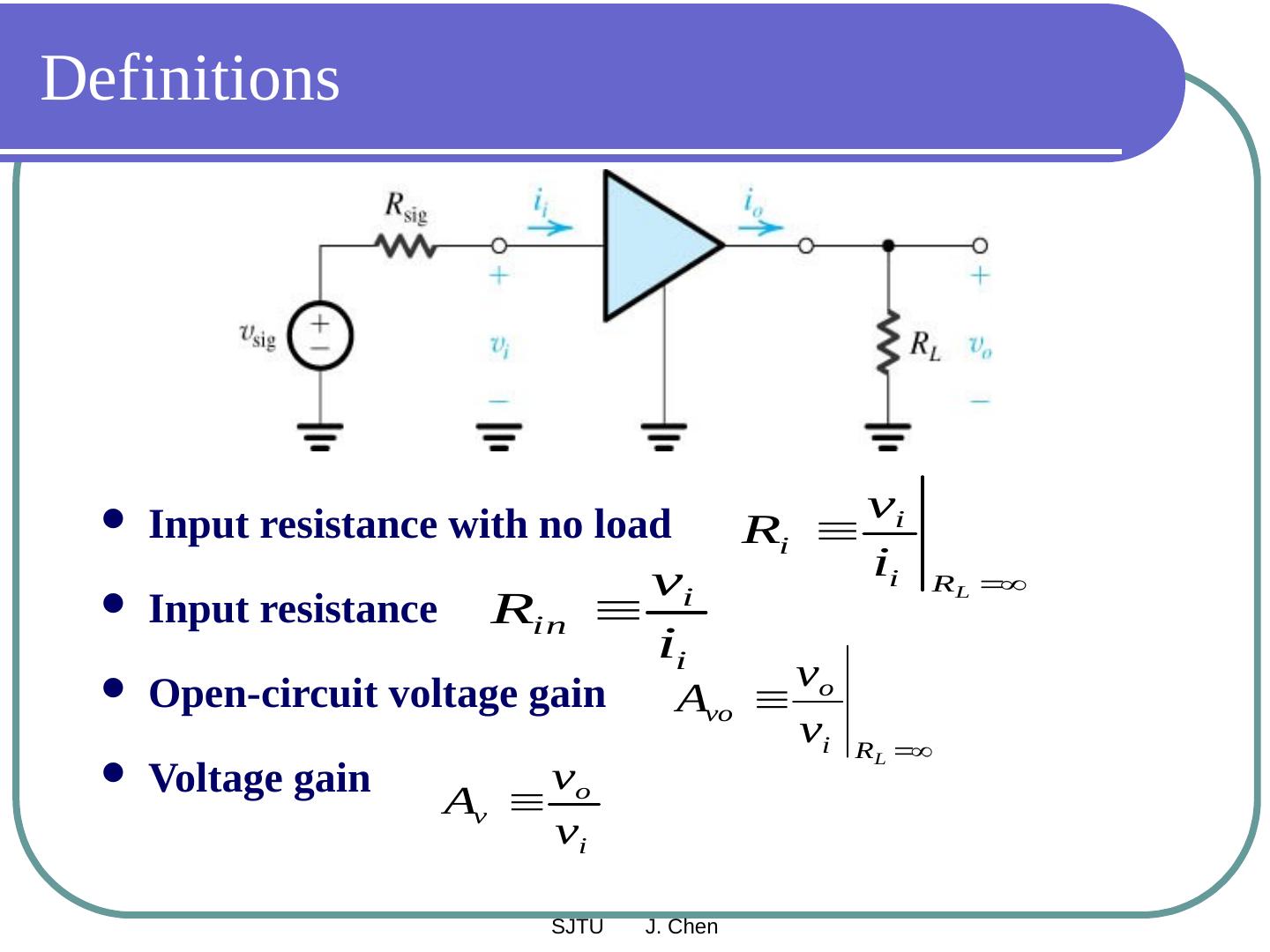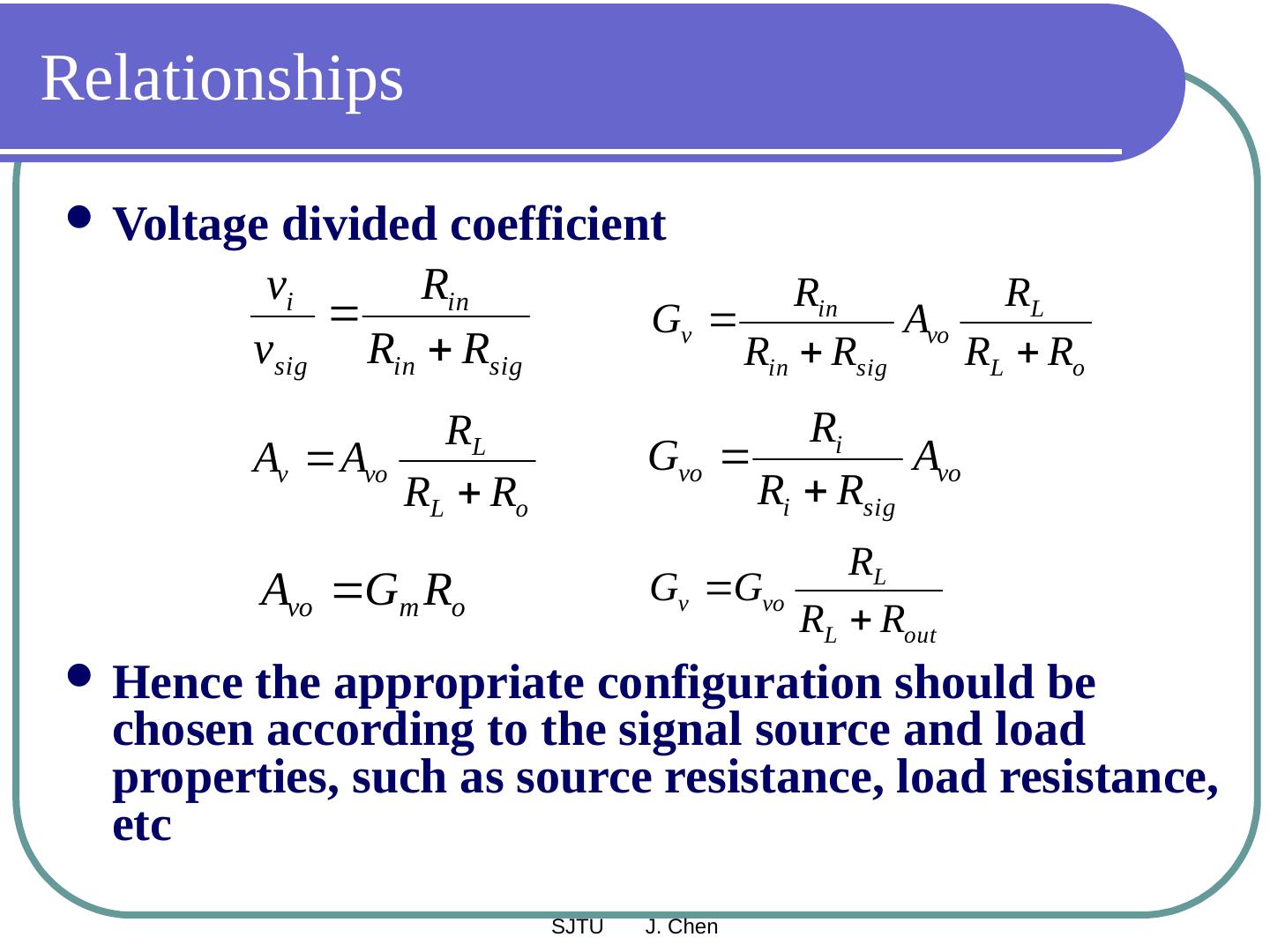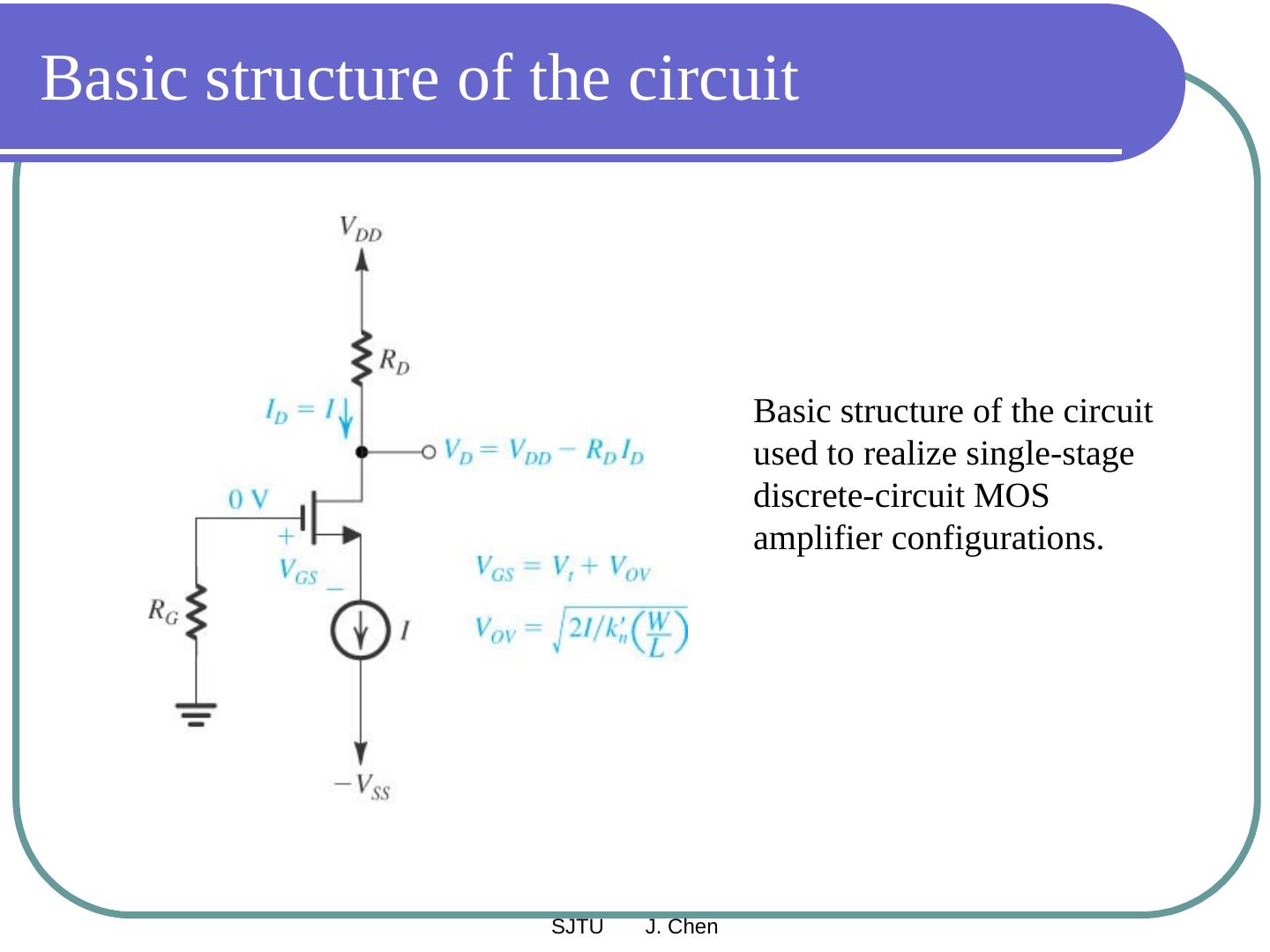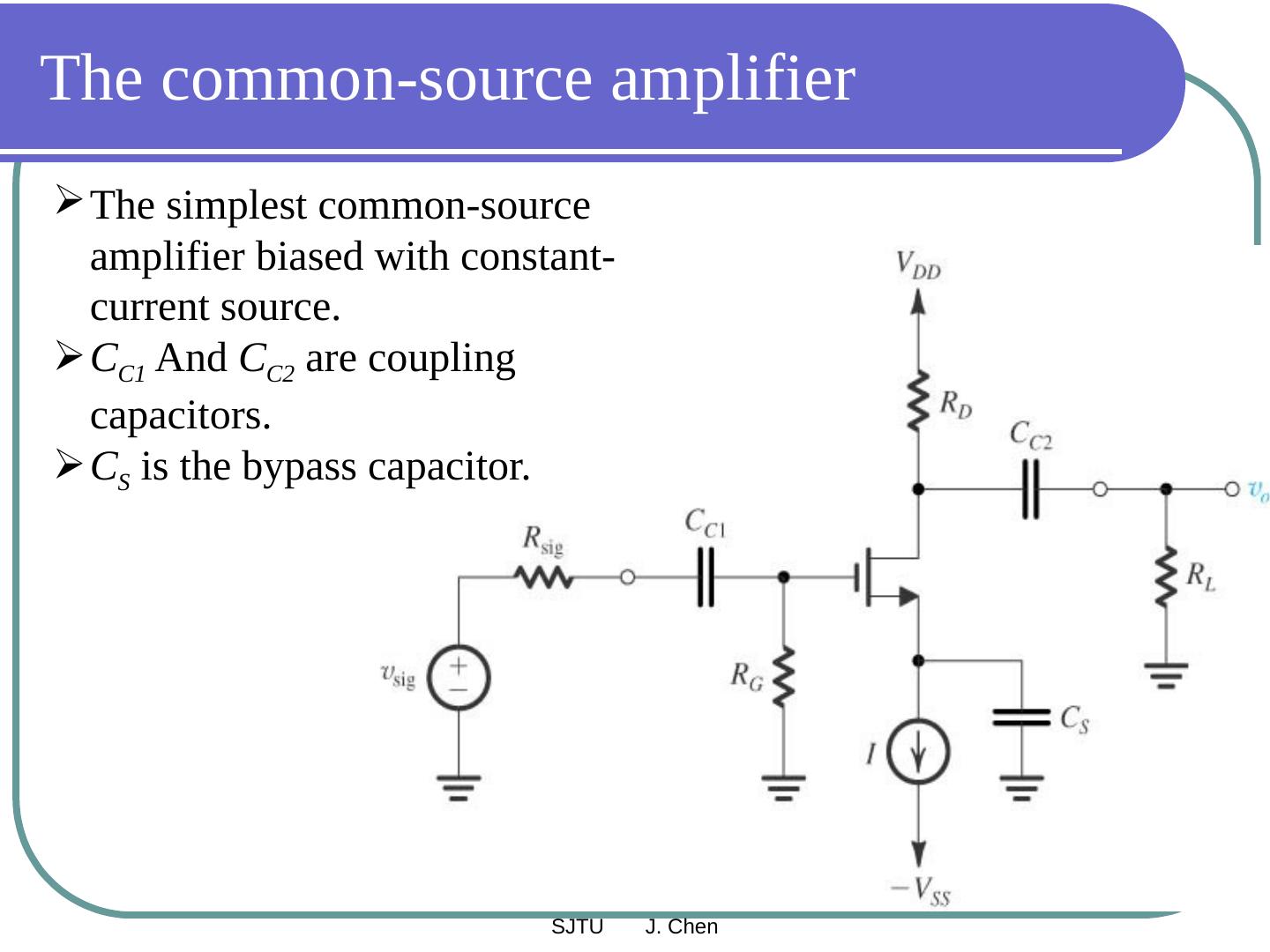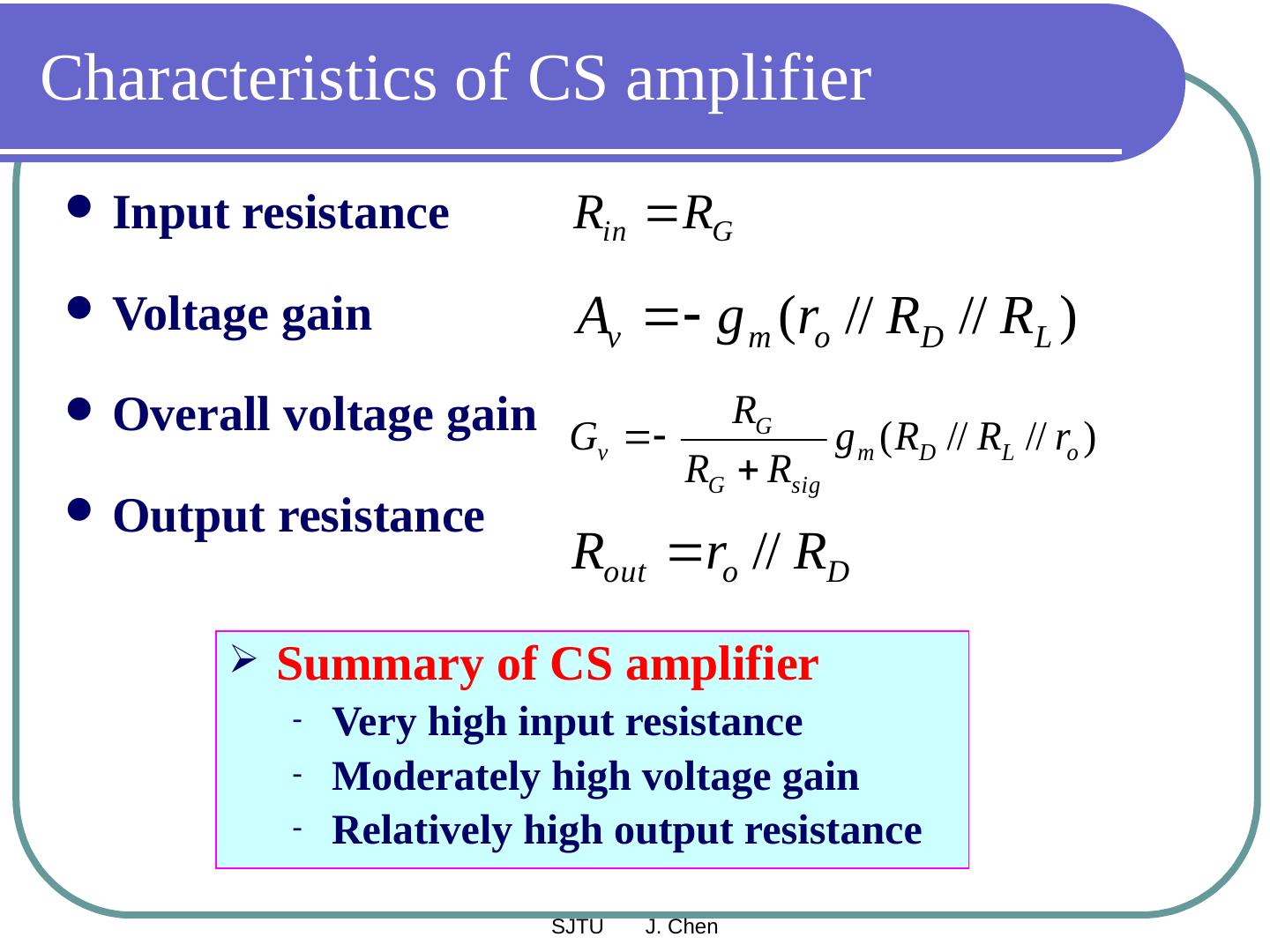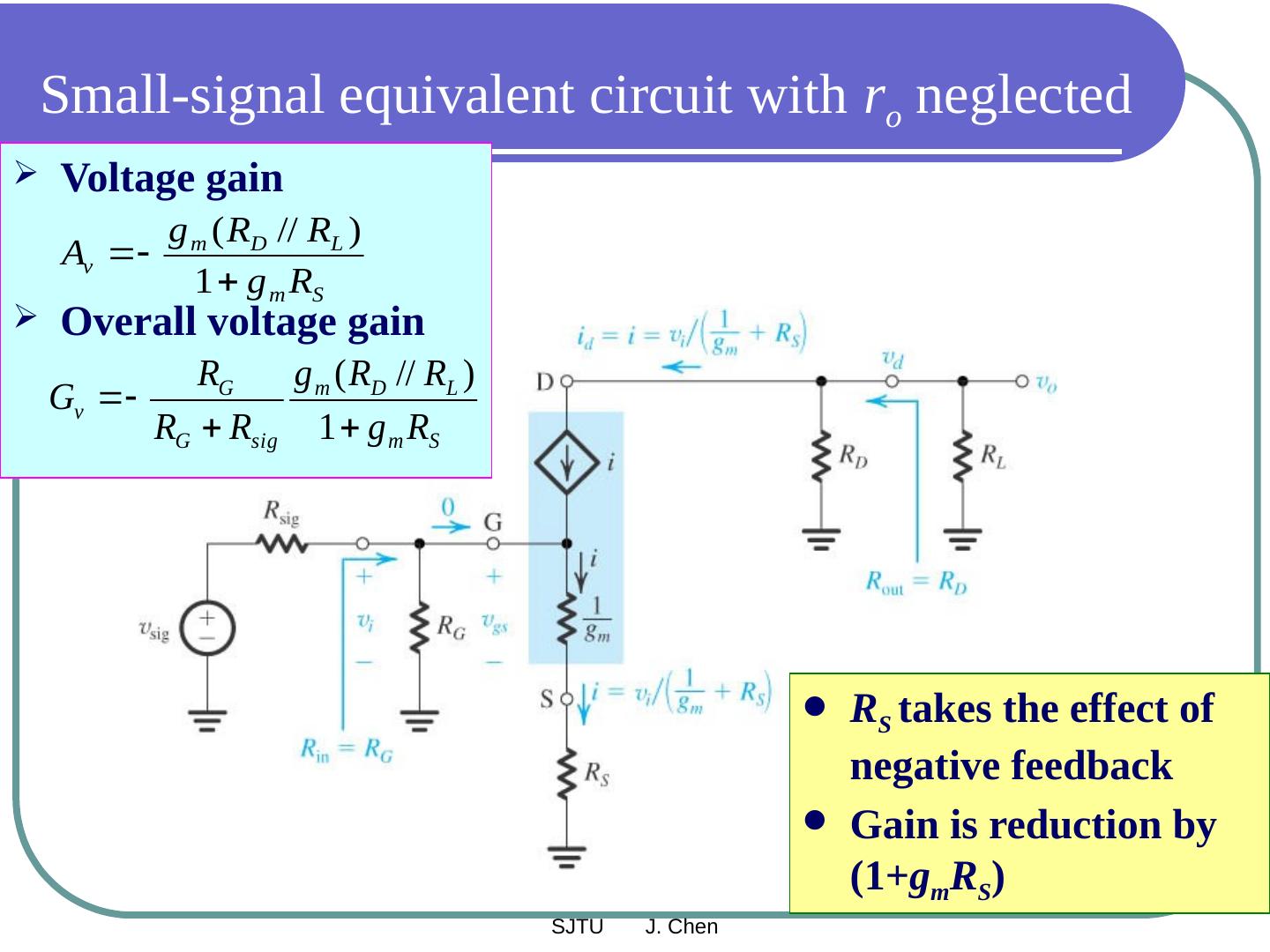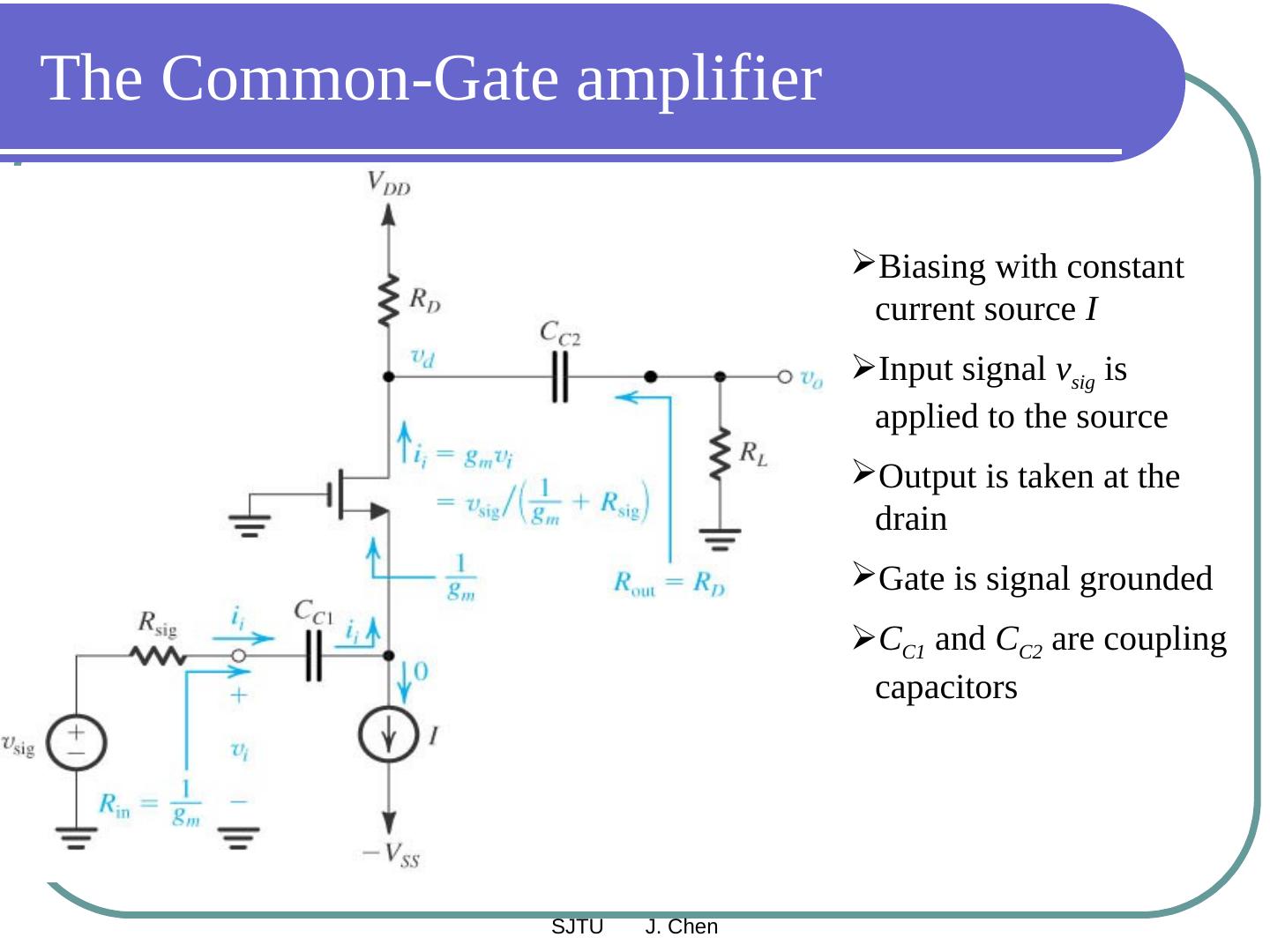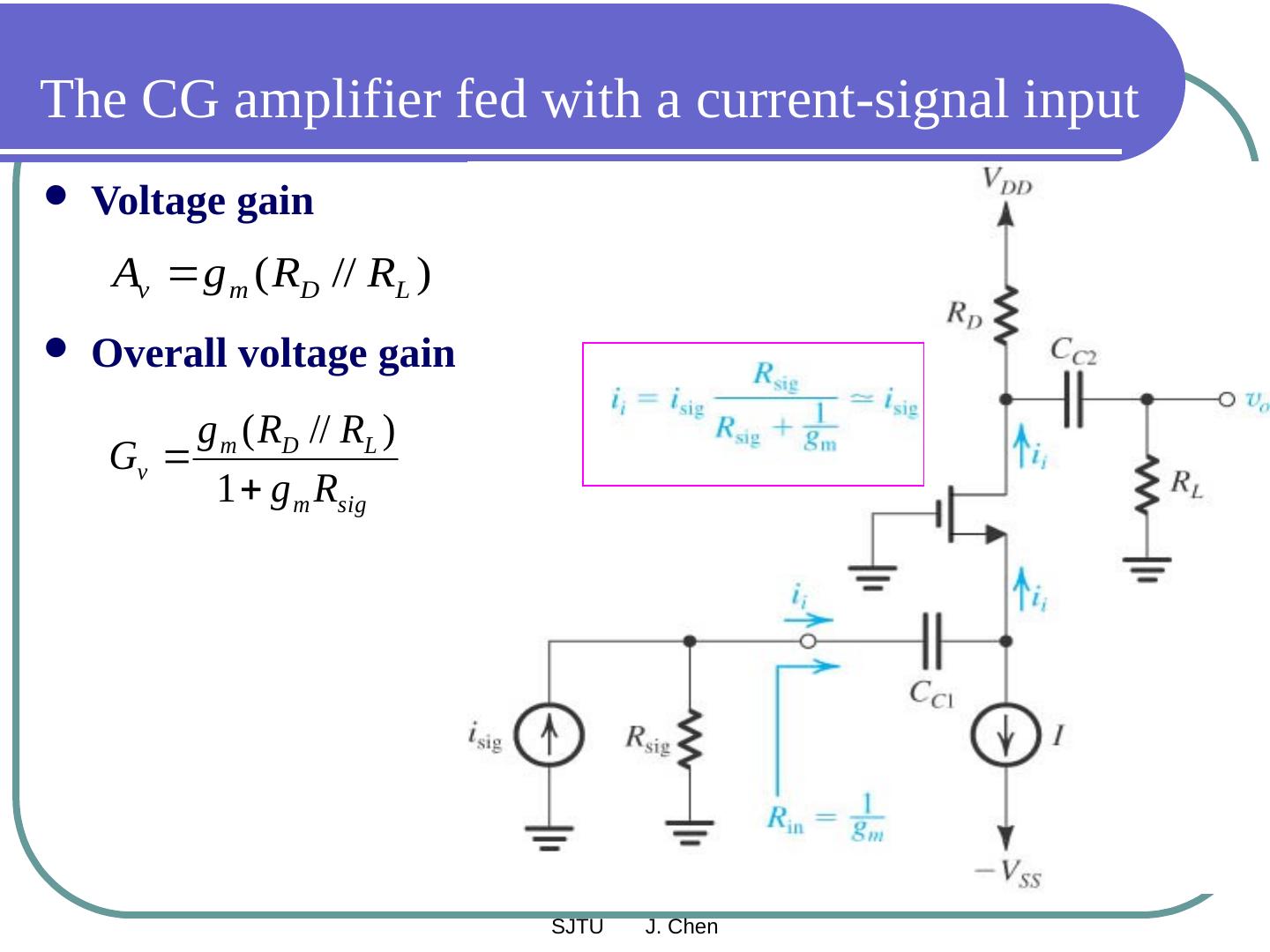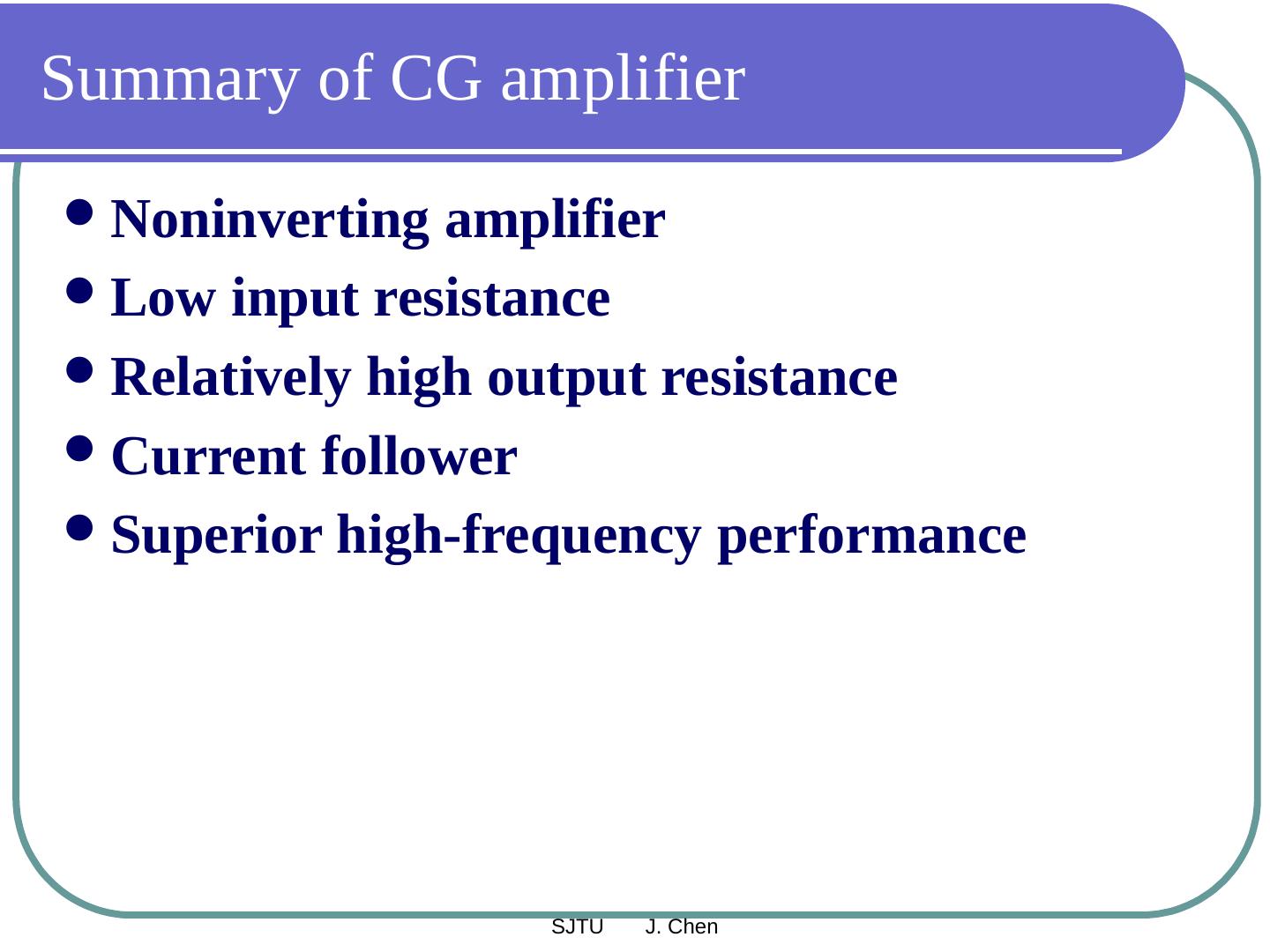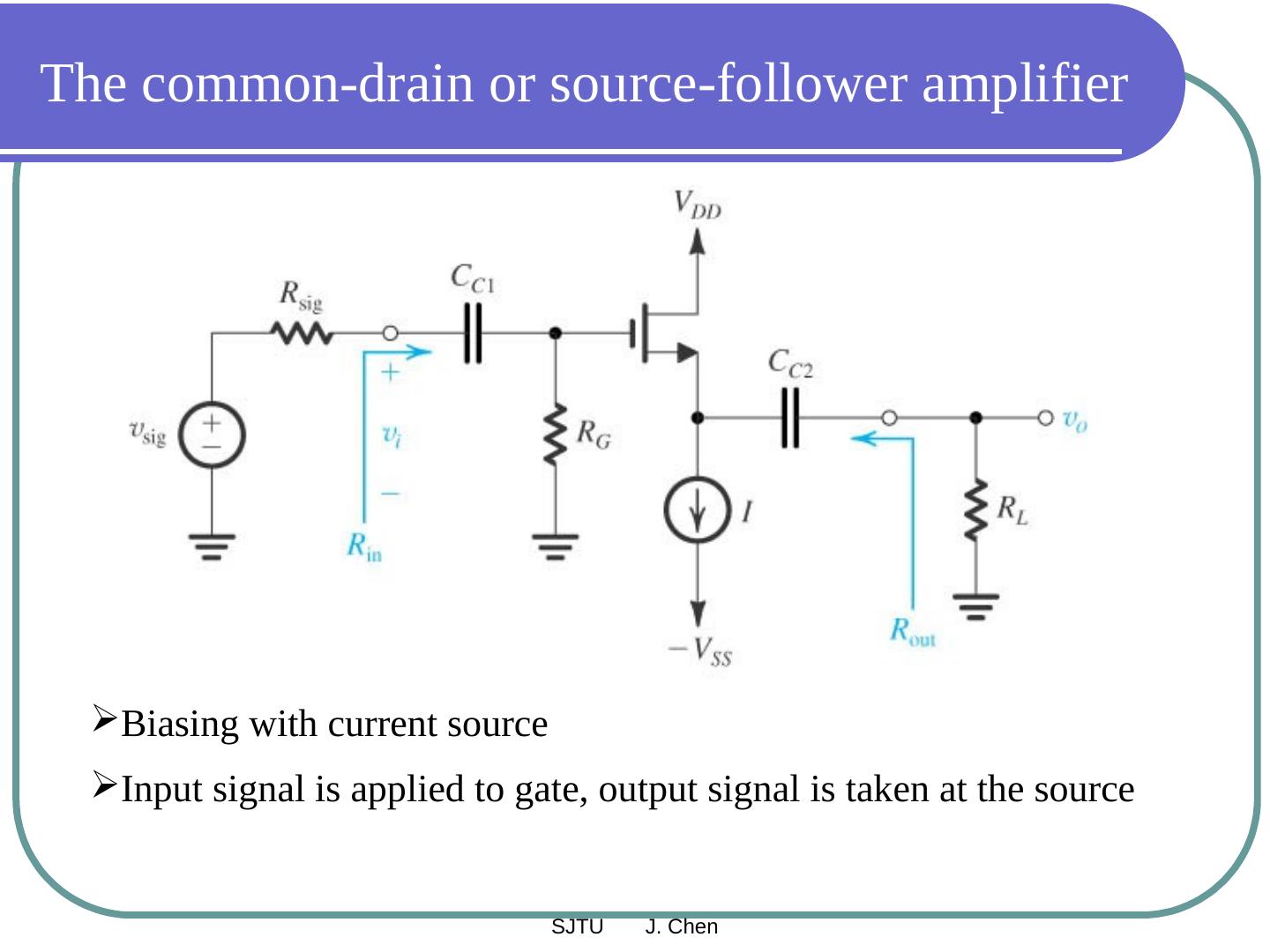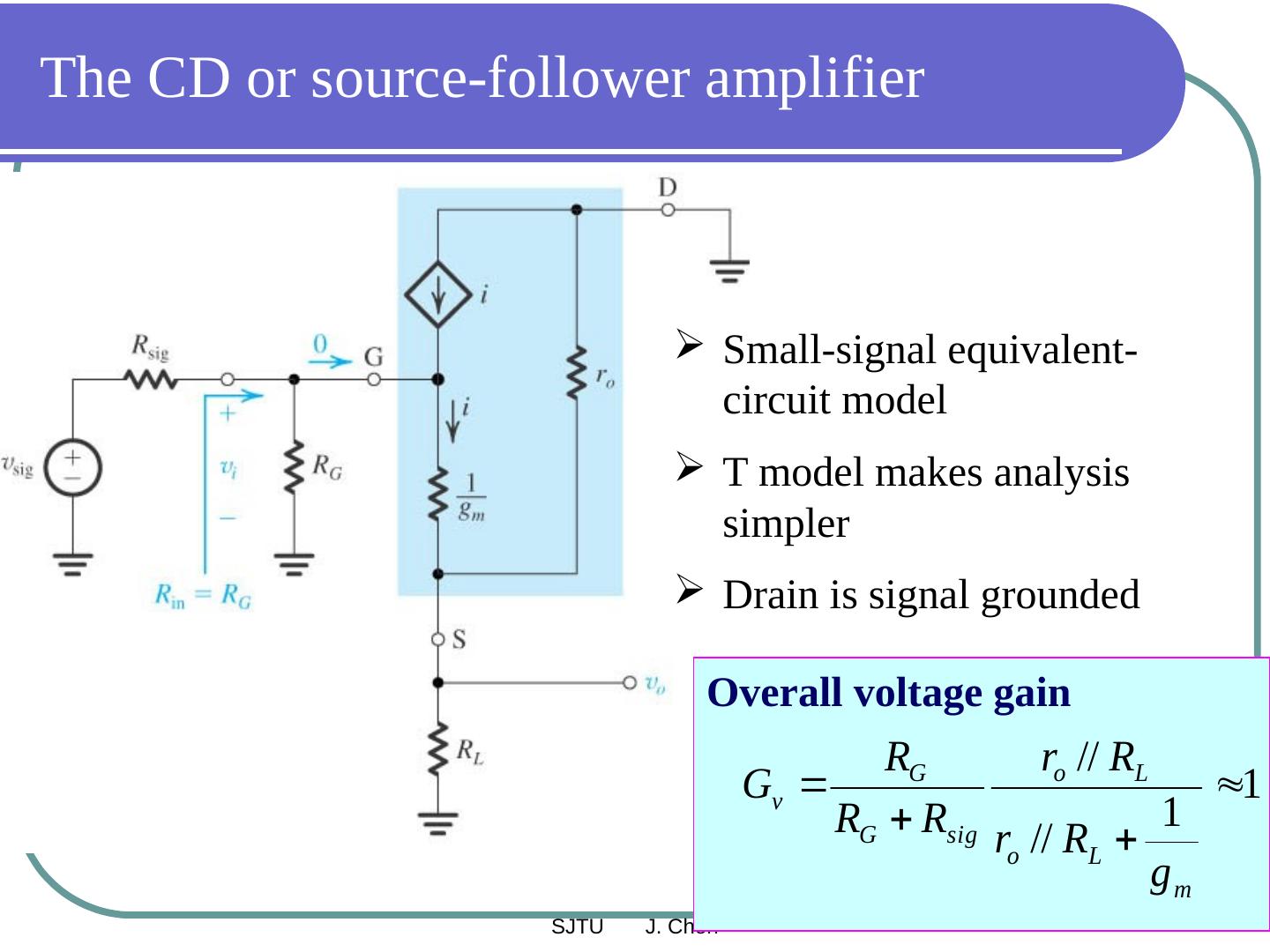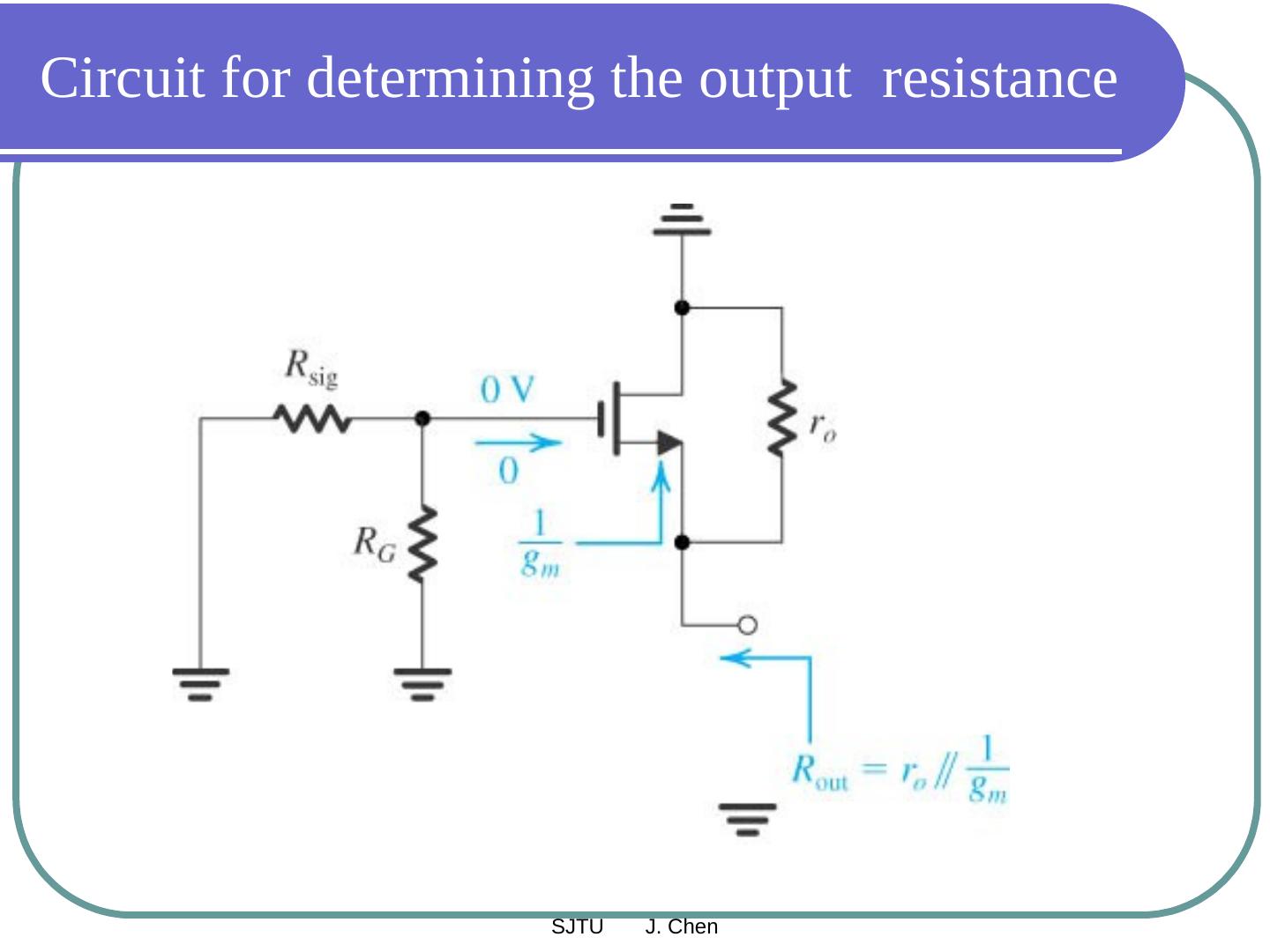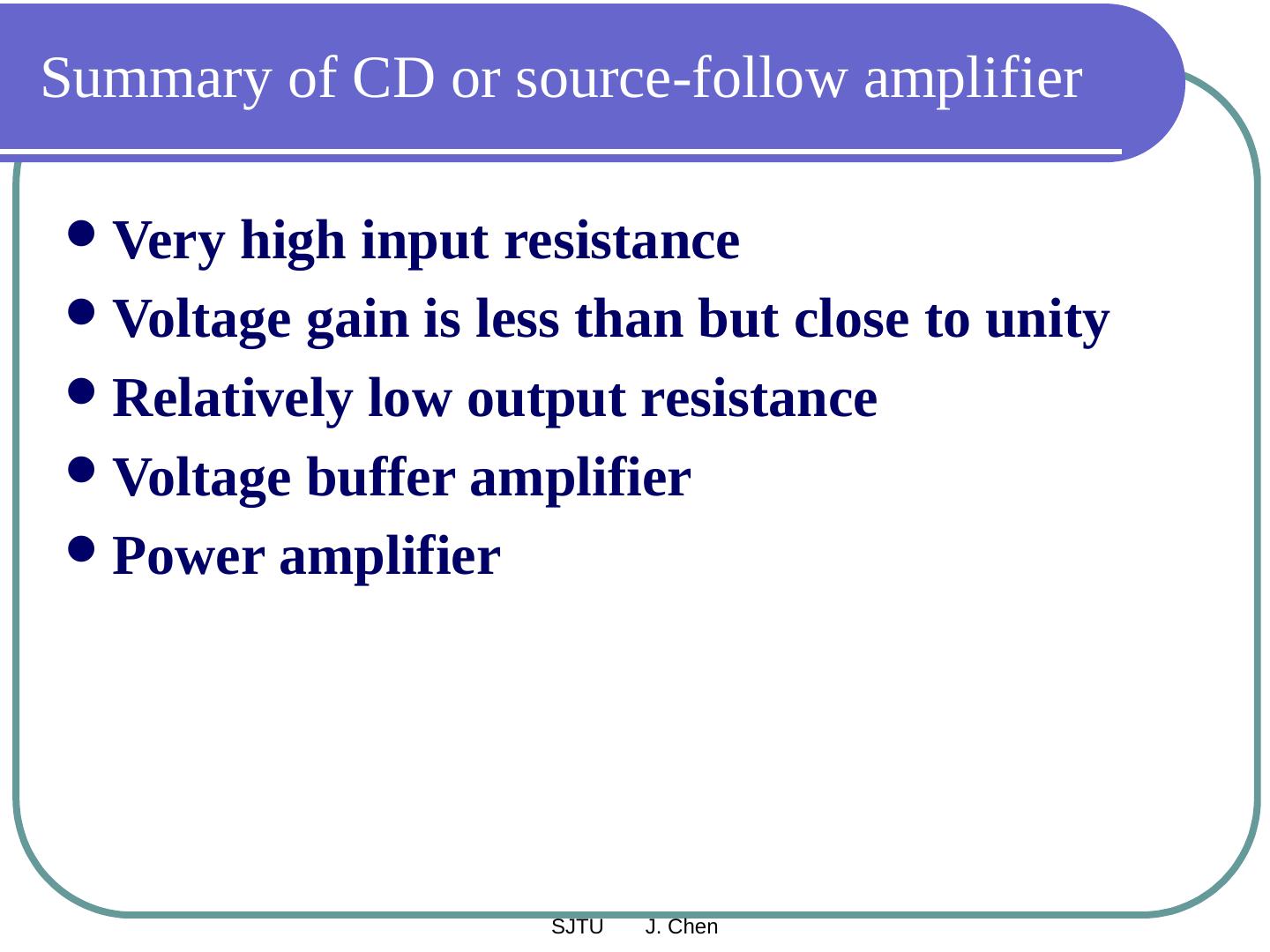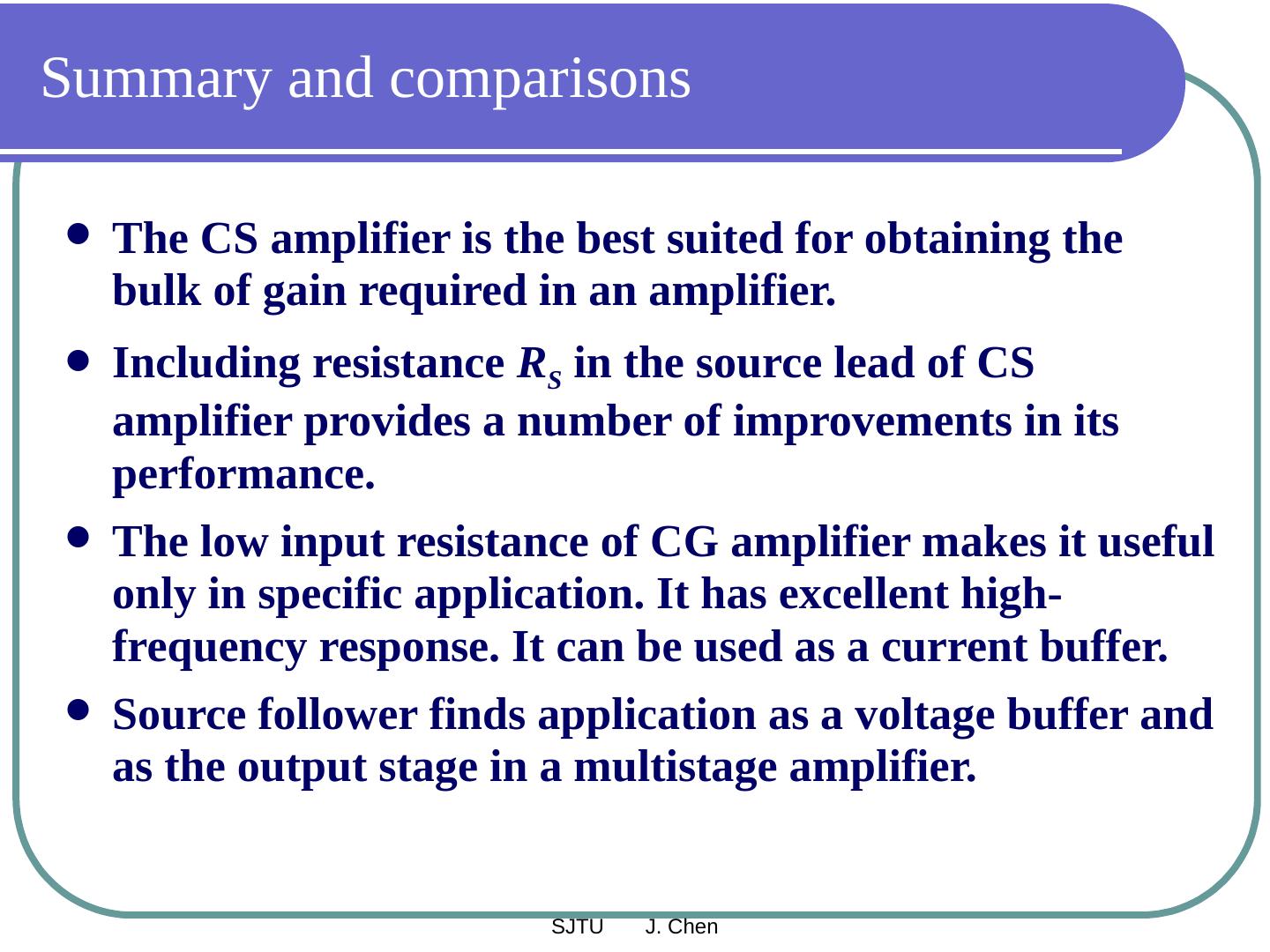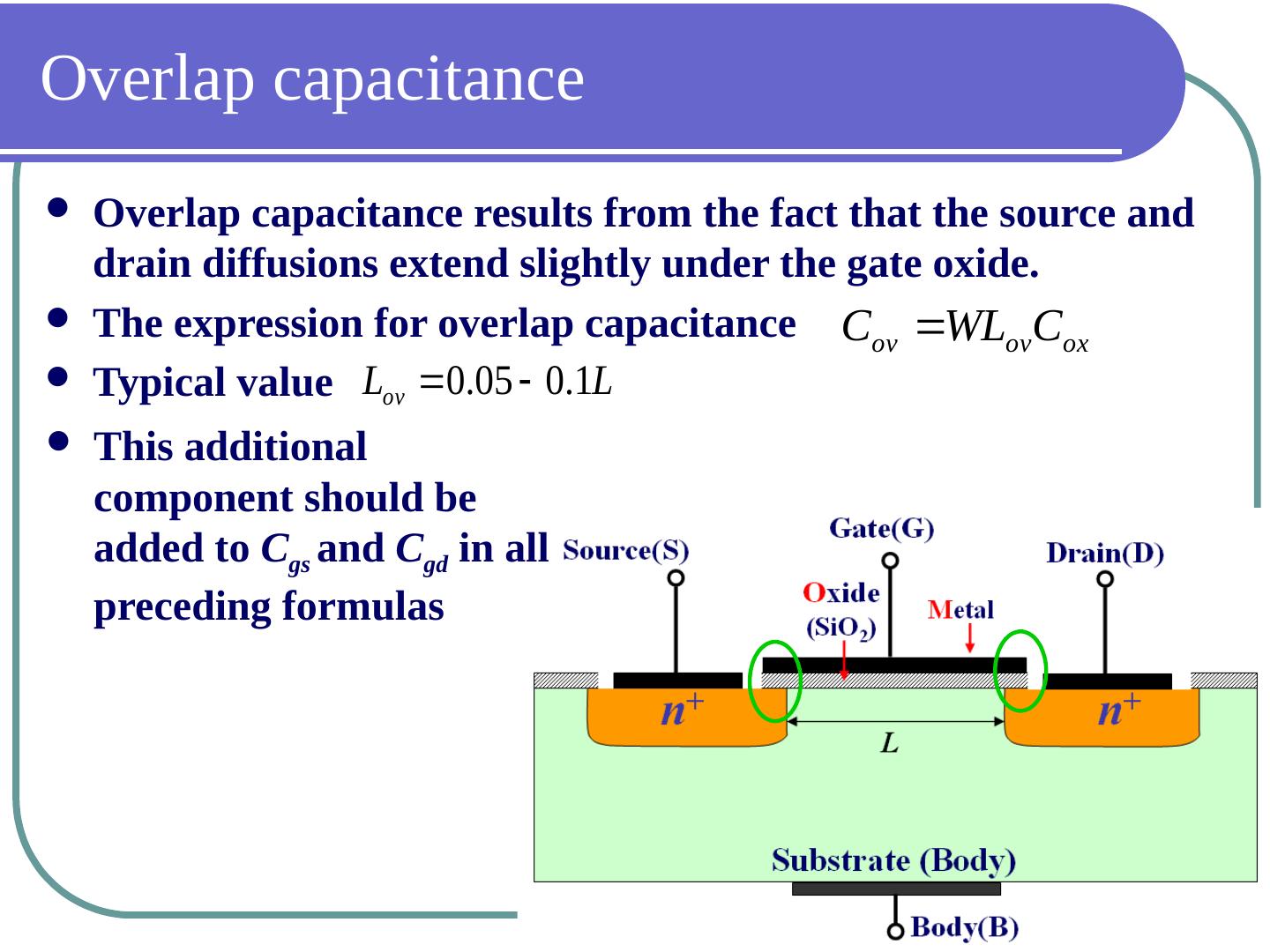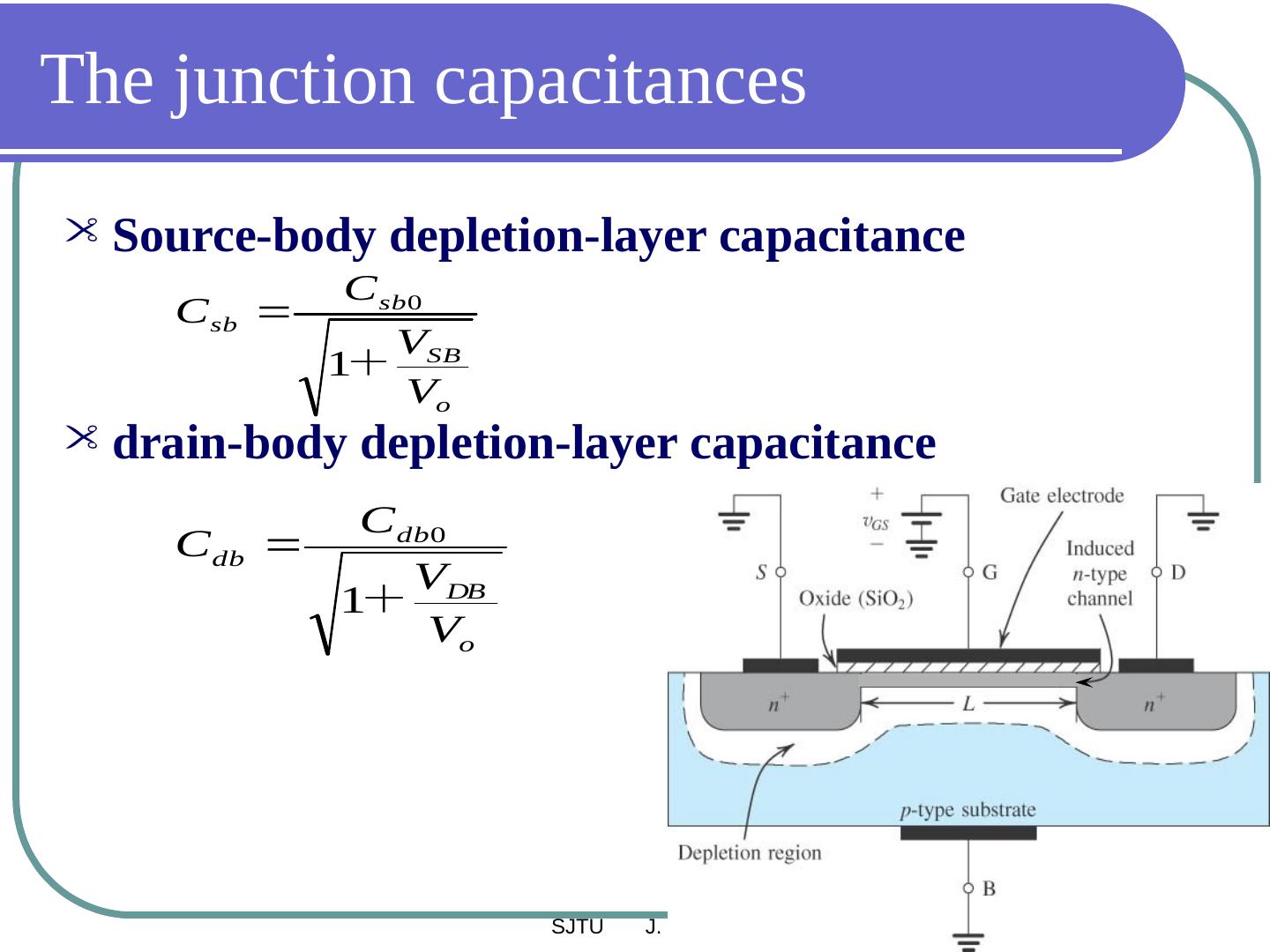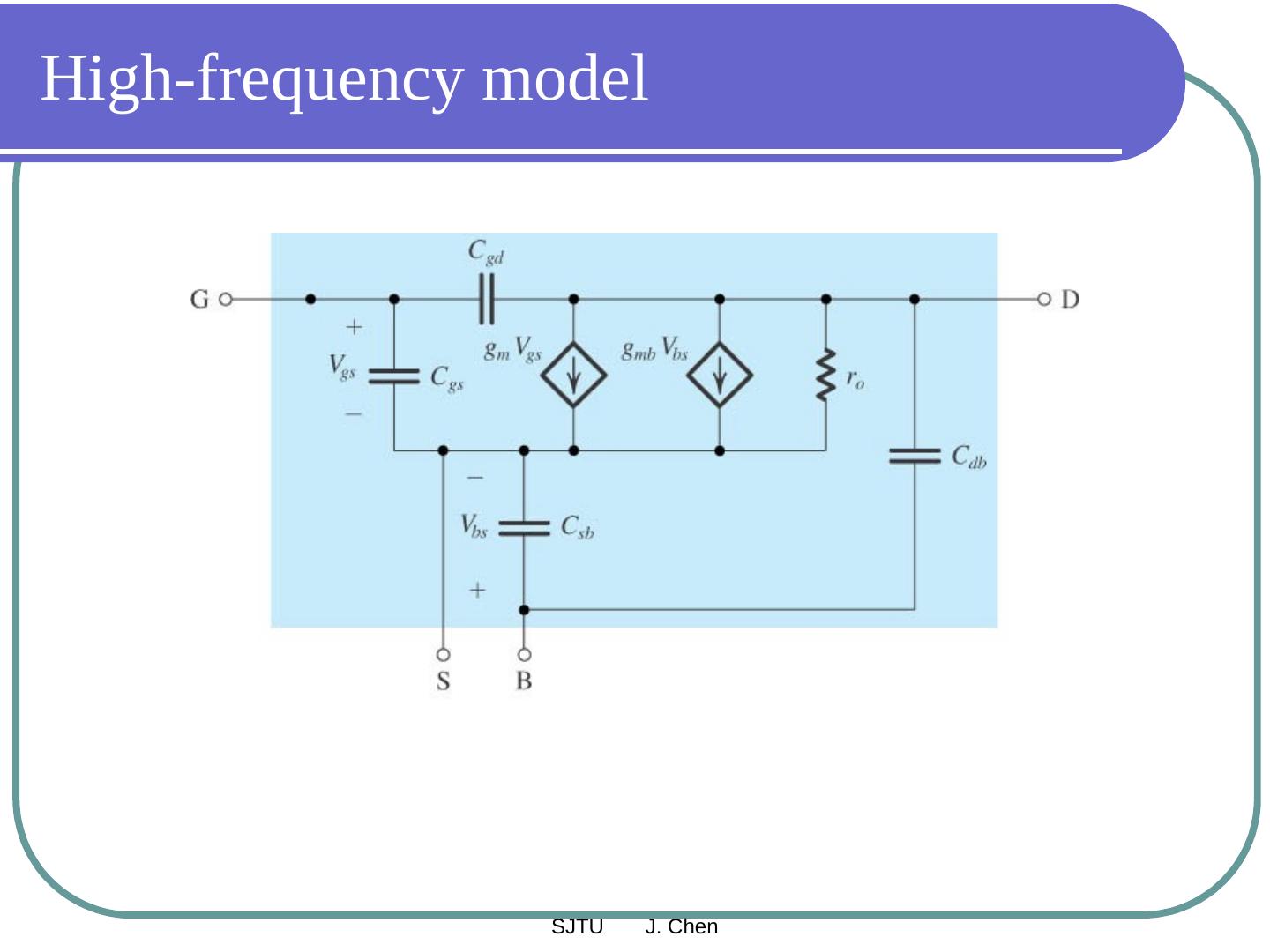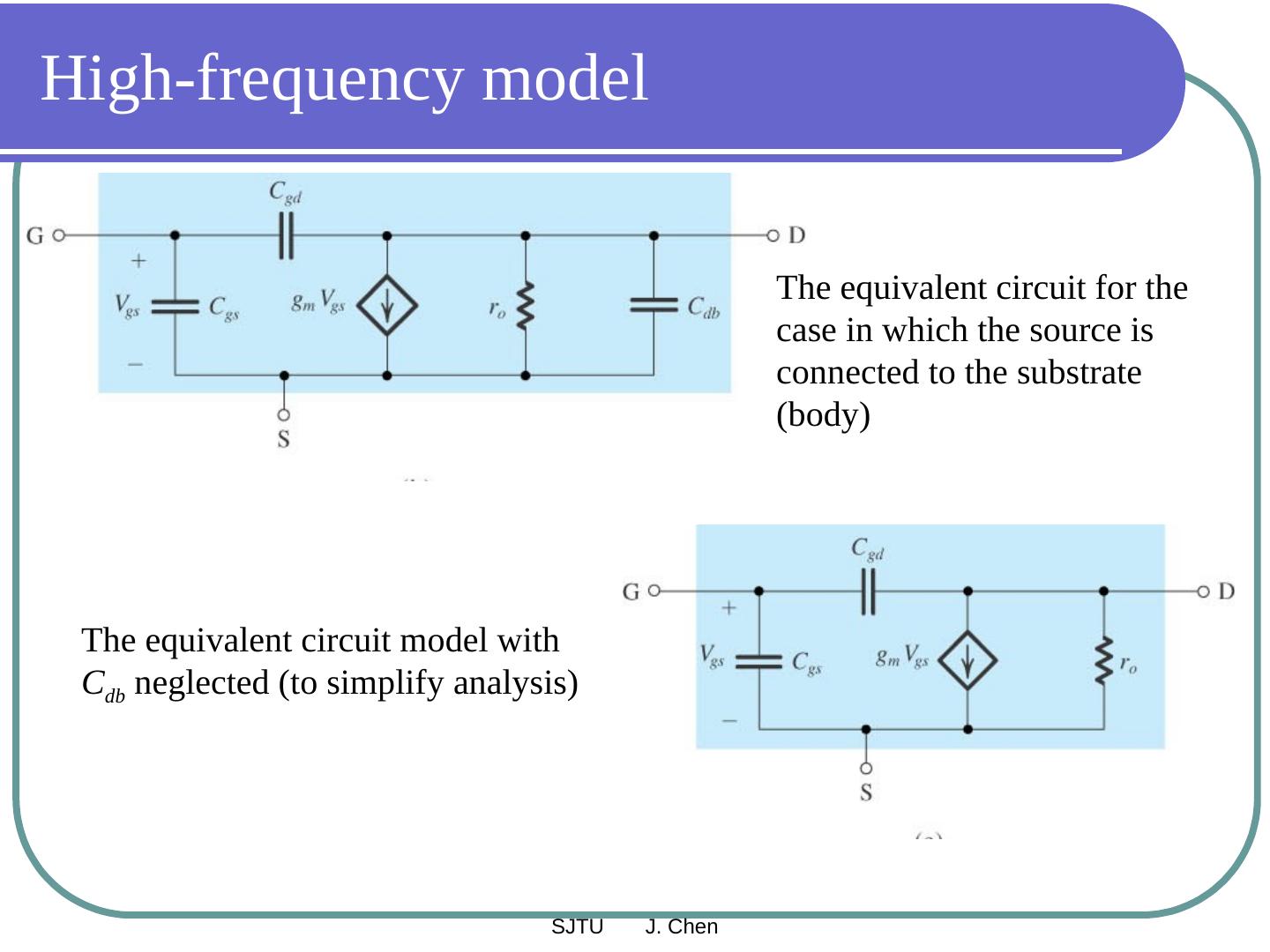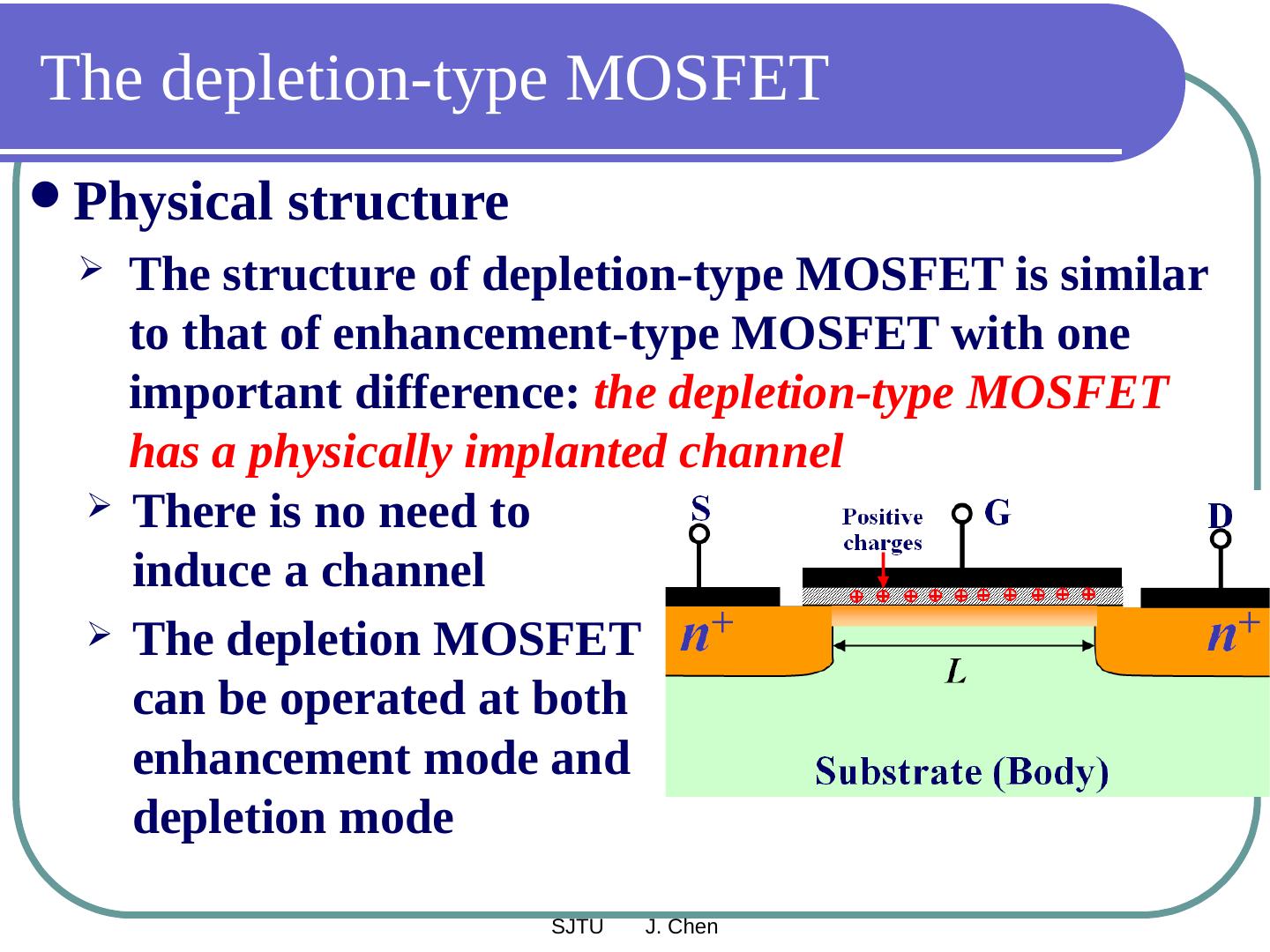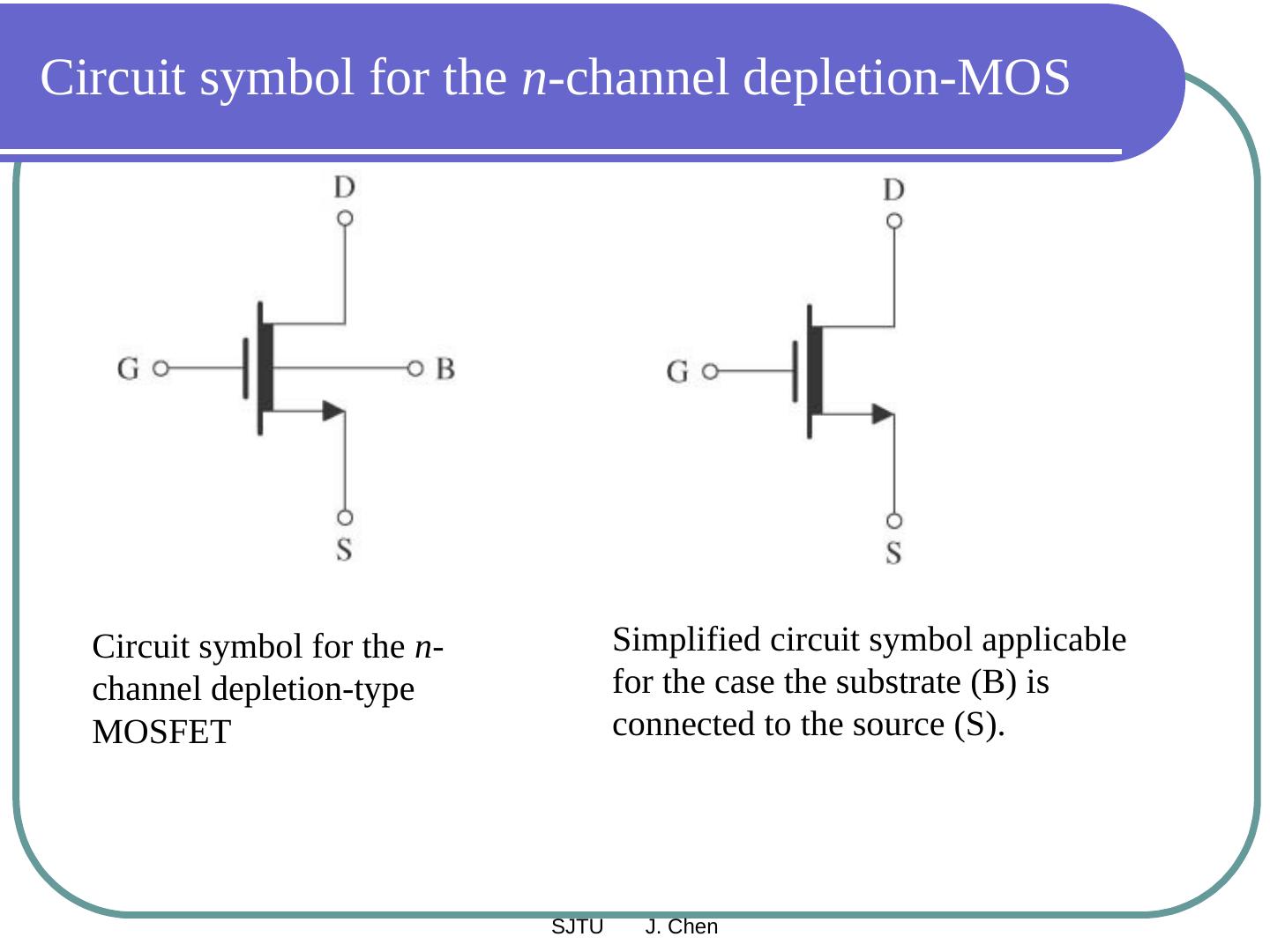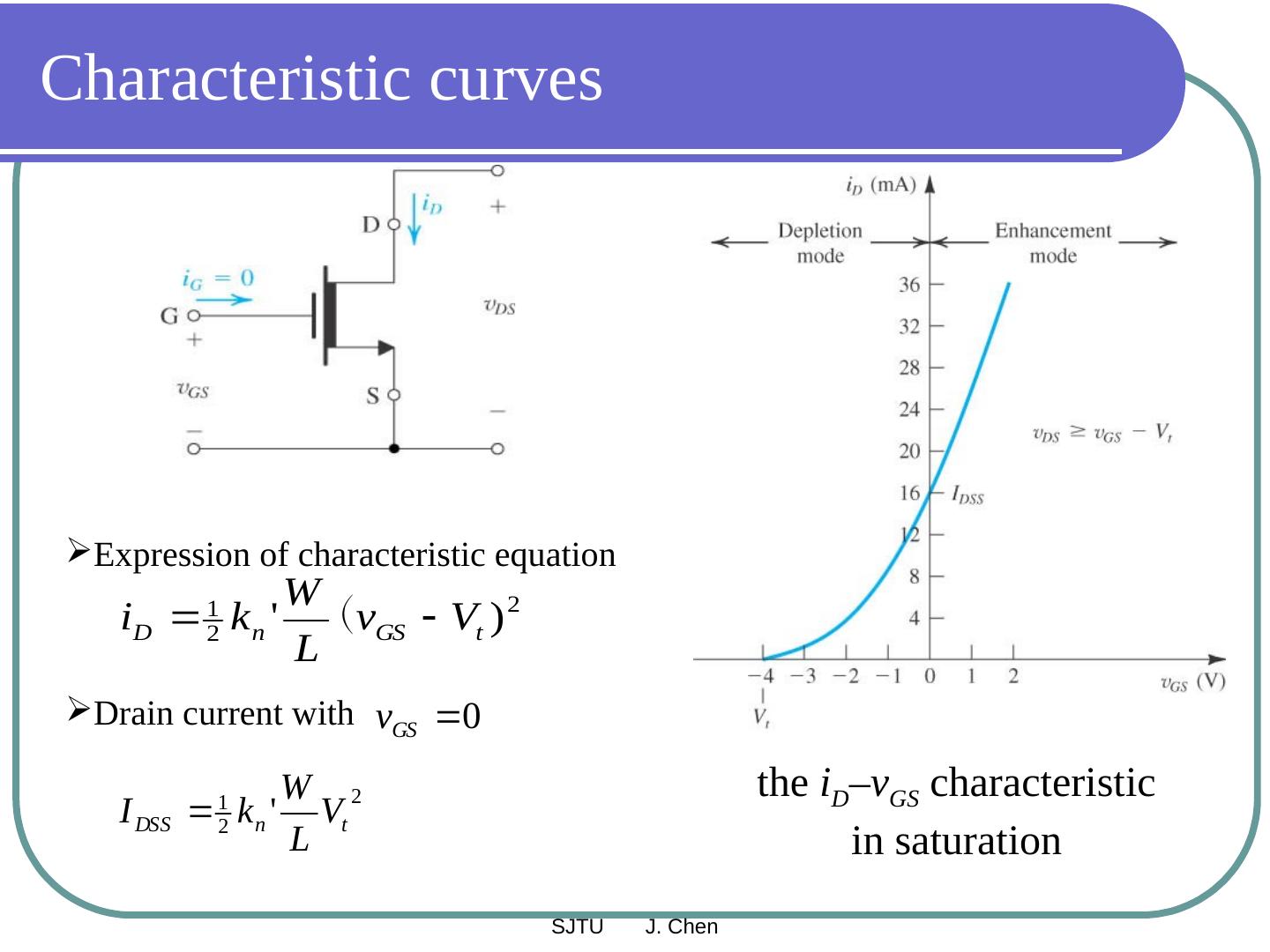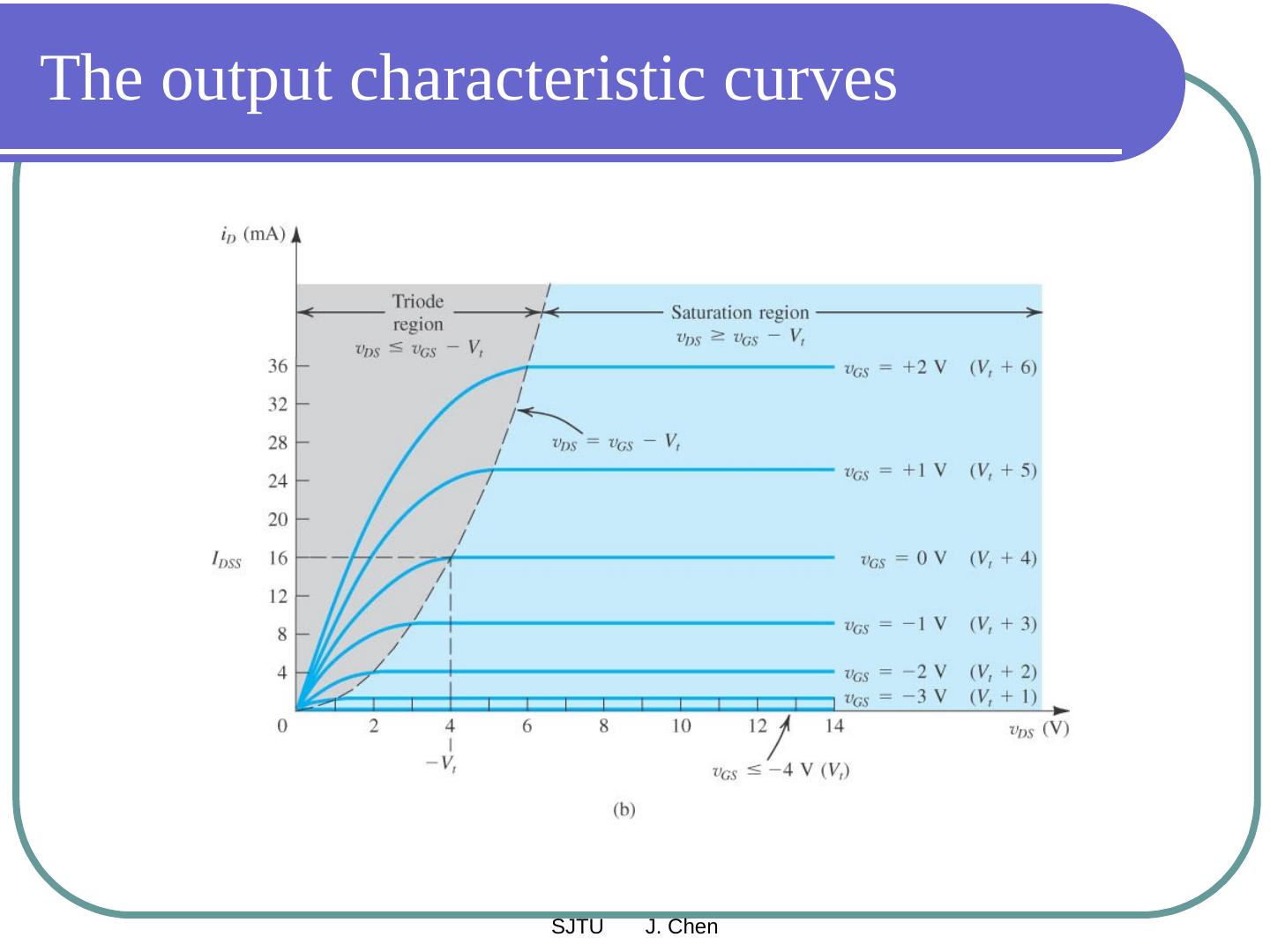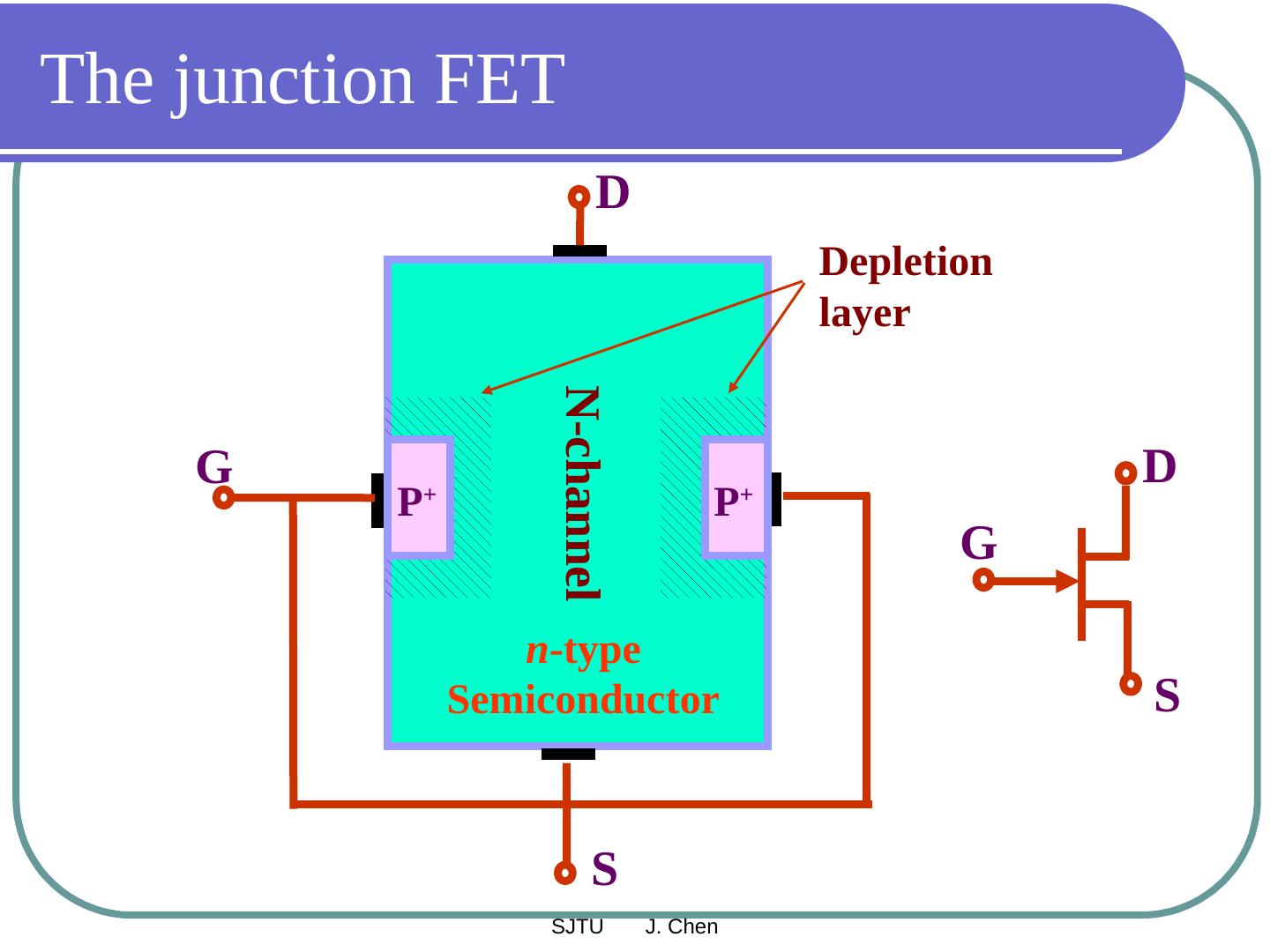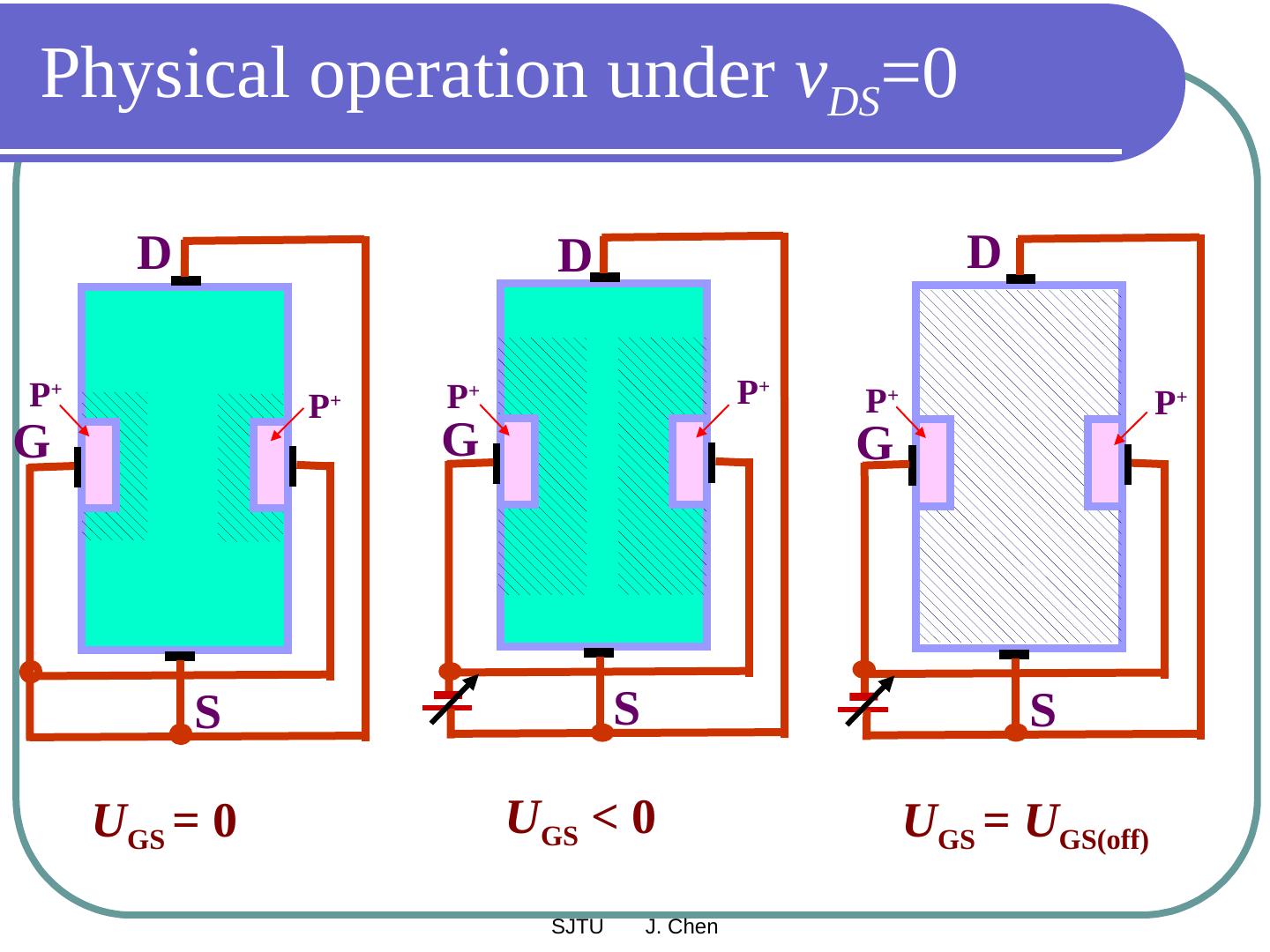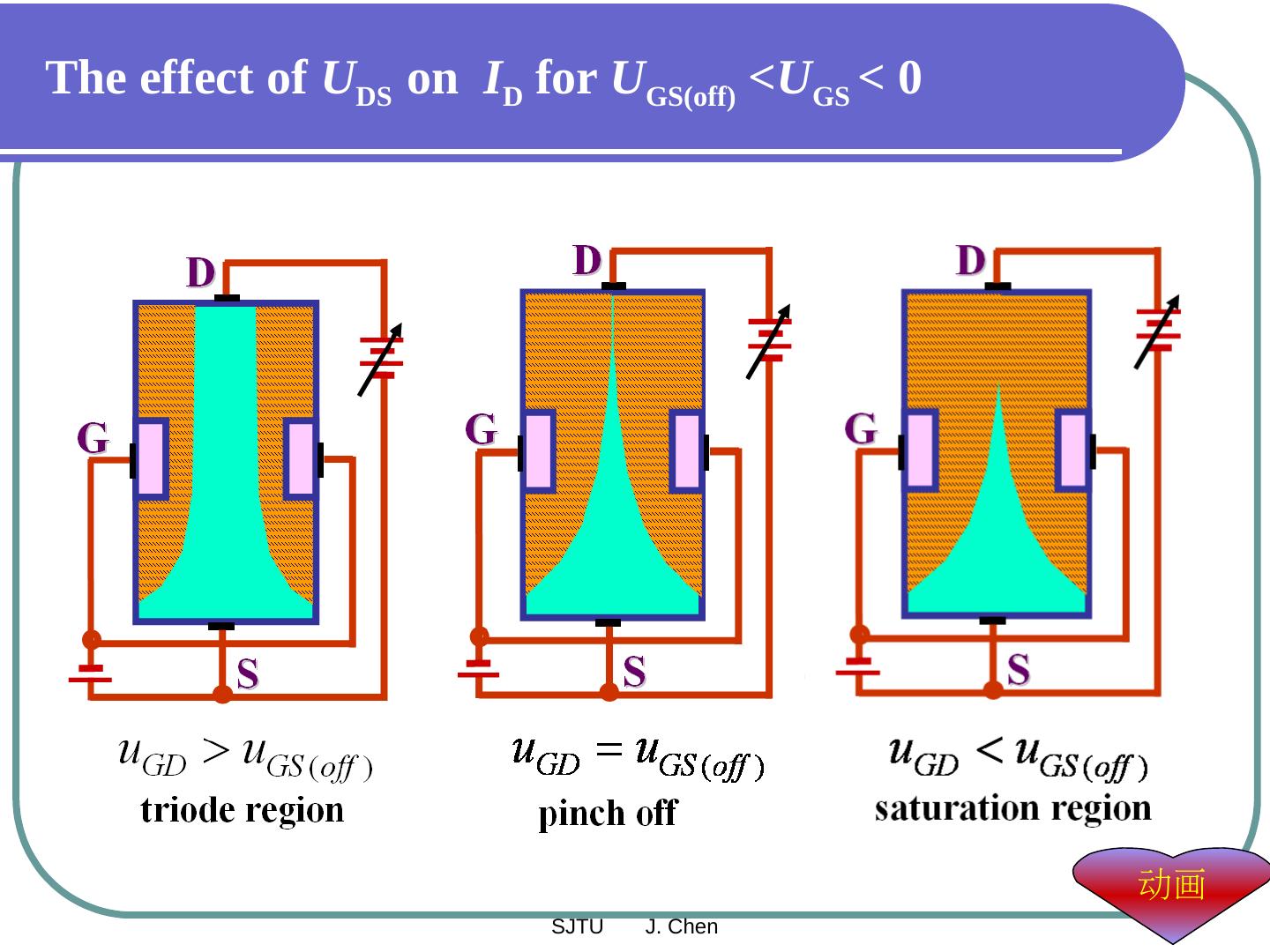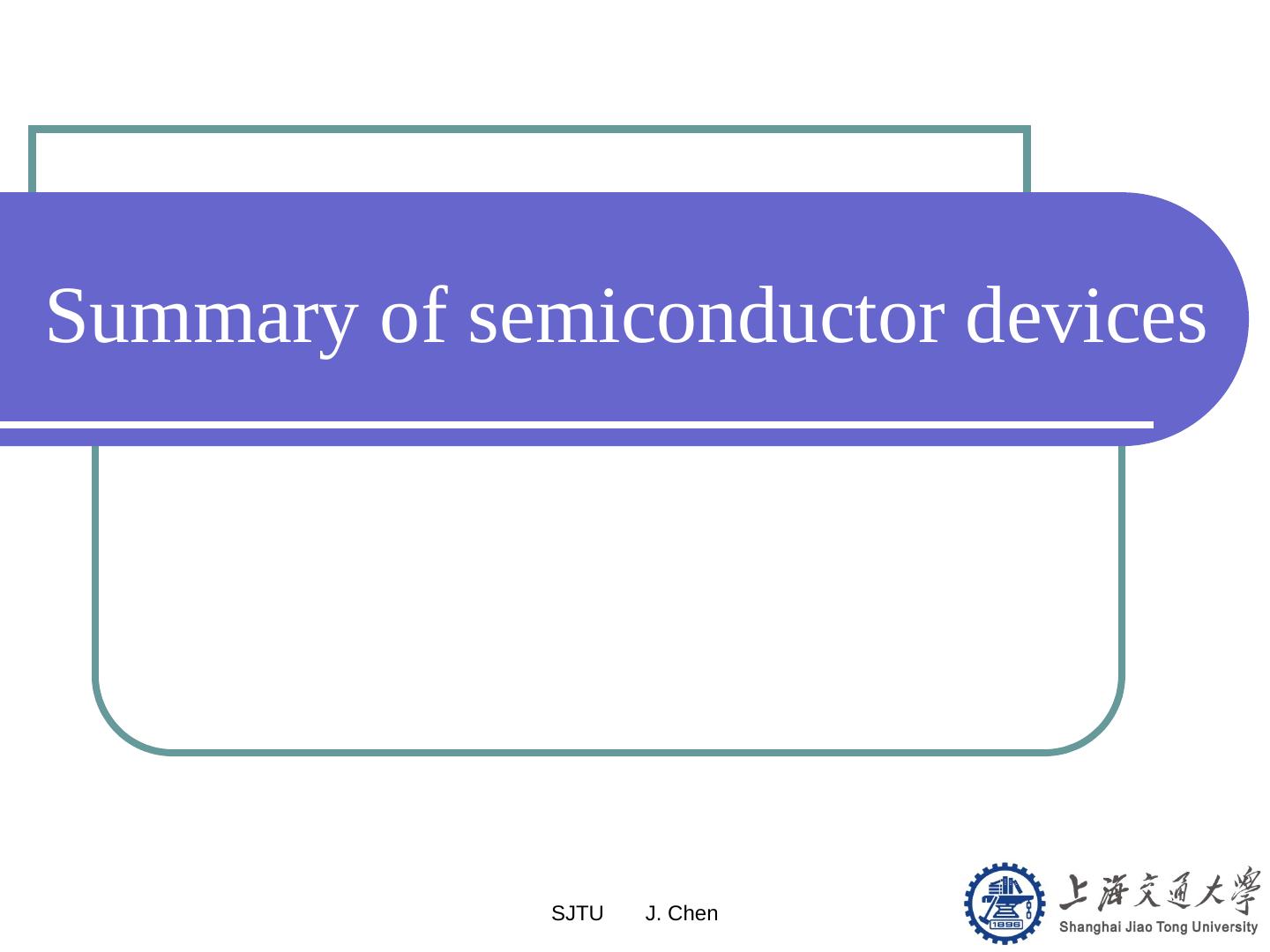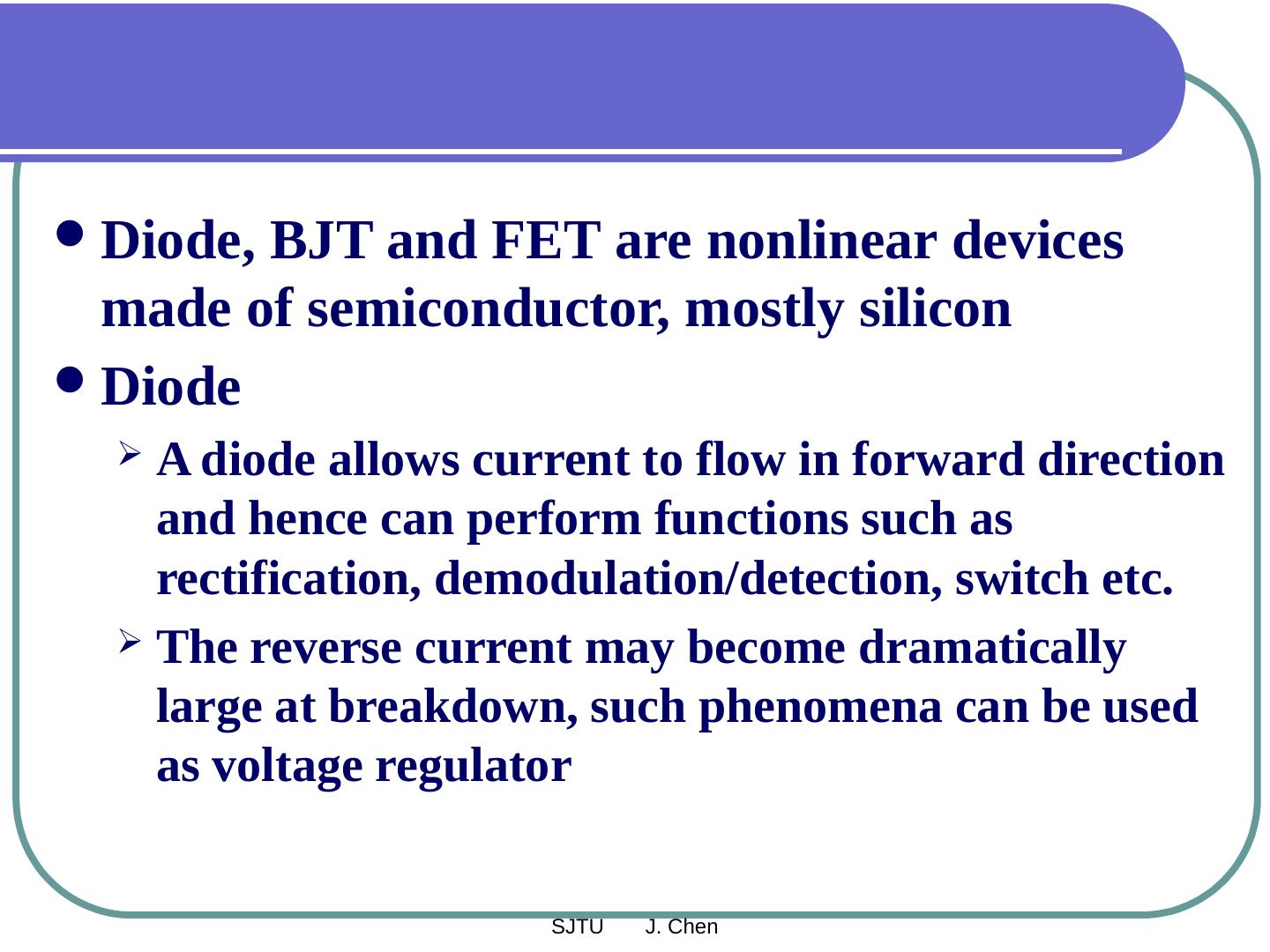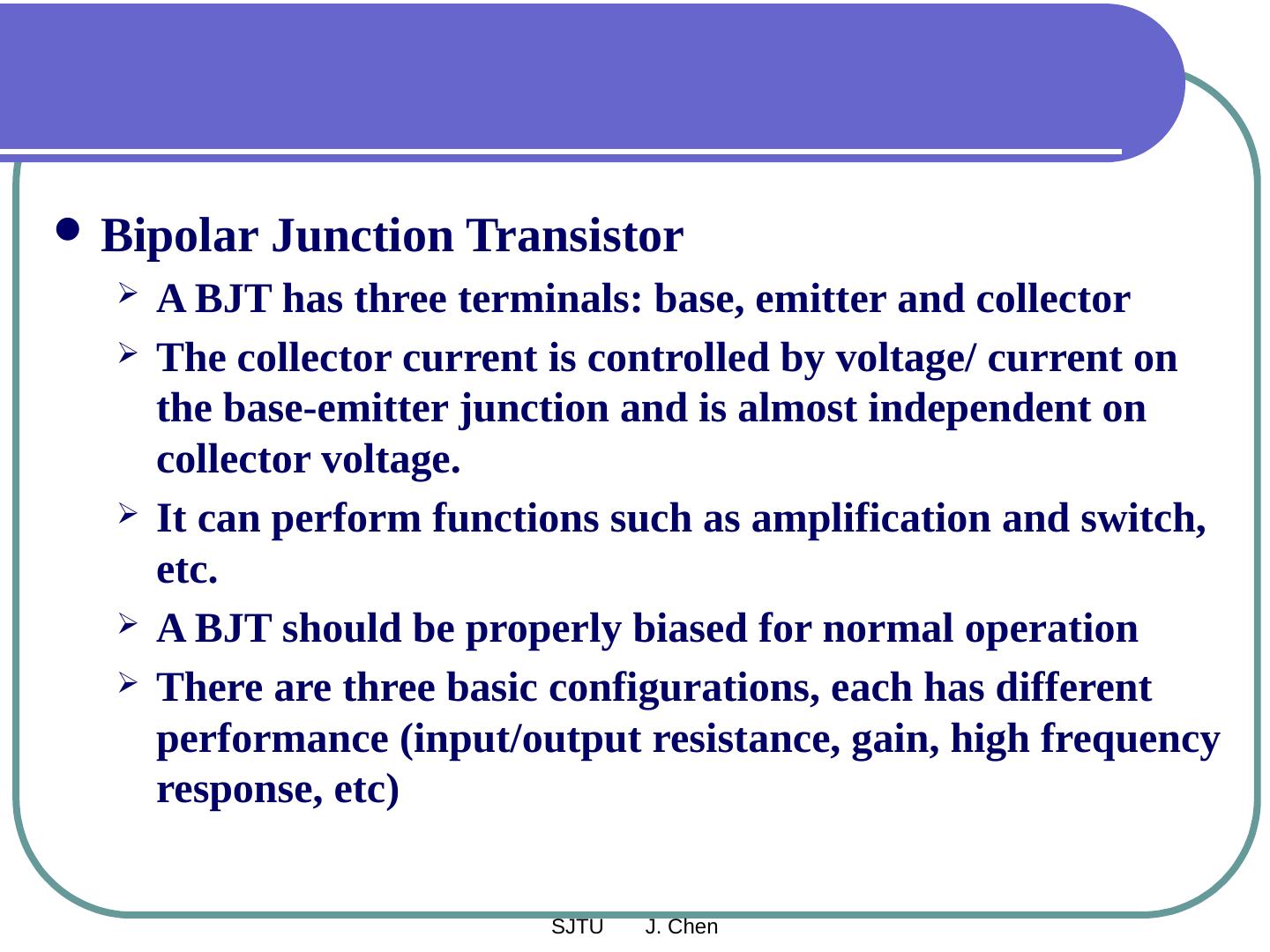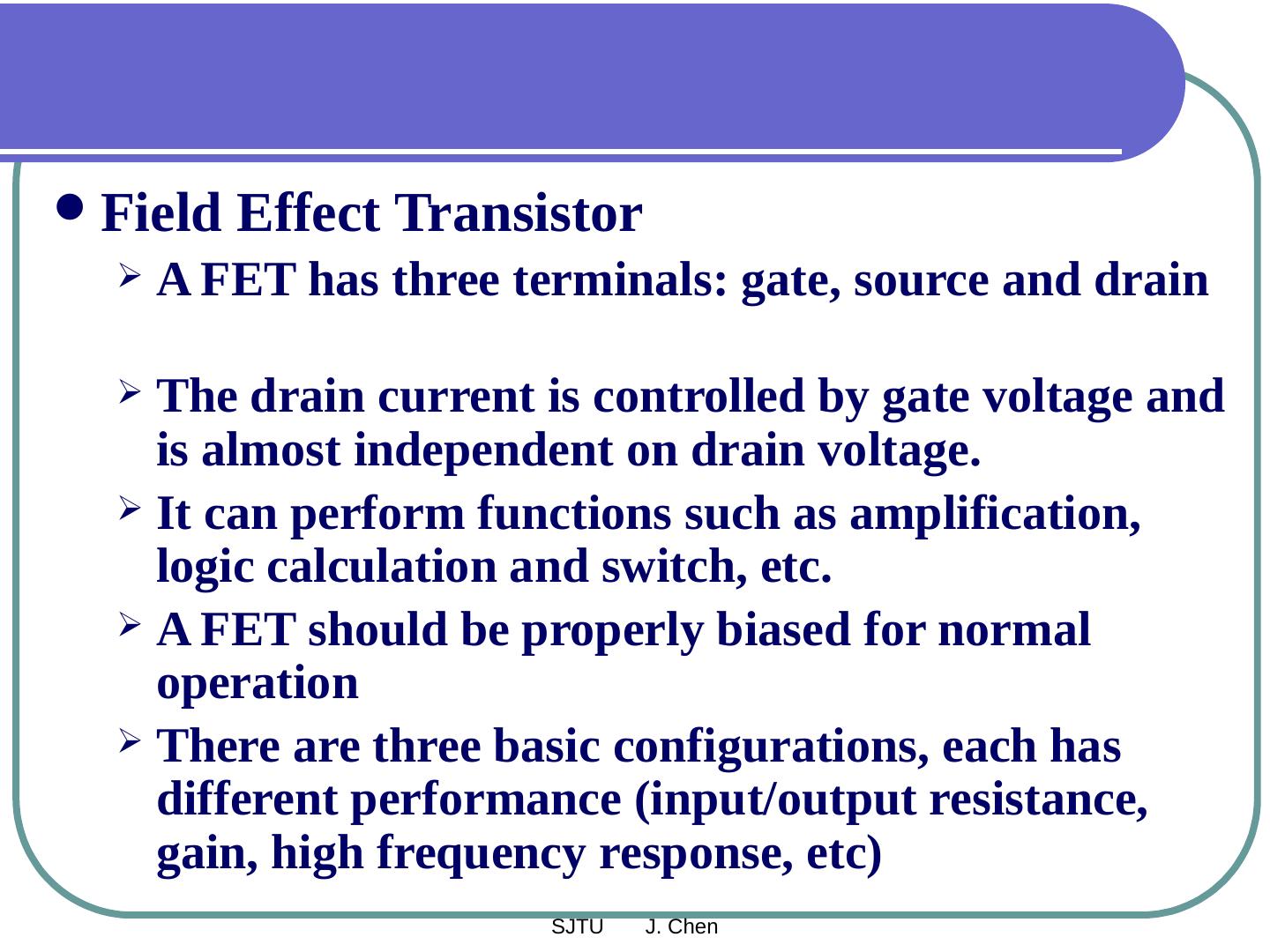- 快召唤伙伴们来围观吧
- 微博 QQ QQ空间 贴吧
- 文档嵌入链接
- 复制
- 微信扫一扫分享
- 已成功复制到剪贴板
效应晶体管(FET)
展开查看详情
1 .SJTU J. Chen Chapter 5 Field-Effect Transistors (FETs)
2 .SJTU J. Chen Content Physical operation and current-voltage characteristics DC analysis Biasing in MOS amplifier circuit and basic configuration
3 .SJTU J. Chen Physical operation and current -voltage characteristics
4 .SJTU J. Chen FET: Field Effect Transistor There are two types MOSFET: metal-oxide-semiconductor FET JFET: Junction FET MOSFET is also called the insulated-gate FET or IGFET. Quite small Simple manufacturing process Low power consumption Widely used in VLSI circuits( >800 million on a single IC chip) Introduction to FET
5 .SJTU J. Chen Device structure of MOSFET ( n -type) p -type S emiconductor Substrate (Body) Body(B) n + n + O xide (SiO 2 ) Source(S) Gate(G) Drain(D) M etal For normal operation, it is needed to create a conducting channel between Source and Drain Channel area
6 .SJTU J. Chen An n channel can be induced at the top of the substrate beneath the gate by appl y i ng a positive voltage to the gate The channel is an inversion layer The value of V GS at which a sufficient number of mobile electrons accumulate to form a conducting channel is c alled the threshold voltage ( V t ) Creating a channel for current flow
7 .SJTU J. Chen L = 0.1 to 3 m m W = 0.2 to 100 m m T ox = 2 to 50 nm Device structure of MOSFET ( n -type) Cross-section view
8 .SJTU J. Chen According to the type of the channel , FETs can be classified as MOSFET N channel P channel JFET P channel N channel Classification of FET Enhancement type Depletion type Enhancement type Depletion type
9 .SJTU J. Chen Drain current under small voltage v DS An NMOS transistor with v GS > V t and with a small v DS applied. The channel depth is uniform and t he device acts as a resistance. The channel conductance is proportional to effective voltage , or excess gate voltage, ( v GS – V t ) . Drain current is proportional to ( v GS – V t ) and v DS .
10 .SJTU J. Chen Drain current under small voltage v DS
11 .SJTU J. Chen The induced channel acquires a tapered shape. Channel resistance increases as v DS is increased. Drain current is controlled by both of the two voltages. Operation as v DS is increased B
12 .SJTU J. Chen When V GD = V t or V GS - V DS = V t , the channel is pinched off Inversion layer disappeared at the drain point Drain current does not disappeared! Channel pinched off
13 .SJTU J. Chen Drain current under pinch off The electrons pass through the pinch off area at very high speed so as the current continuity holds, similar to the water flow at the Yangtze Gorges Pinched-off channel
14 .SJTU J. Chen Drain current is saturated and only controlled by the v GS Drain current under pinch off
15 .SJTU J. Chen v GS creates the channel. Increasing v GS will increase the conductance of the channel. At saturation region only the v GS controls the drain current. At subthreshold region, drain current has the exponential relationship with v GS Drain current controlled by v GS
16 .SJTU J. Chen Two reasons for readers to be familiar with p channel device p channel device Existence in discrete-circuit. More important is the utilization of complementary MOS or CMOS circuits.
17 .SJTU J. Chen Structure of p channel device The substrate is n type and the inversion layer is p type. Carrier is hole. Threshold voltage is negative. All the voltages and currents are opposite to the ones of n channel device. Physical operation is similar to that of n channel device. p channel device
18 .SJTU J. Chen The PMOS transistor is formed in n well. Another arrangement is also possible in which an n -type body is used and the n device is formed in a p well. CMOS is the most widely used of all the analog and digital IC circuits. Complementary MOS or CMOS
19 .SJTU J. Chen Circuit symbol Output characteristic curves Channel length modulation Characteristics of p channel device Body effect Temperature effects and Breakdown Region Current-voltage characteristics
20 .SJTU J. Chen Circuit symbol for the n -channel enhancement-type MOSFET. Modified circuit symbol with an arrowhead on the source terminal to distinguish it from the drain and to indicate device polarity (i.e., n channel). (c) Simplified circuit symbol to be used when the source is connected to the body or when the effect of the body on device operation is unimportant. Circuit symbol
21 .SJTU J. Chen An n -channel enhancement-type MOSFET with v GS and v DS applied and with the normal directions of current flow indicated. The i D – v DS characteristics for a device with k’ n ( W / L ) = 1.0 mA/V 2 . Output characteristic curves of NMOS
22 .SJTU J. Chen Three distinct region Cutoff region Triode region Saturation region Characteristic equations Circuit model Output characteristic curves of NMOS
23 .SJTU J. Chen Biased voltage The transistor is turned off. Operating in cutoff region as a switch. Cutoff r egion
24 .SJTU J. Chen Biased voltage The channel depth changes from uniform to tapered shape. Drain current is controlled not only by v DS but also by v GS Triode r egion process transcon- ductance parameter
25 .SJTU J. Chen Assuming that the draint-source voltage is sufficiently small , t he MOS operates as a linear resistance Triode r egion
26 .SJTU J. Chen Biased voltage The channel is pinched off. Drain current is controlled only by v GS Drain current is independent of v DS and behaves as an ideal current source. Saturation r egion
27 .SJTU J. Chen The i D – v GS characteristic for an enhancement-type NMOS transistor in saturation V t = 1 V, k’ n W / L = 1.0 mA/V 2 Square law of i D – v GS characteristic curve. Saturation r egion
28 .SJTU J. Chen Explanation for channel length modulation Pinched point moves to source terminal with the voltage v DS increased. Effective channel length reduced Channel resistance decreased Drain current increases with the voltage v DS increased. Current drain is modified by the channel length modulation Channel l ength m odulation
29 .SJTU J. Chen The MOSFET parameter V A depends on the process technology and, for a given process, is proportional to the channel length L . Channel l ength m odulation




